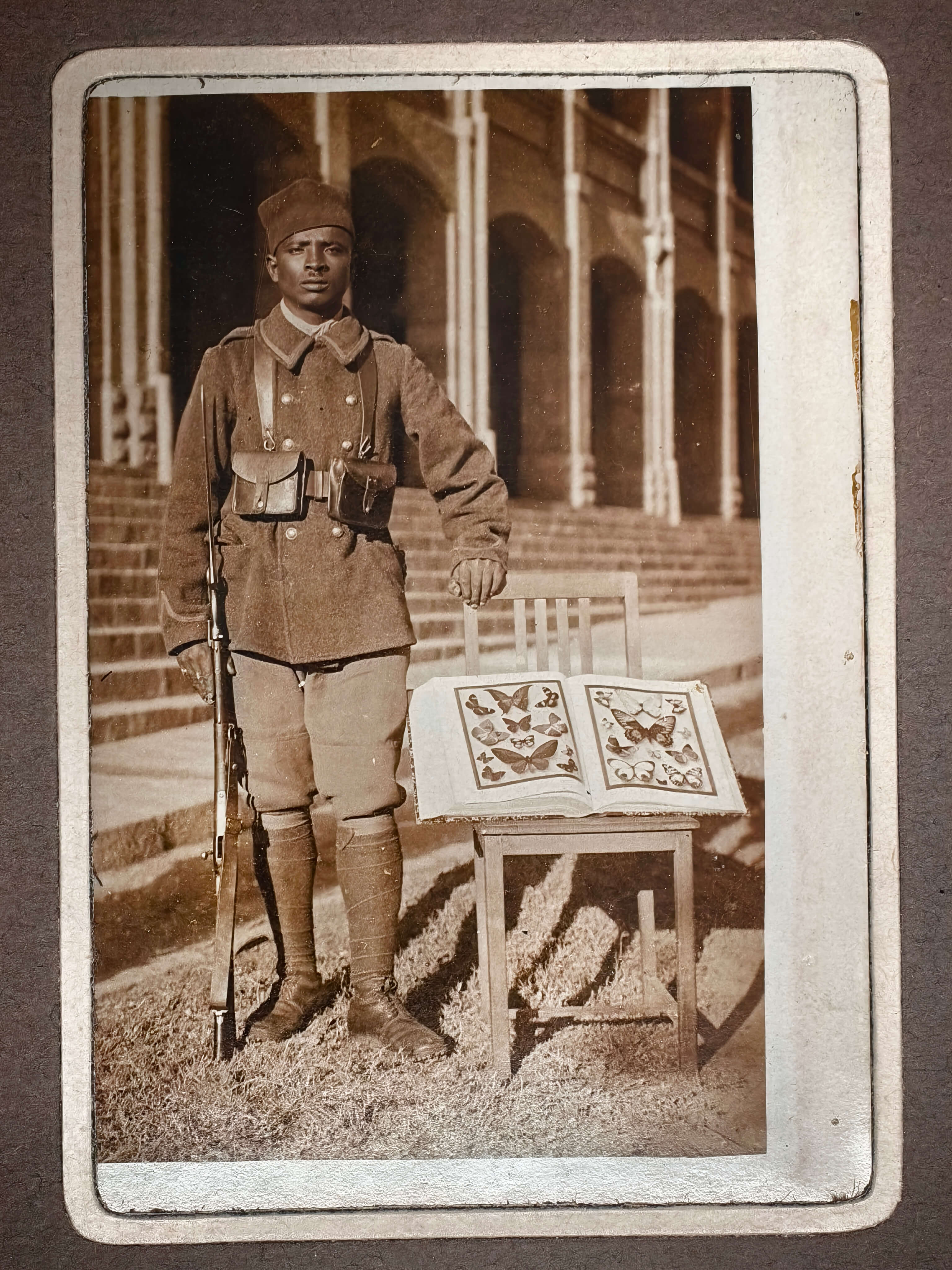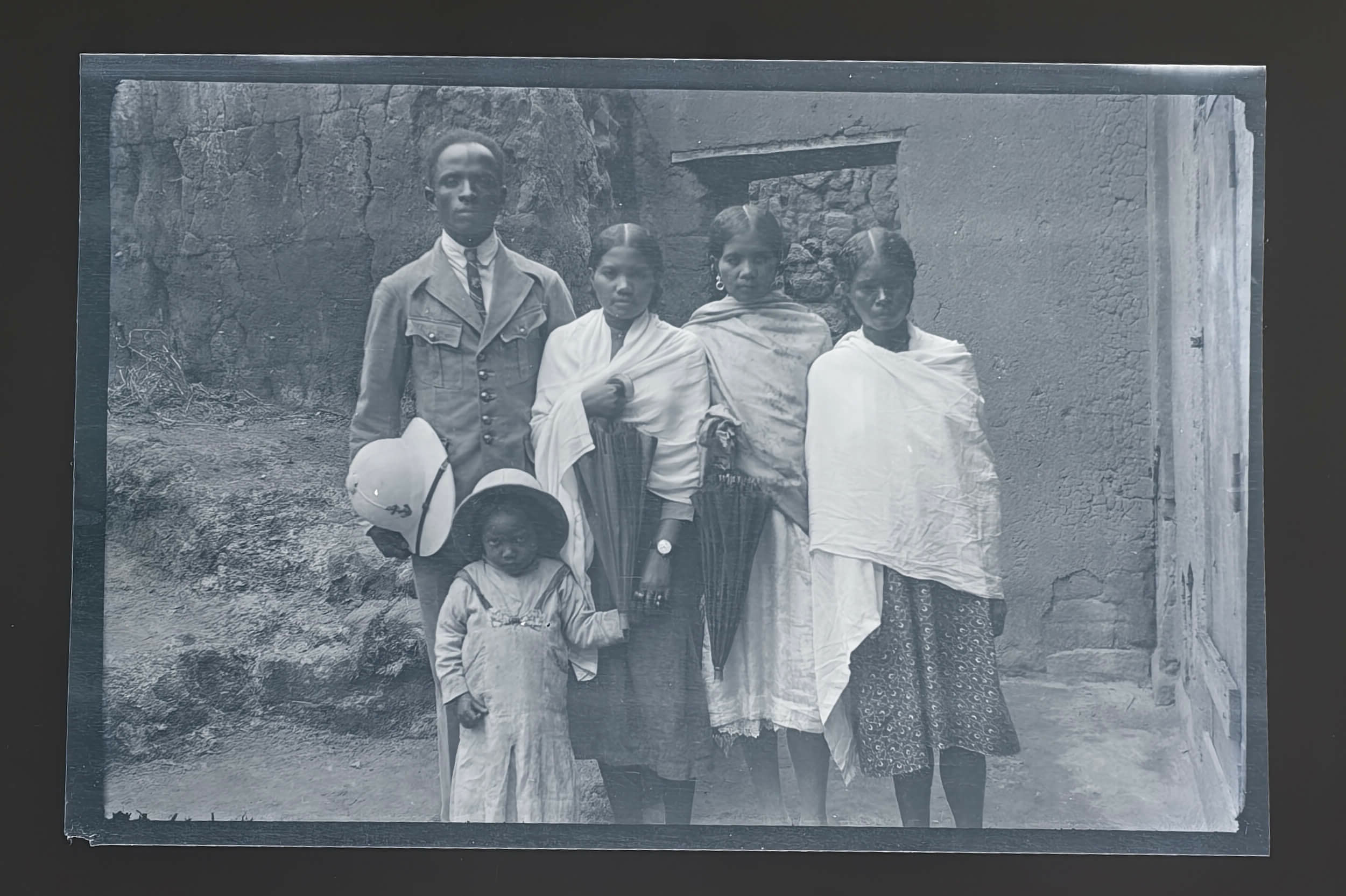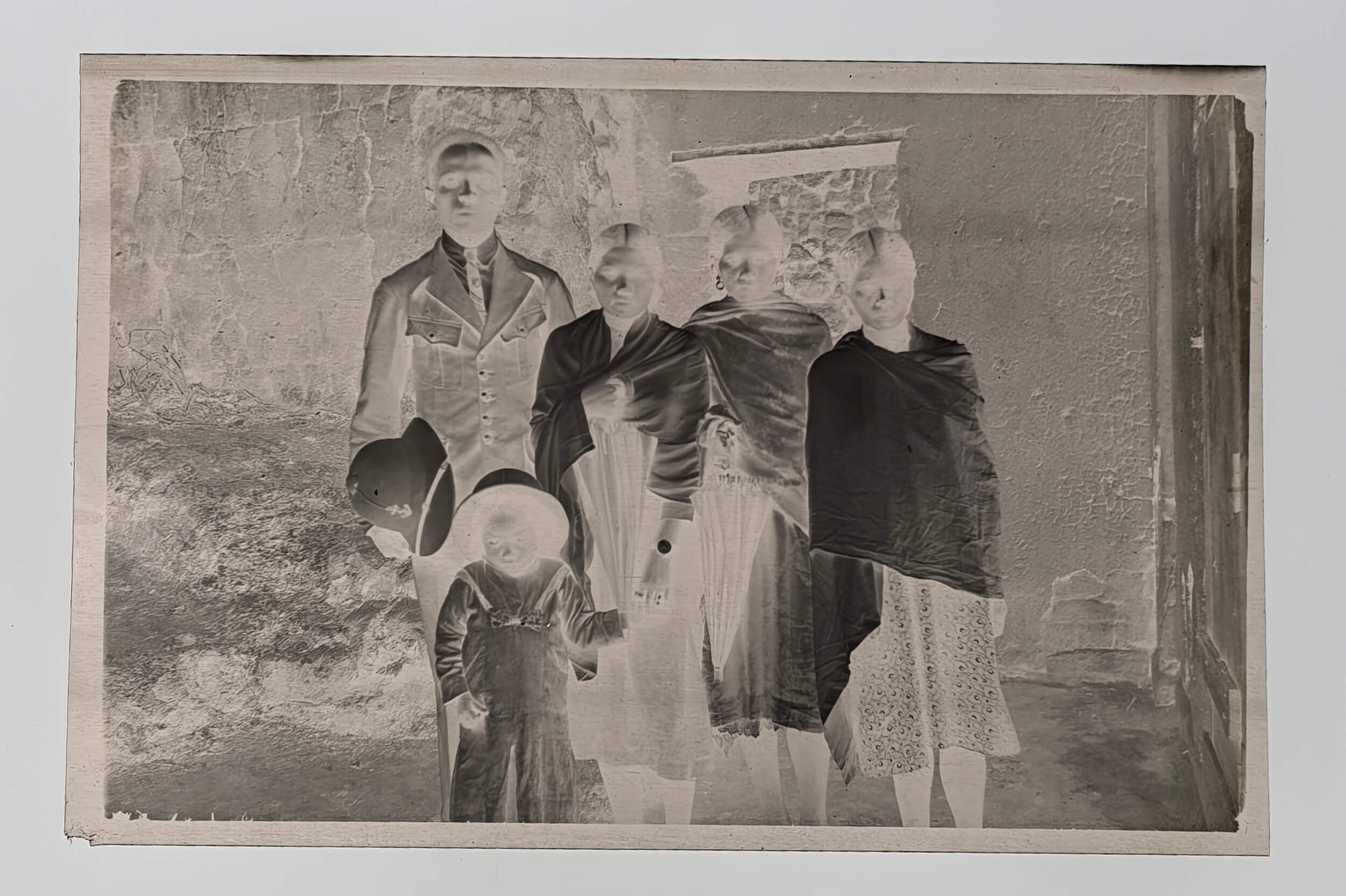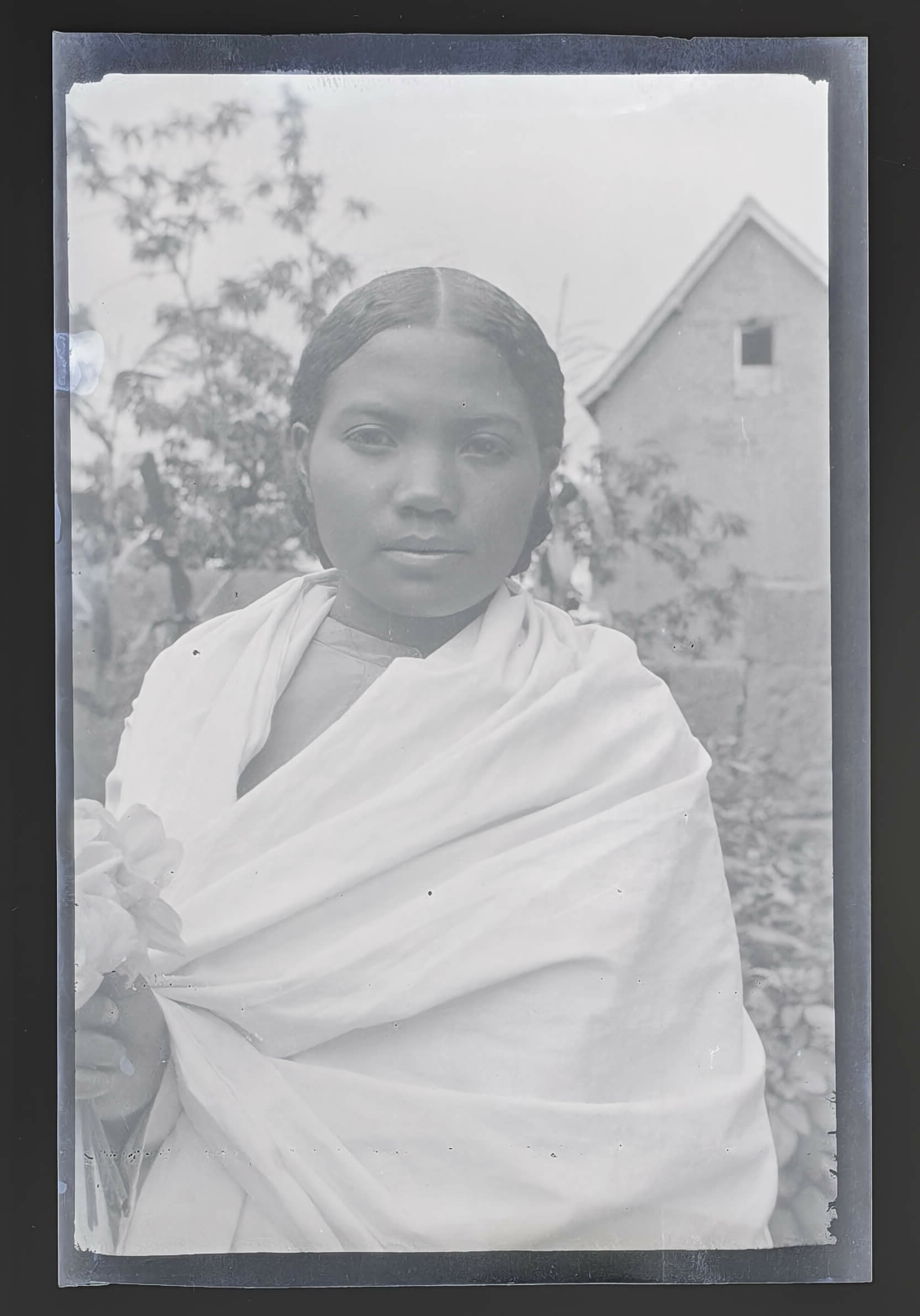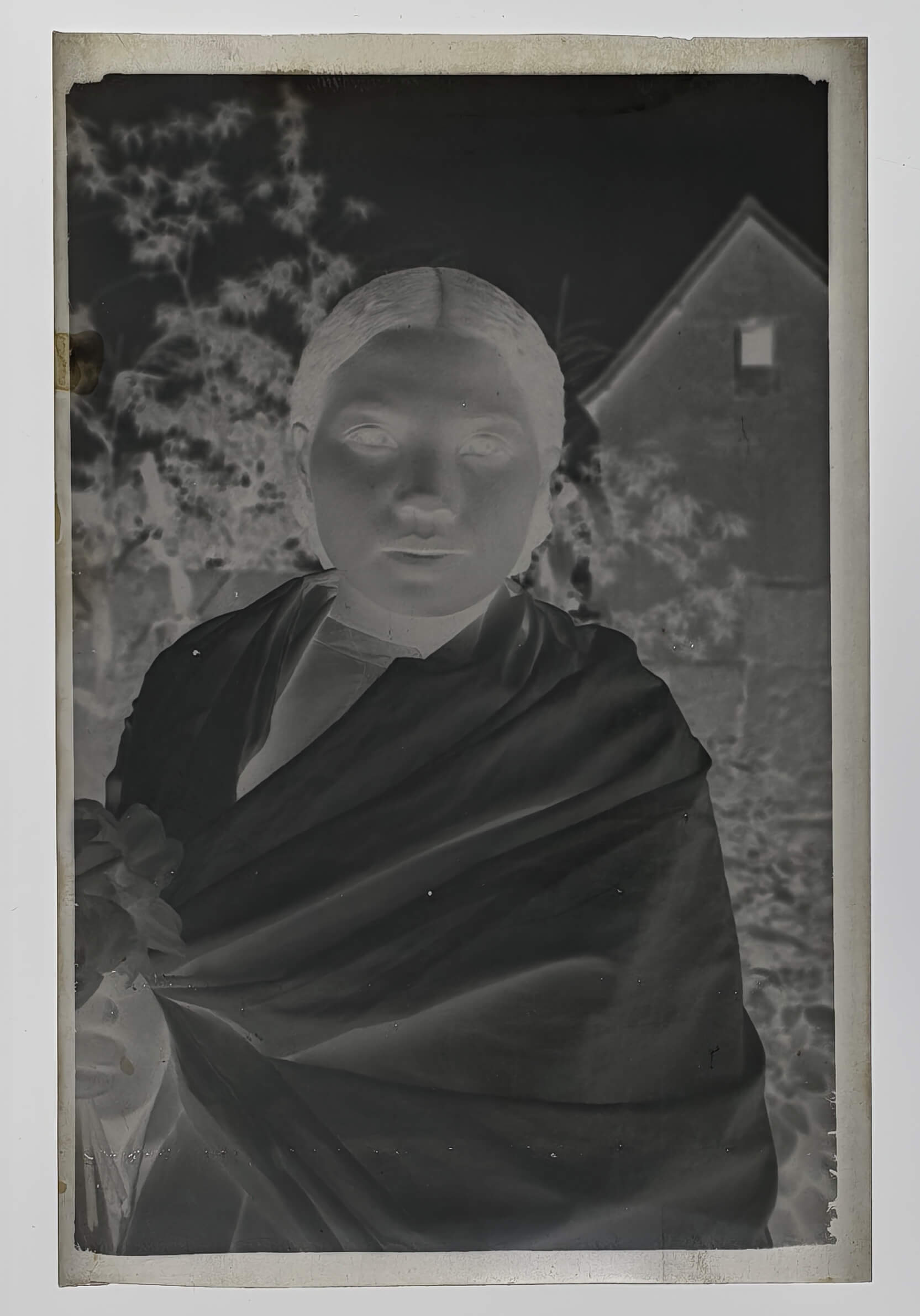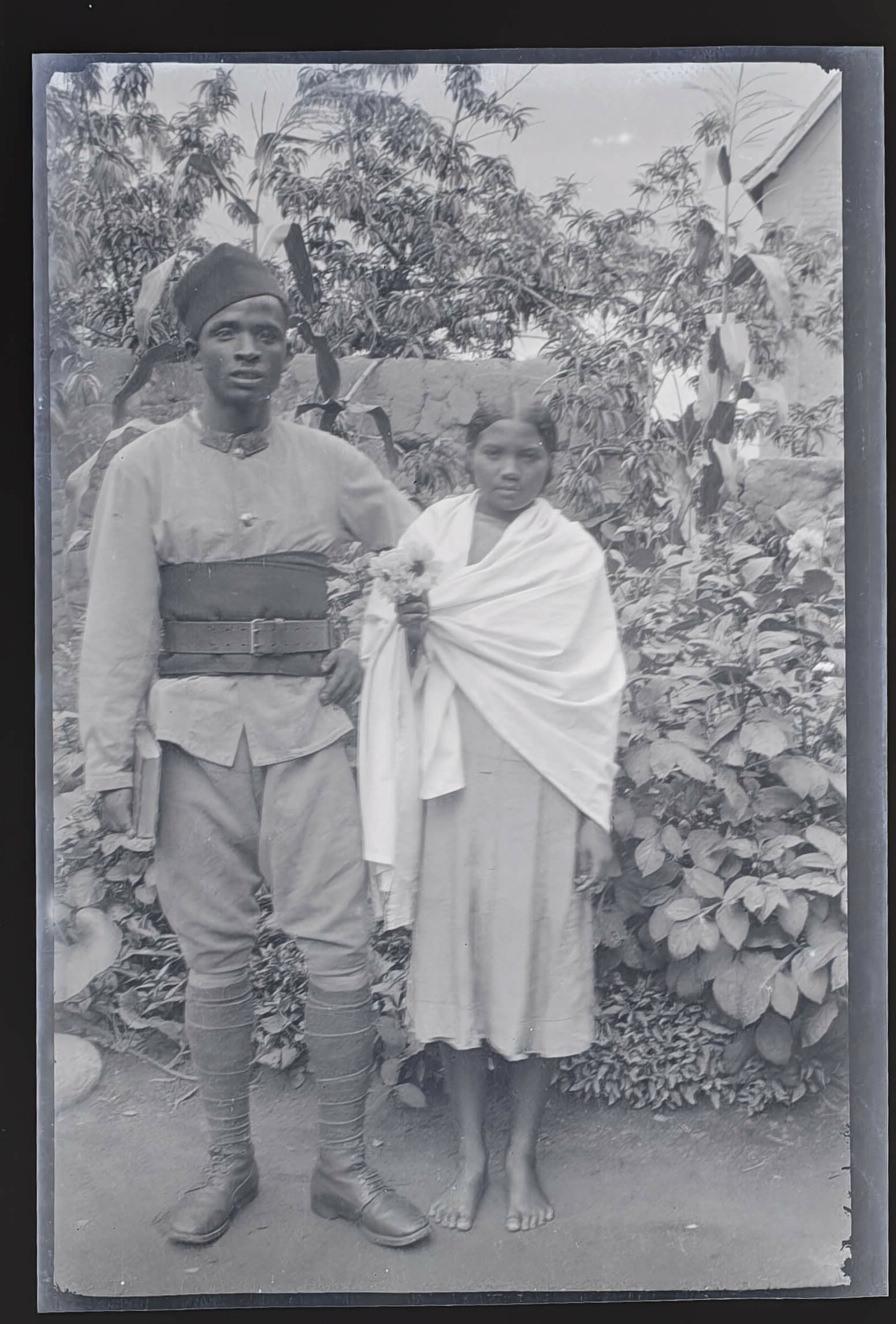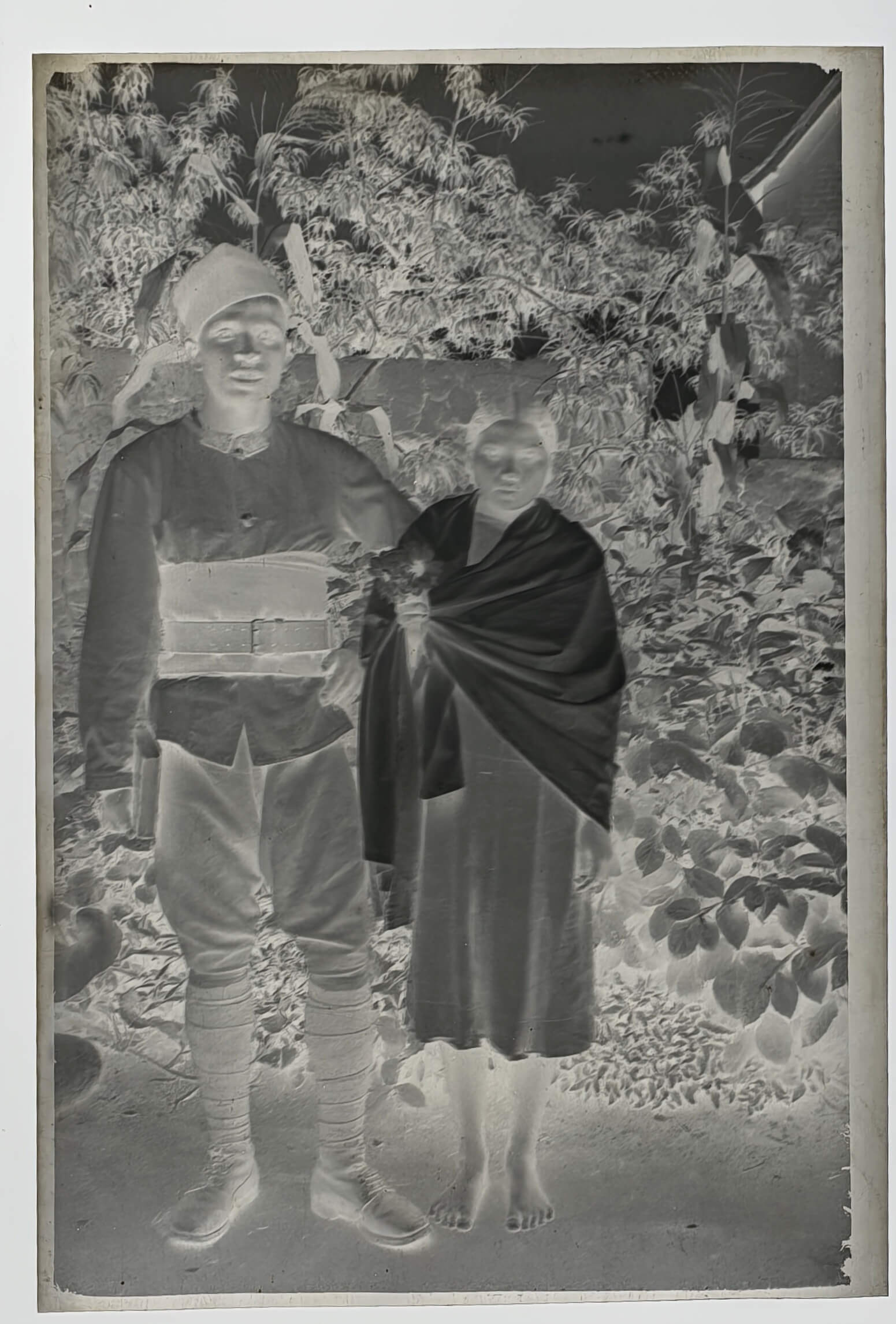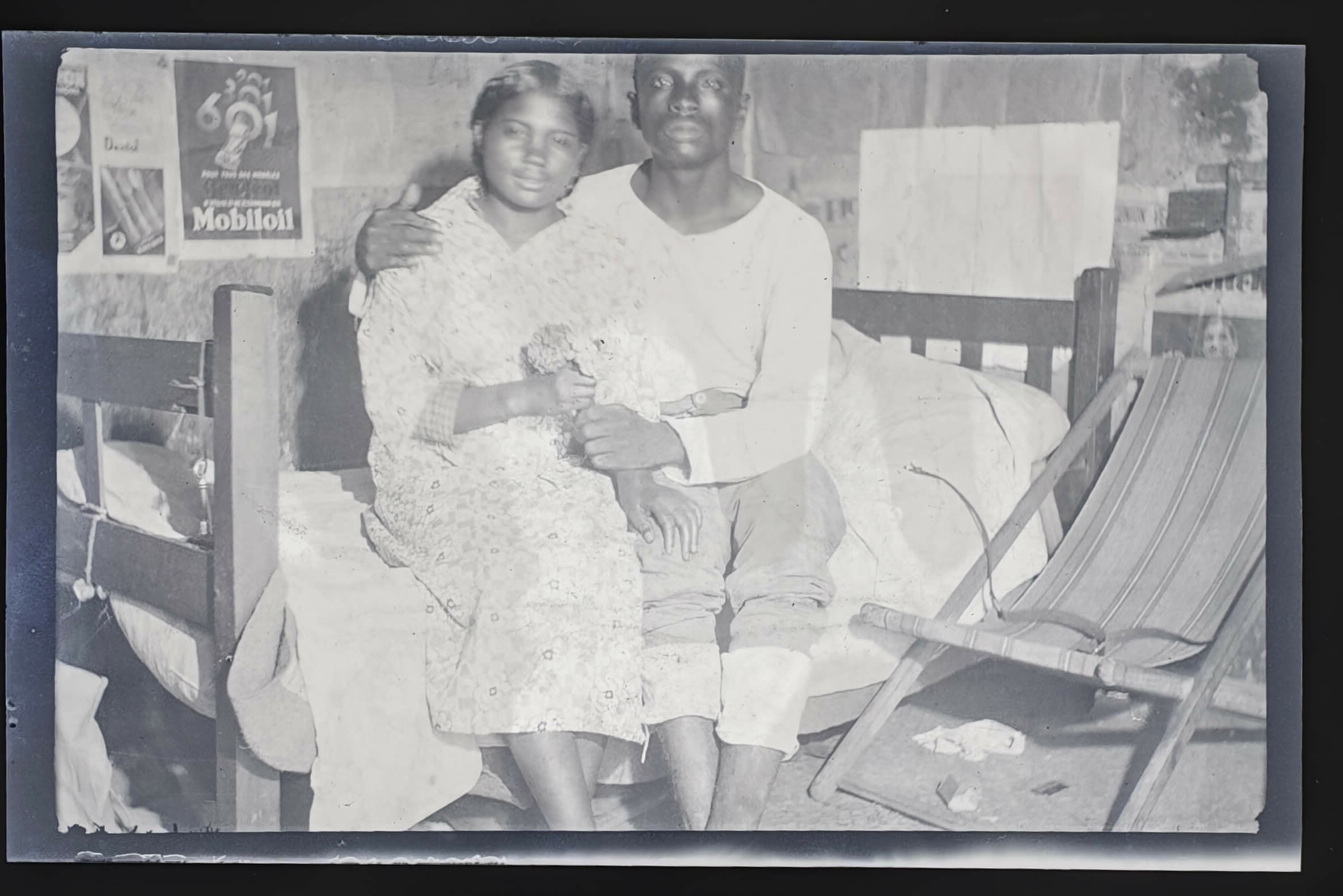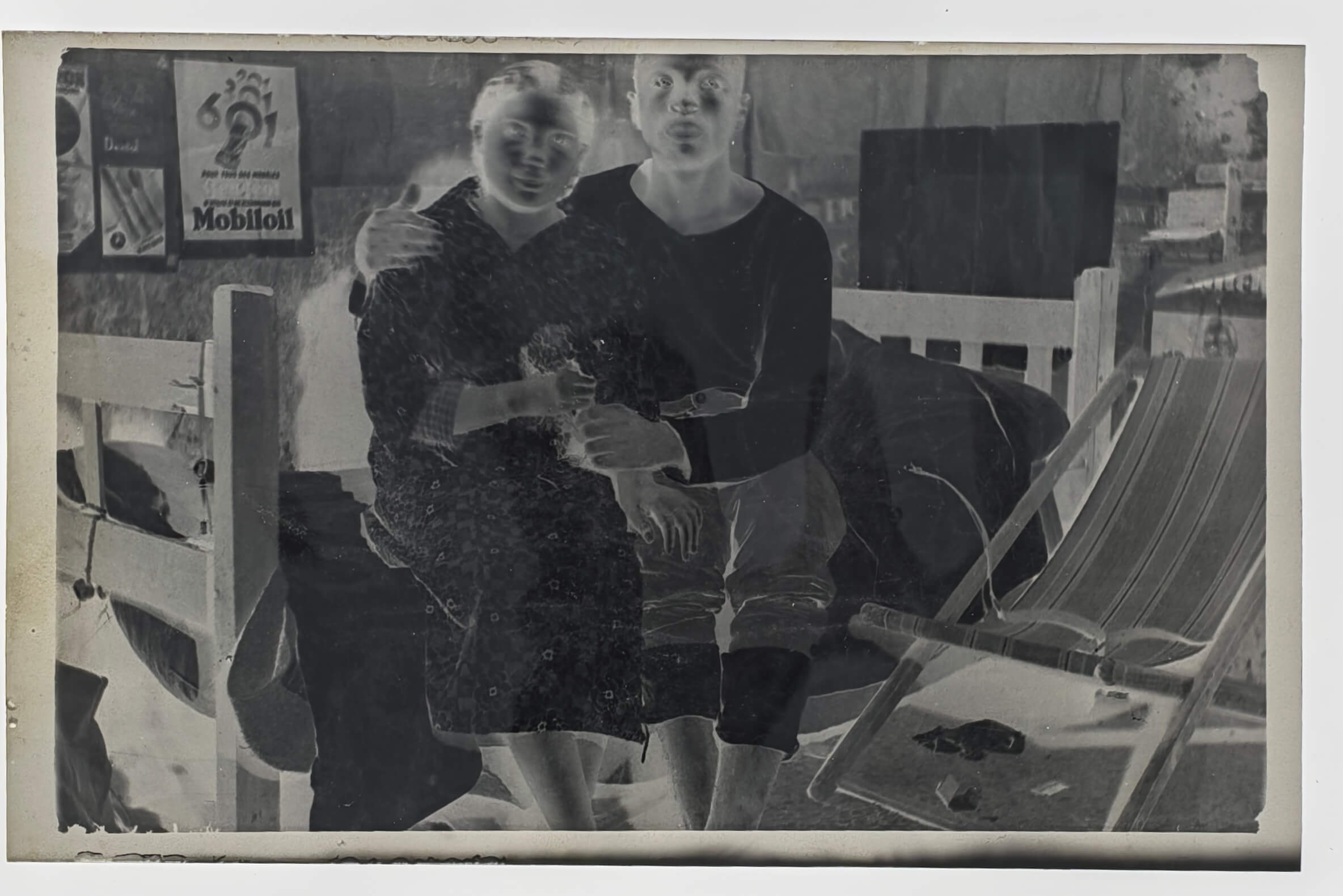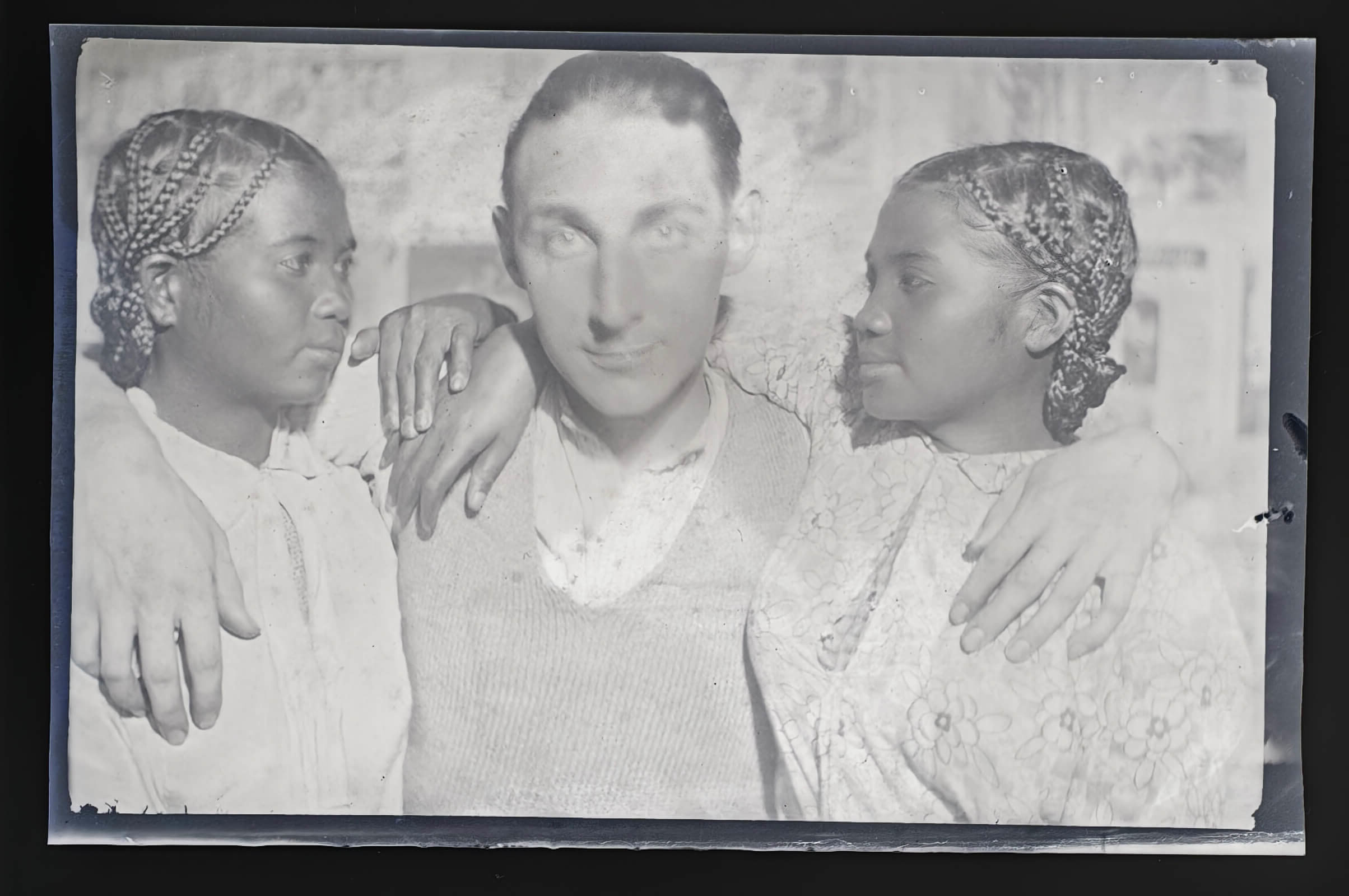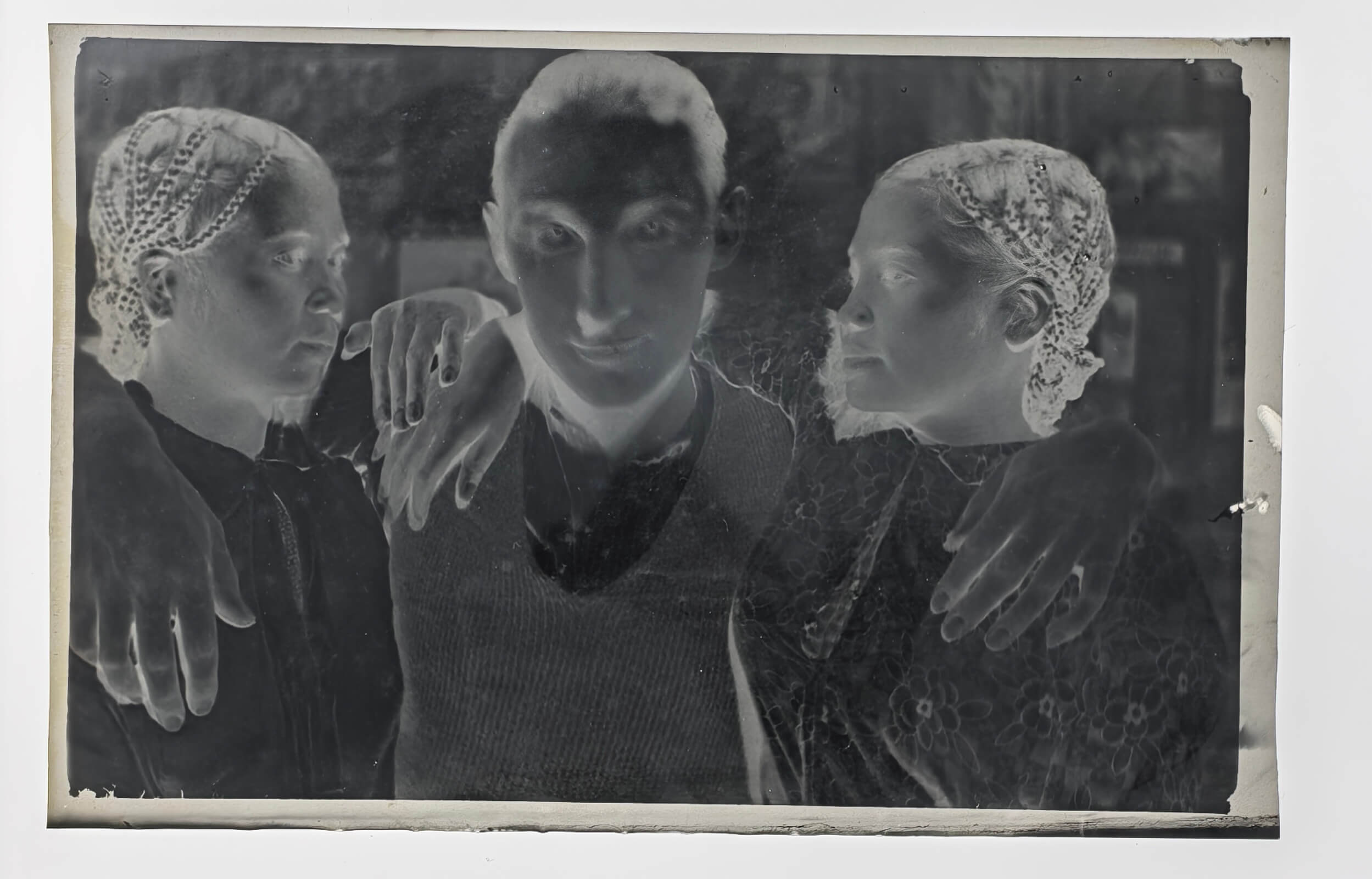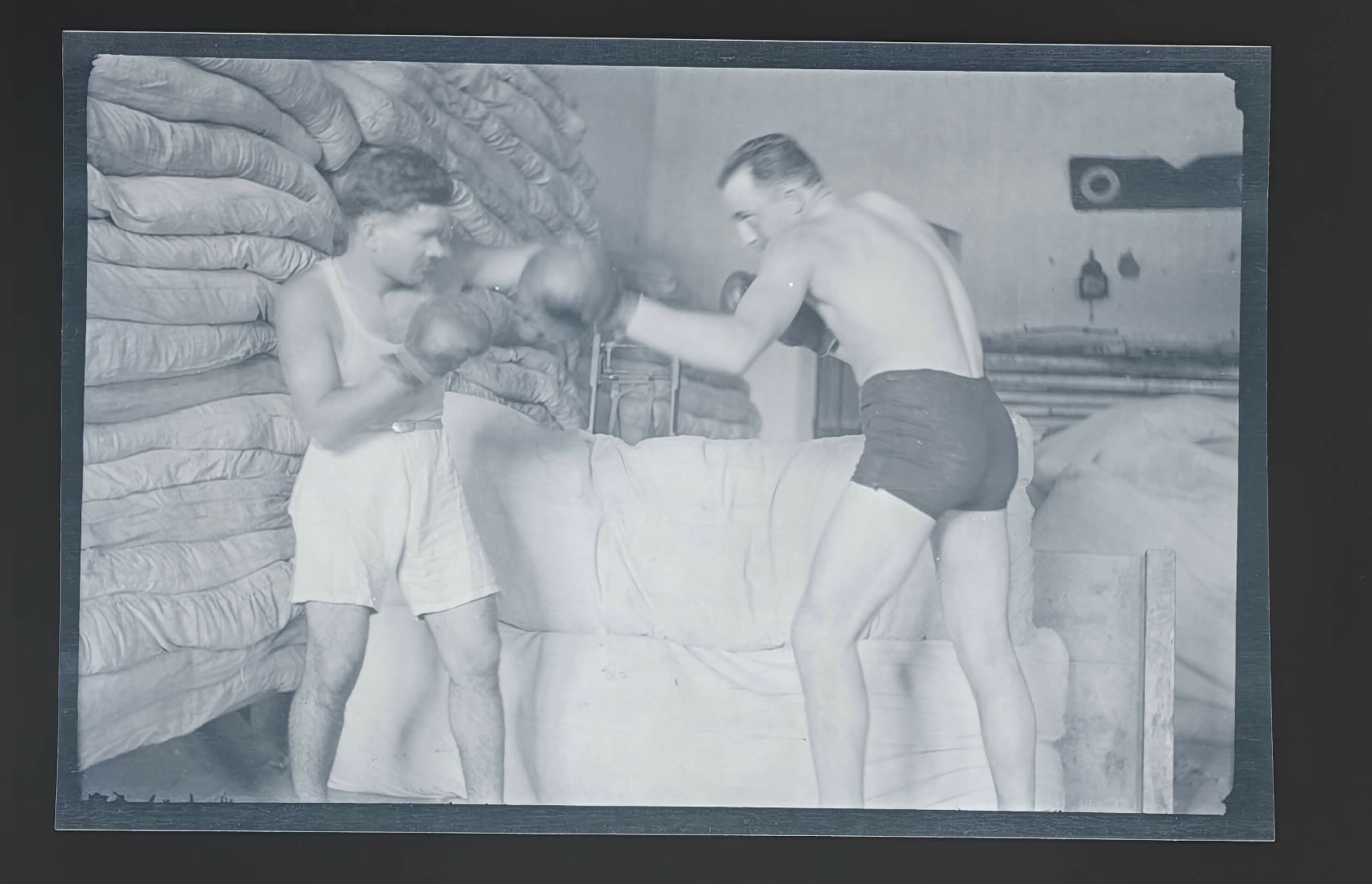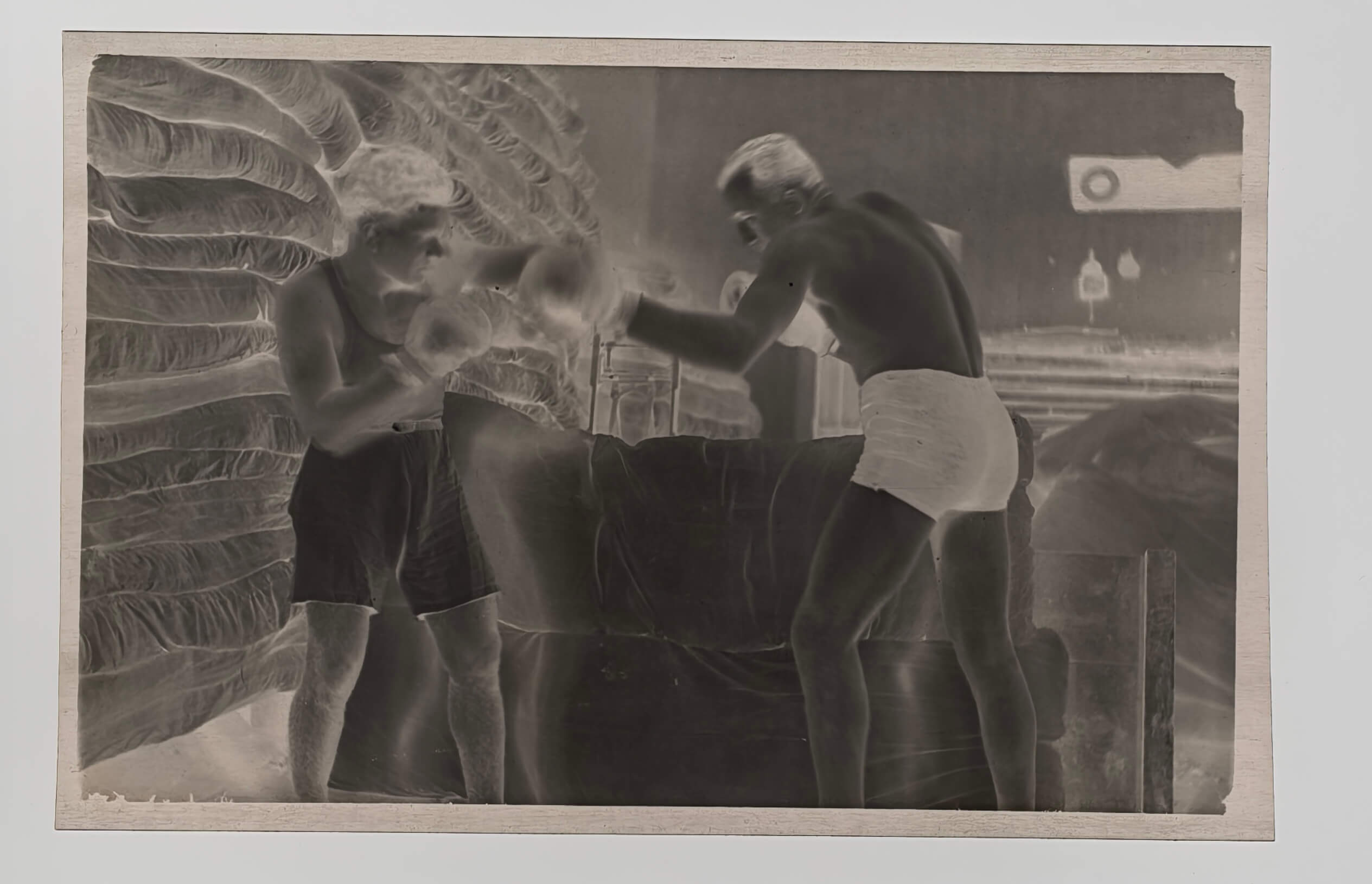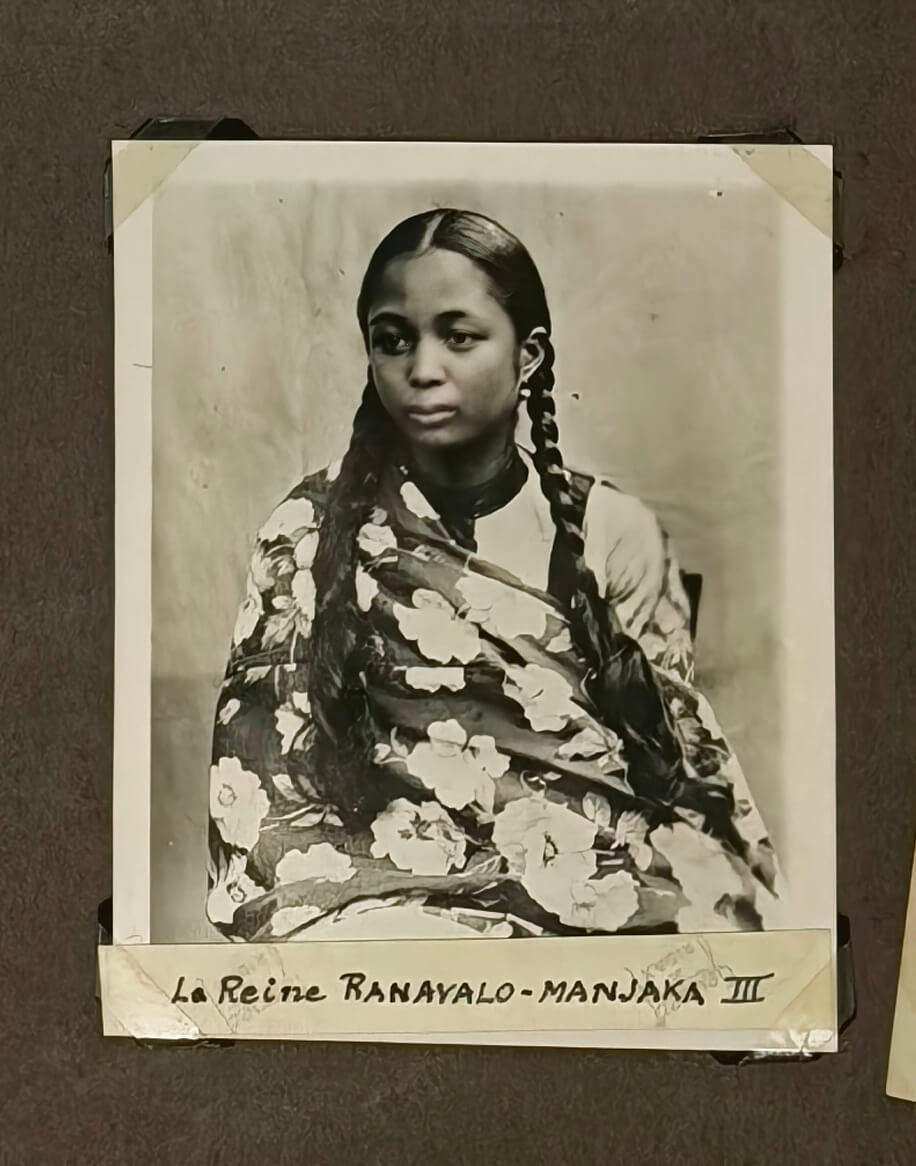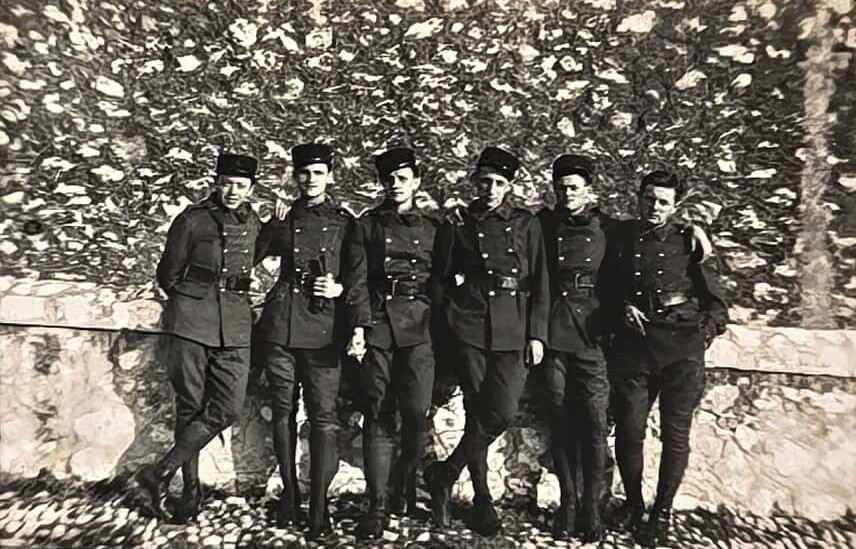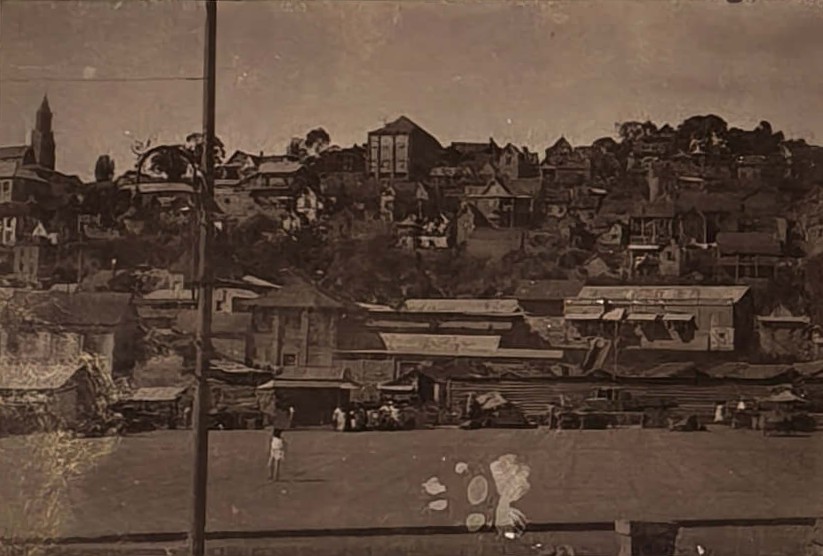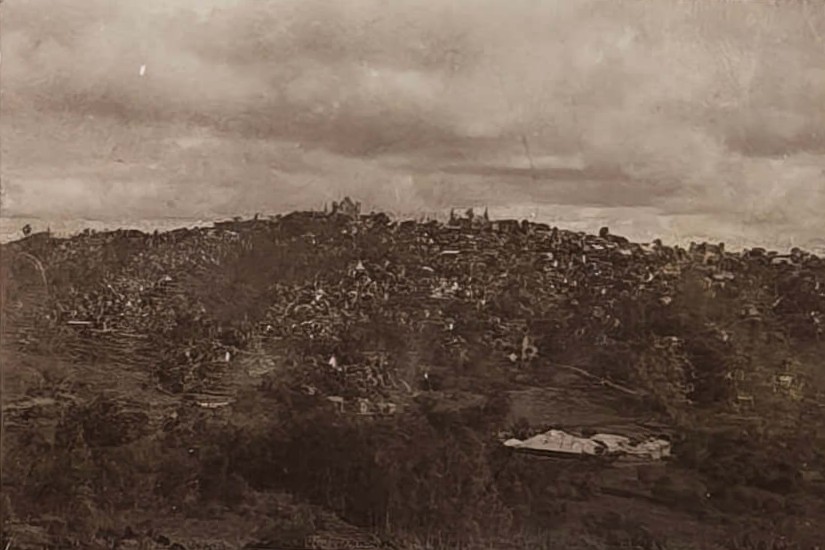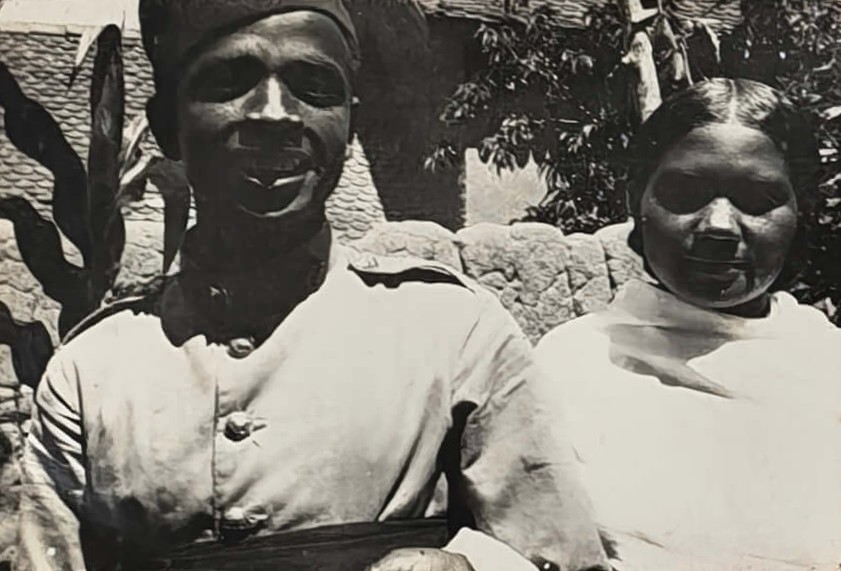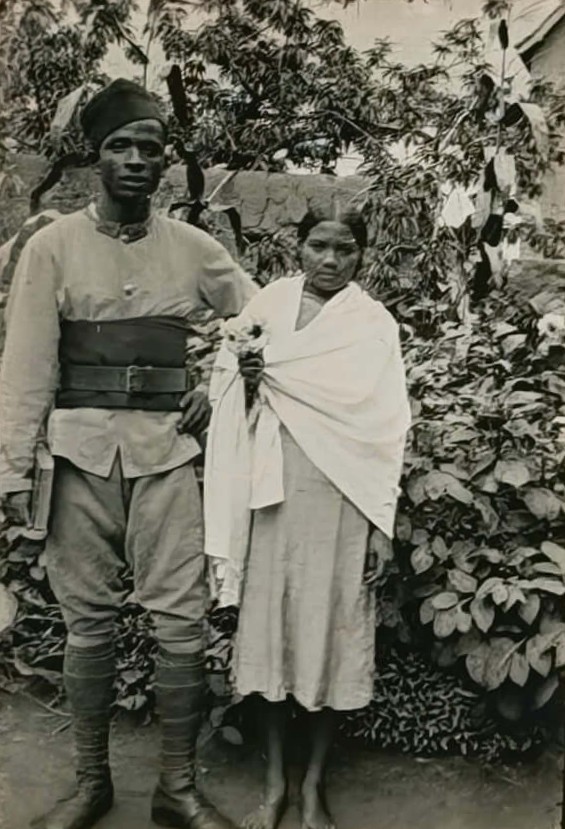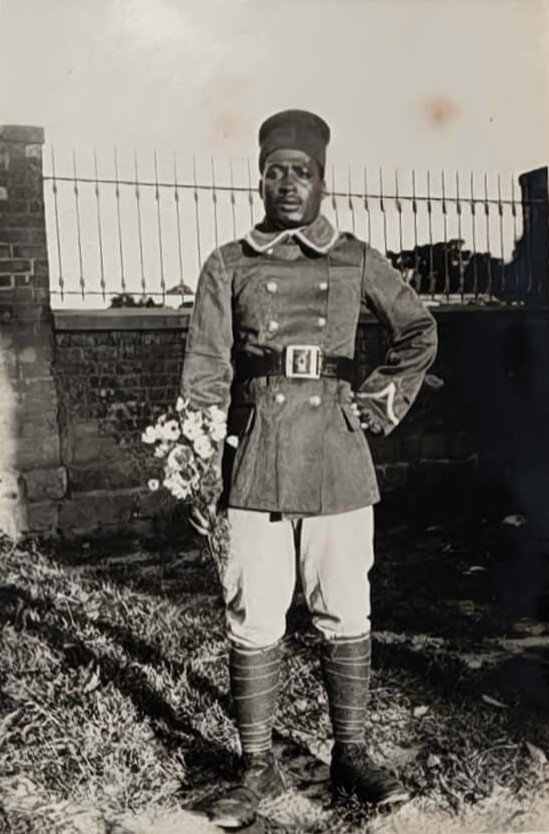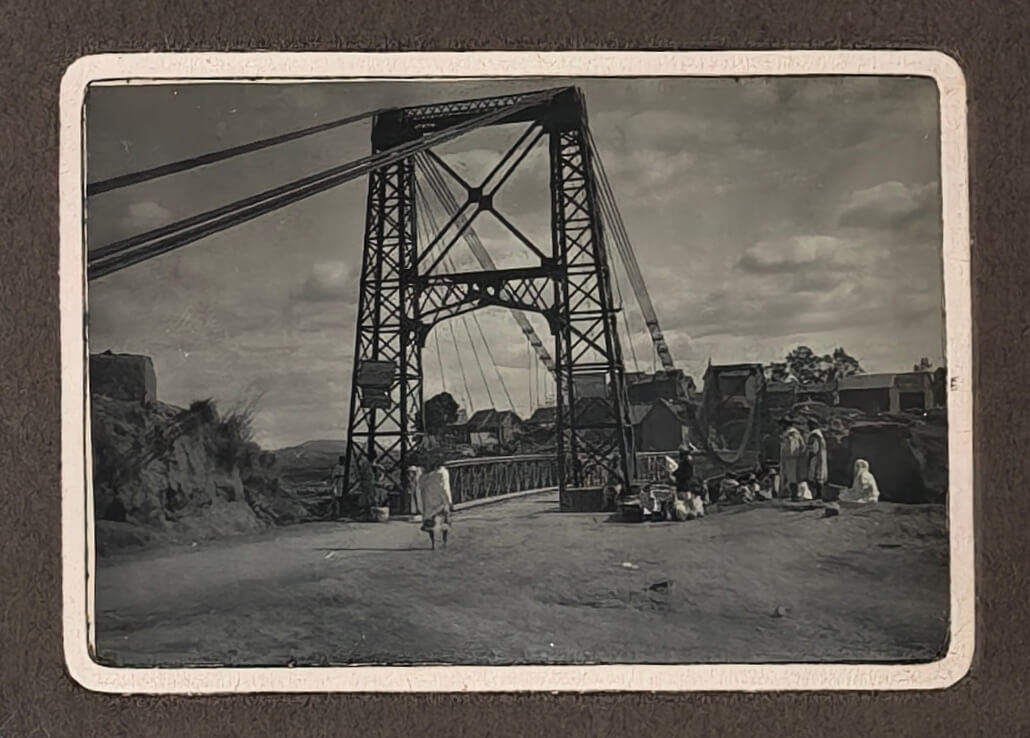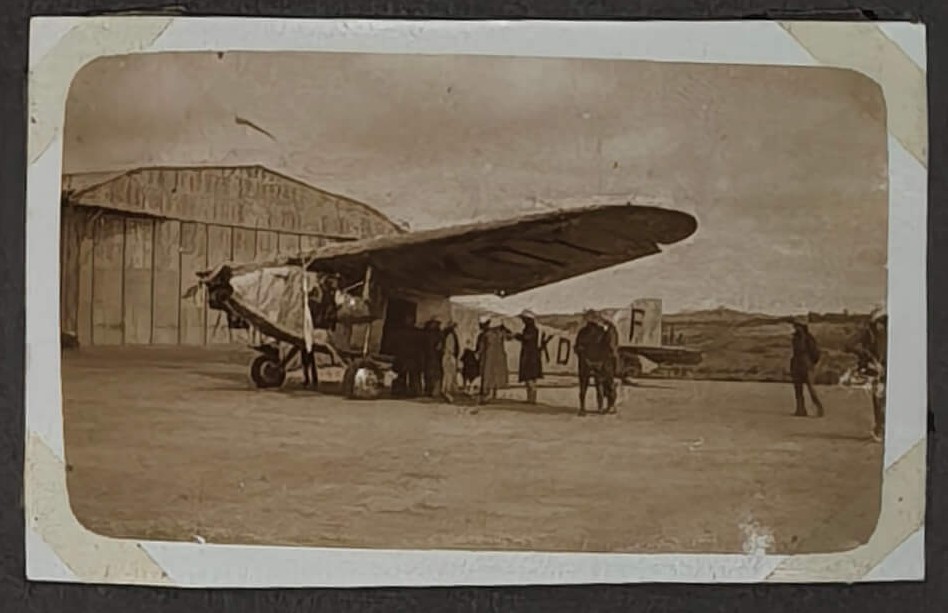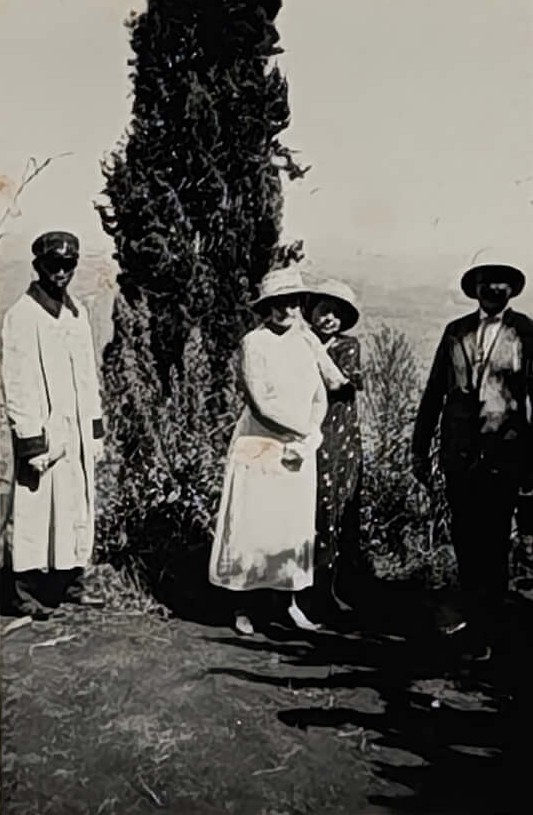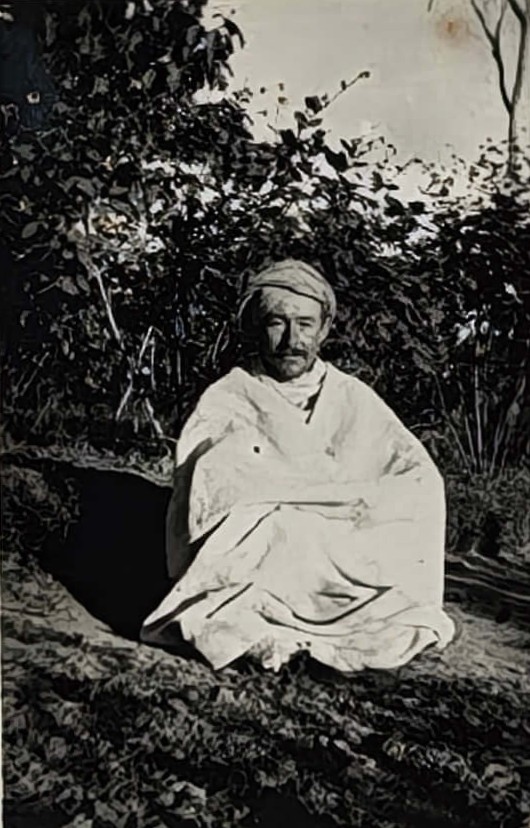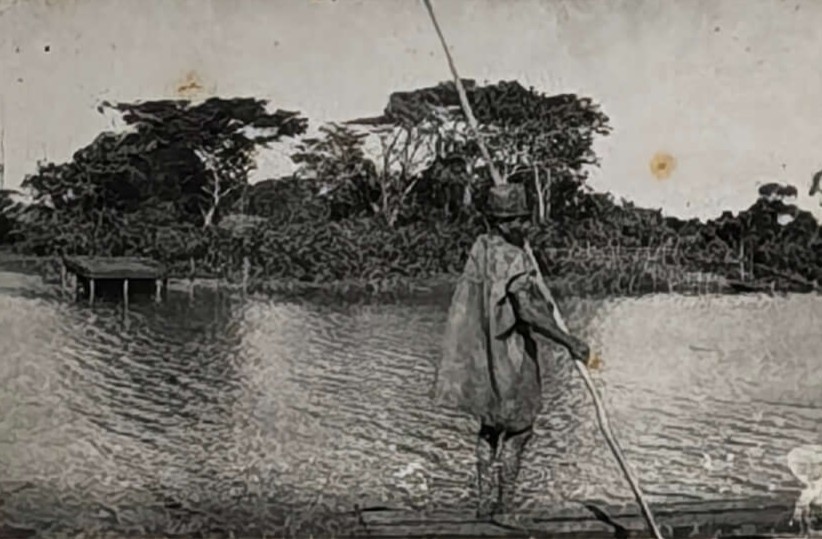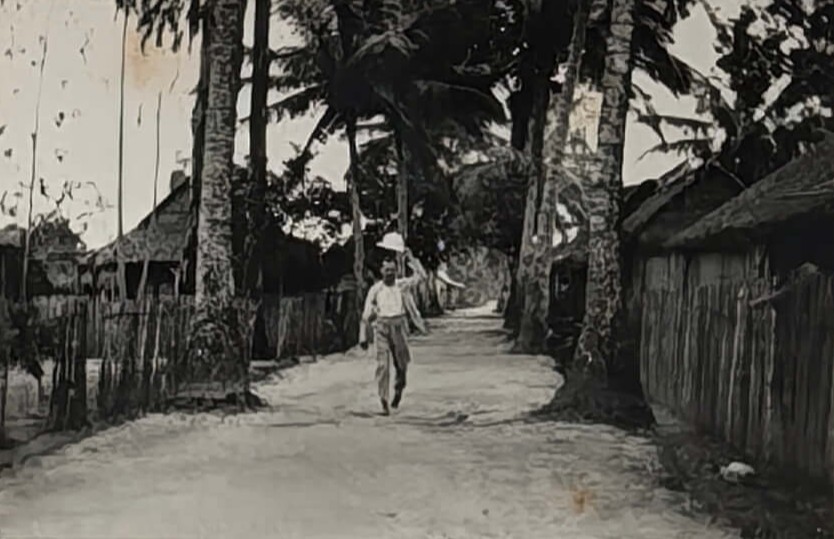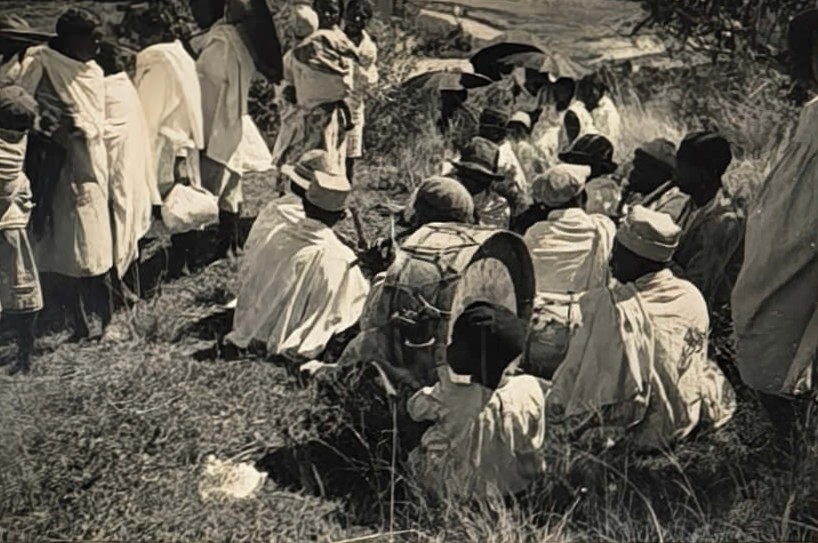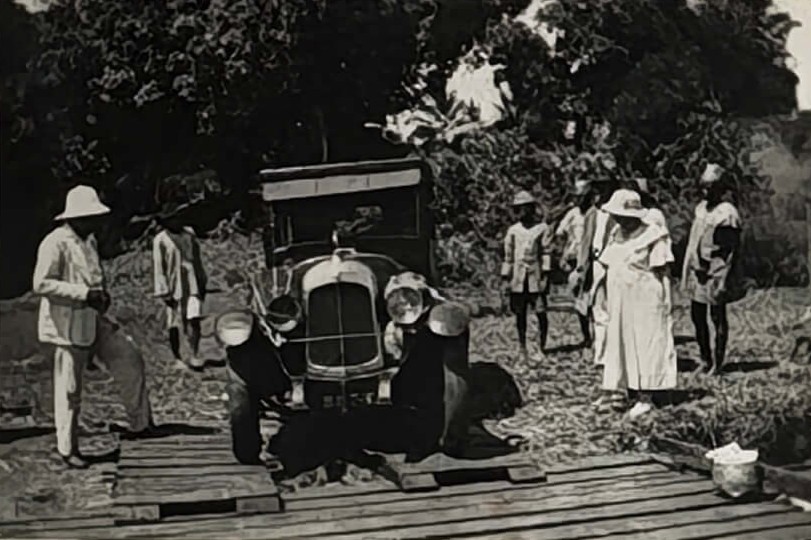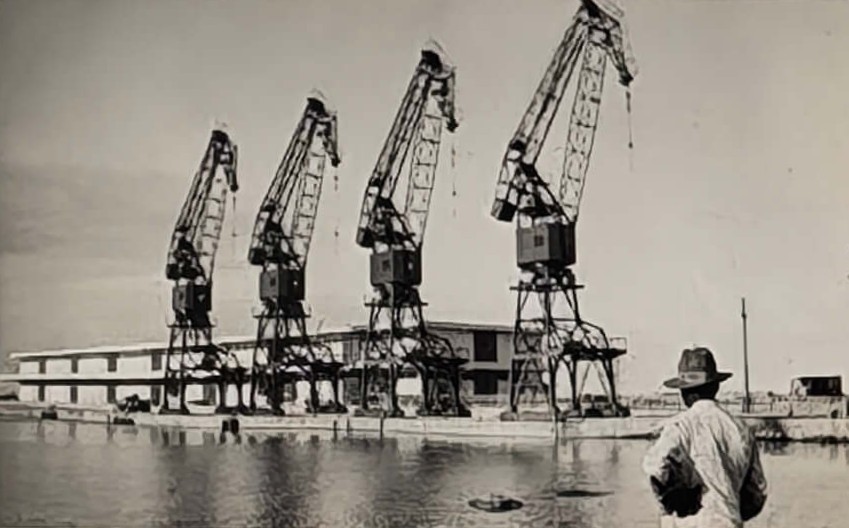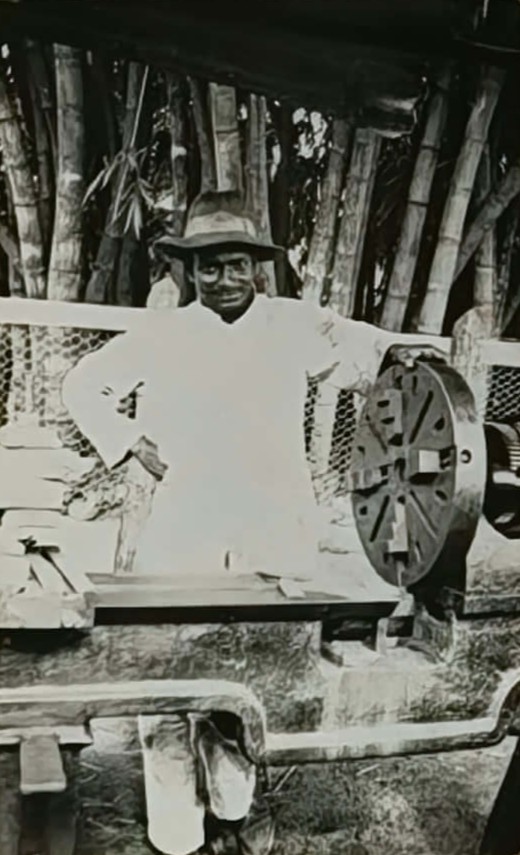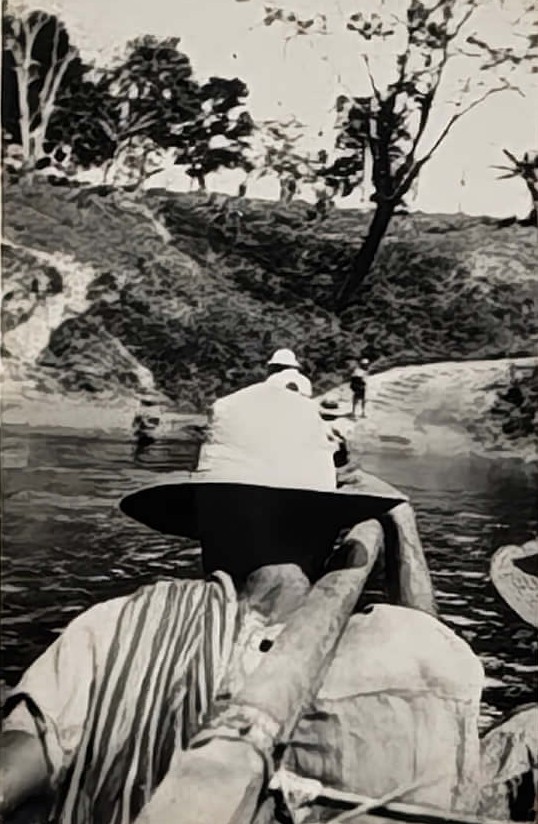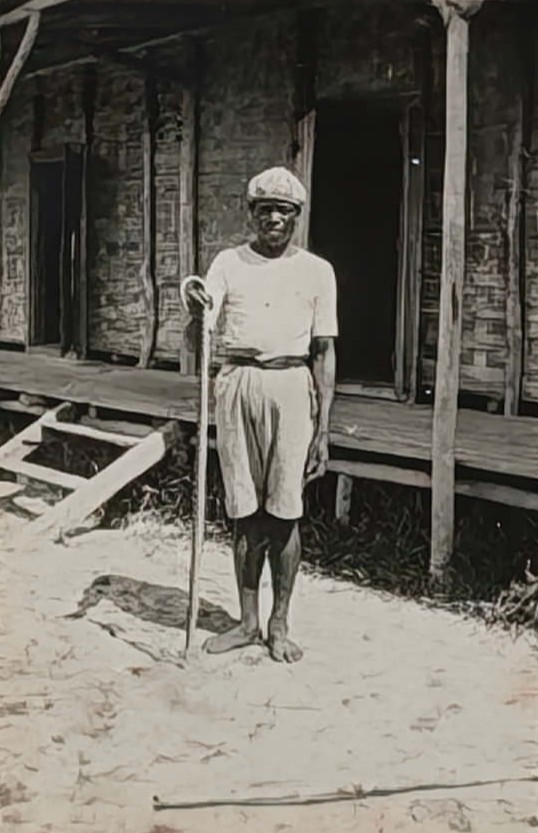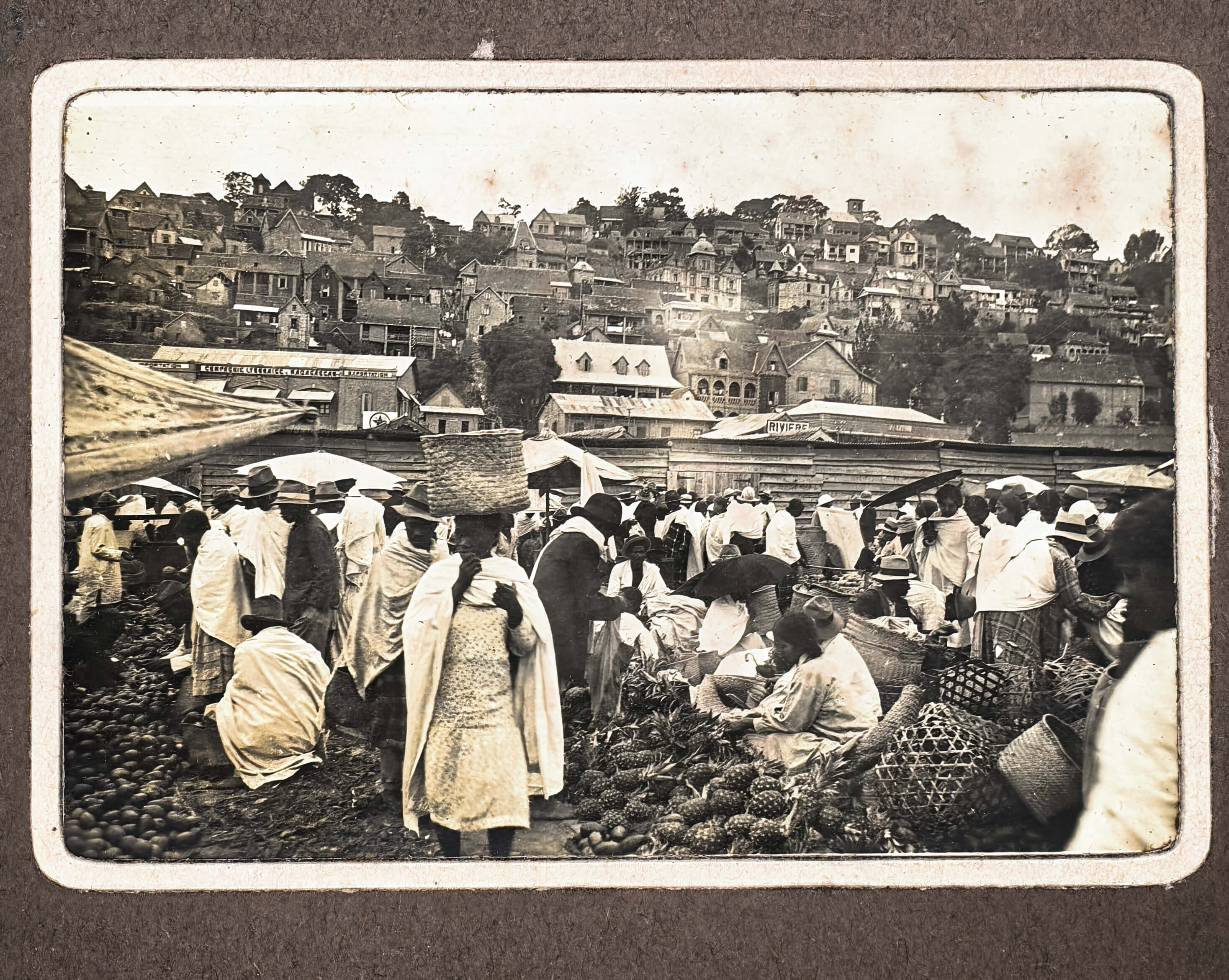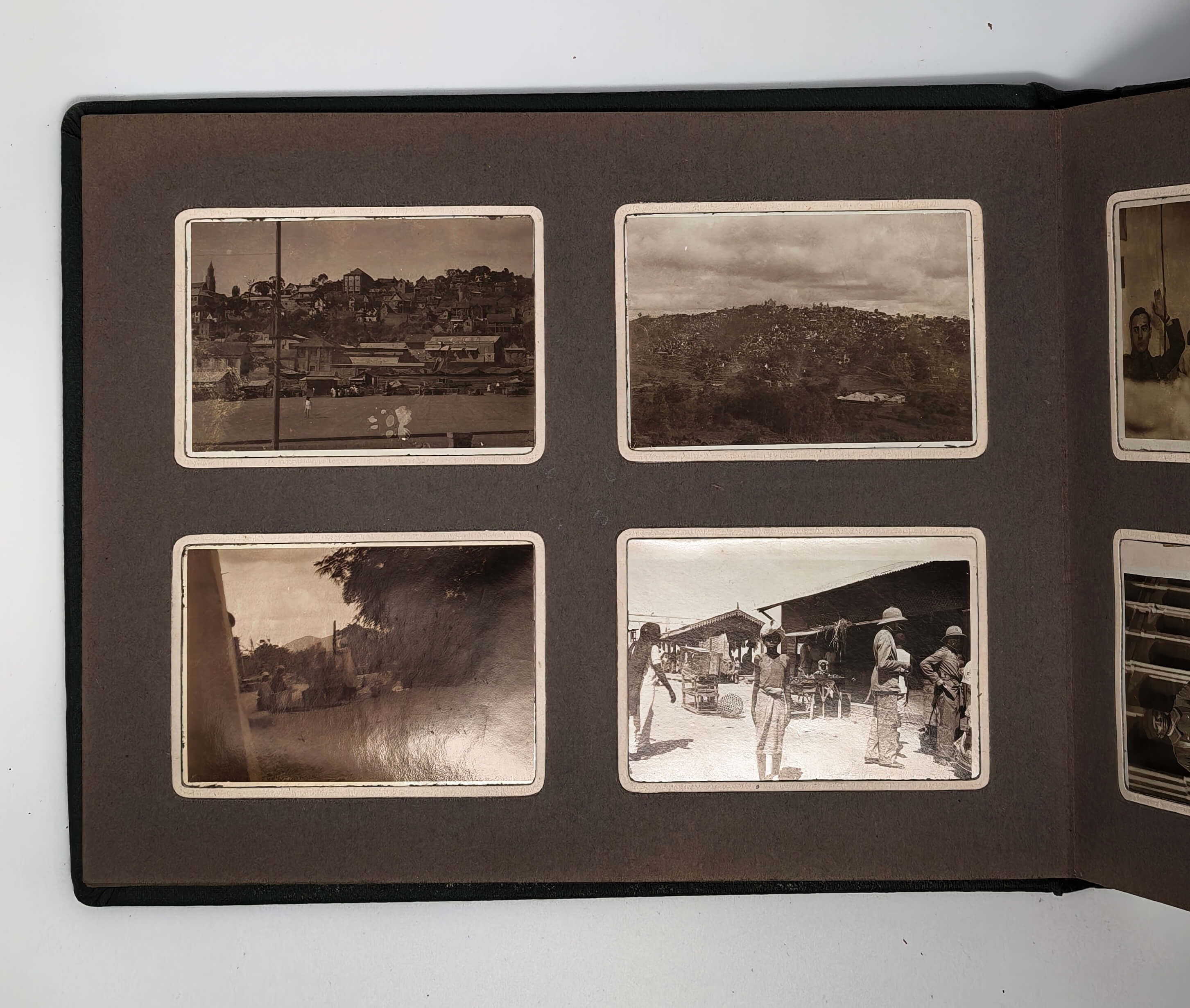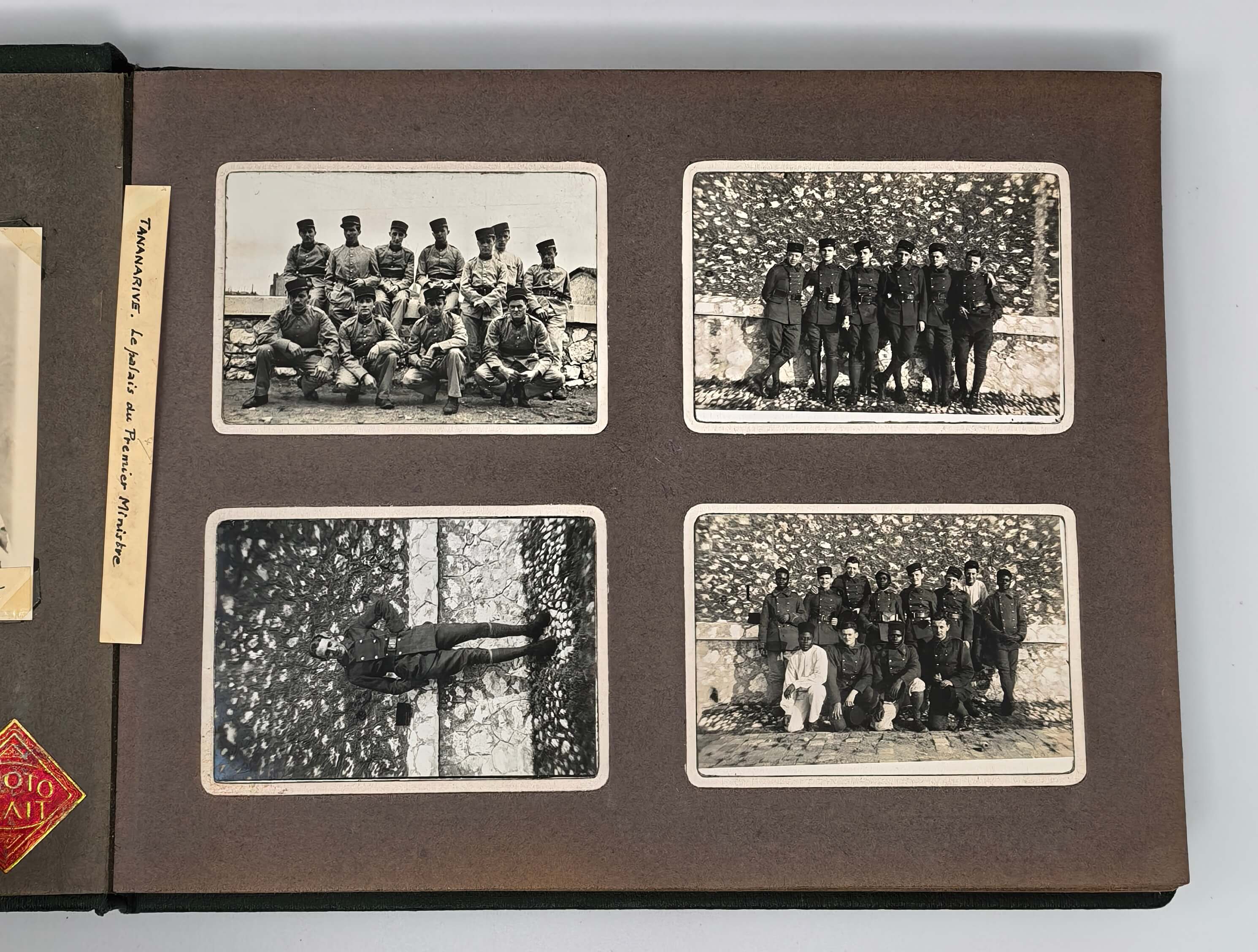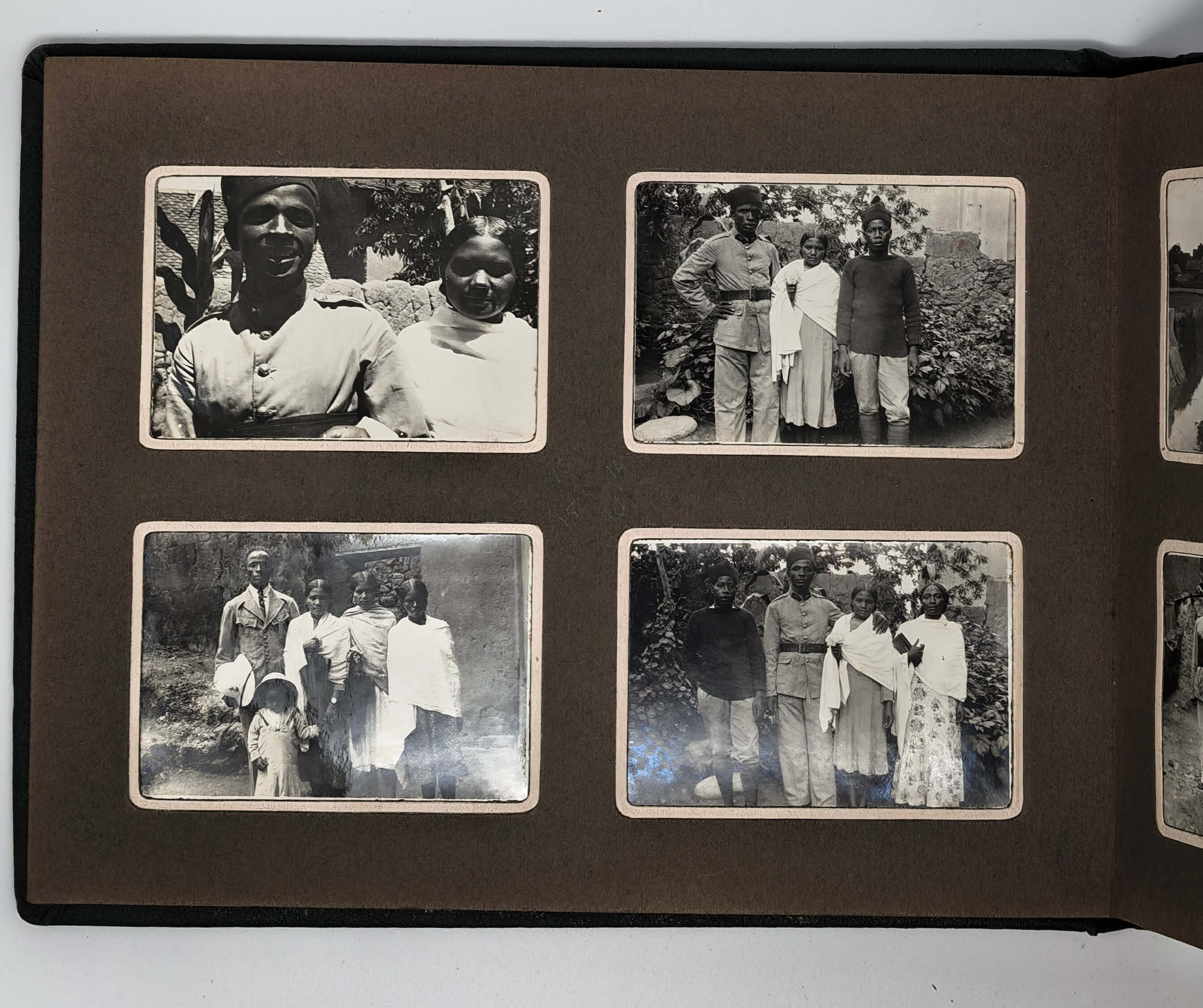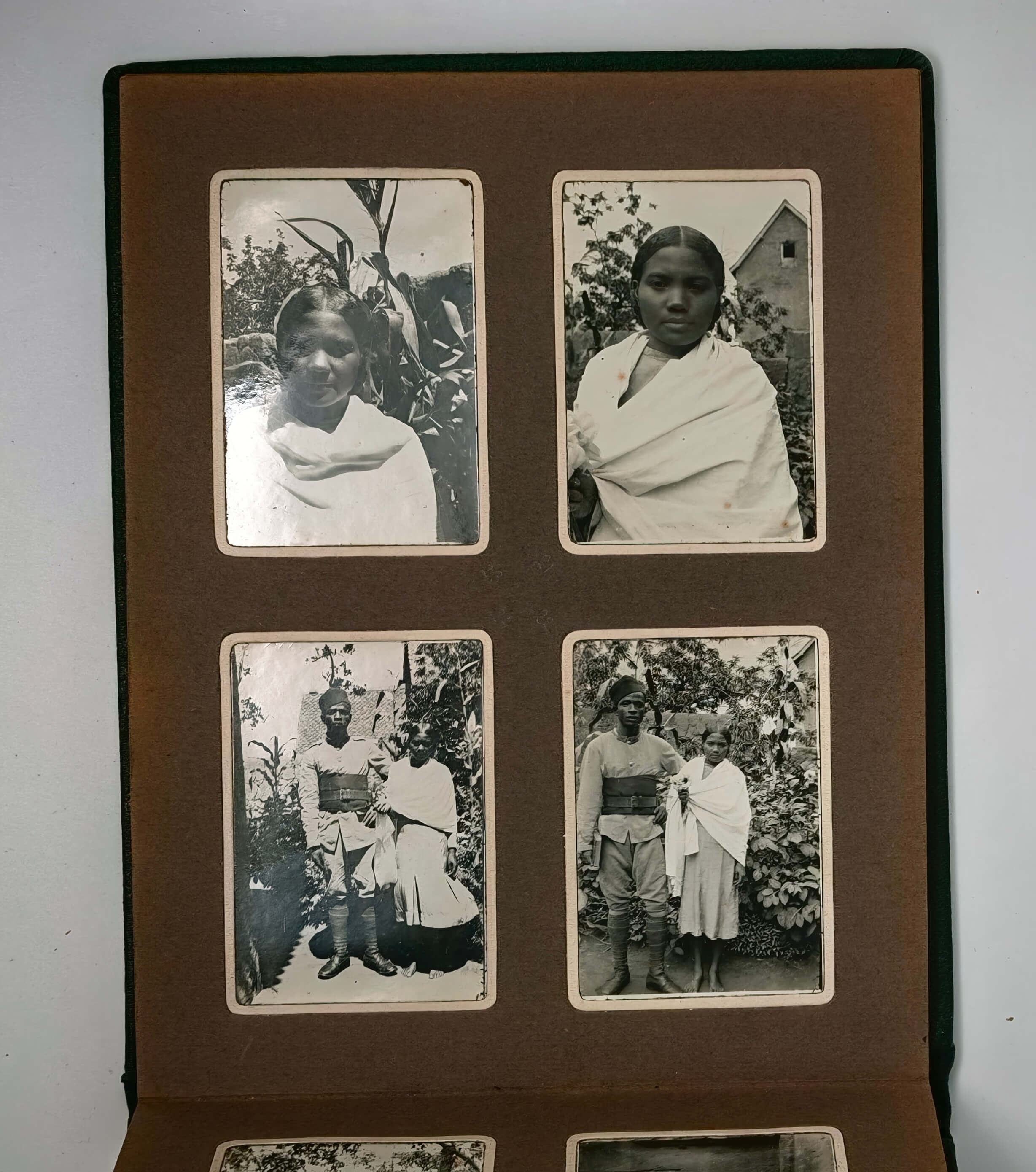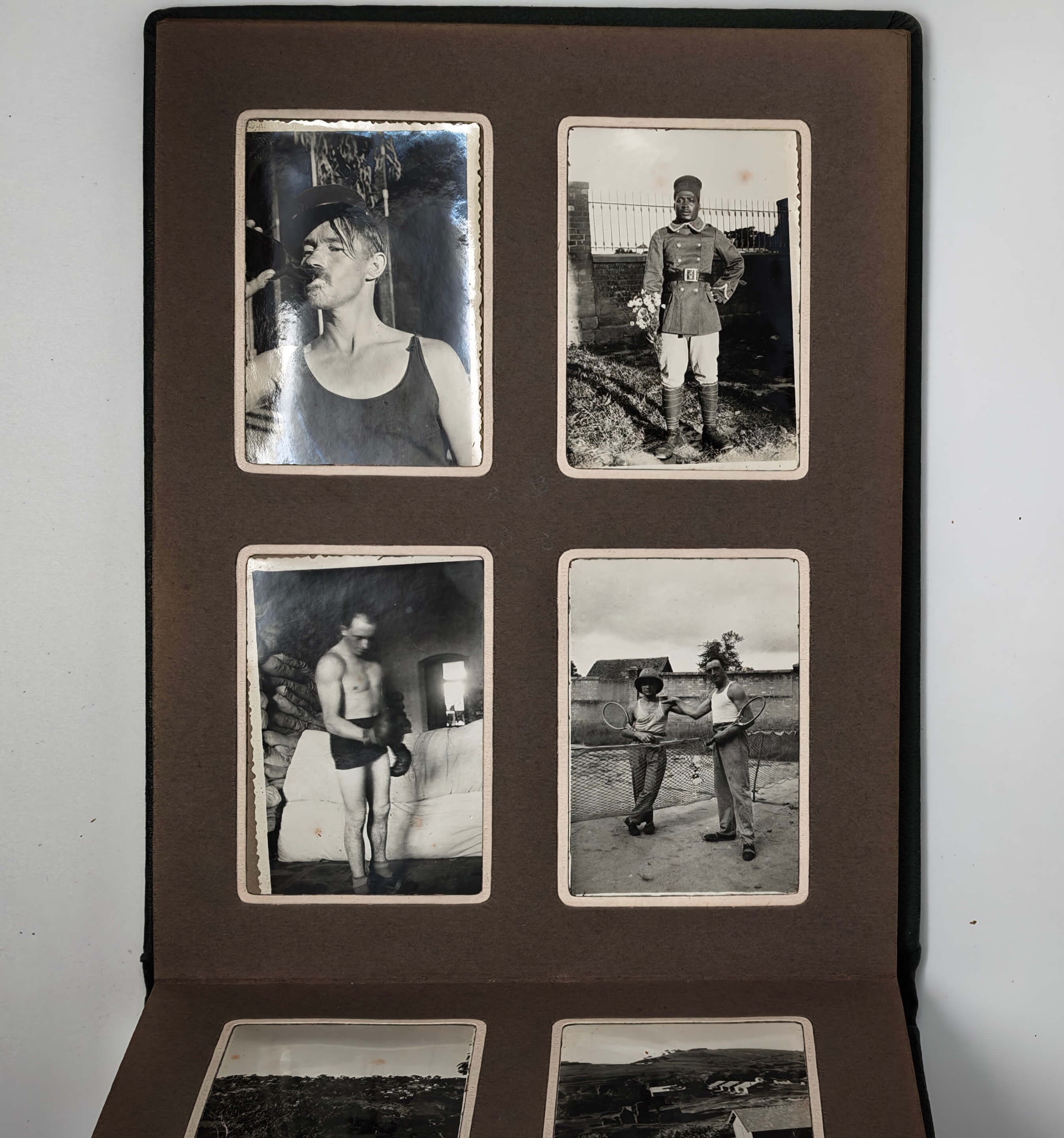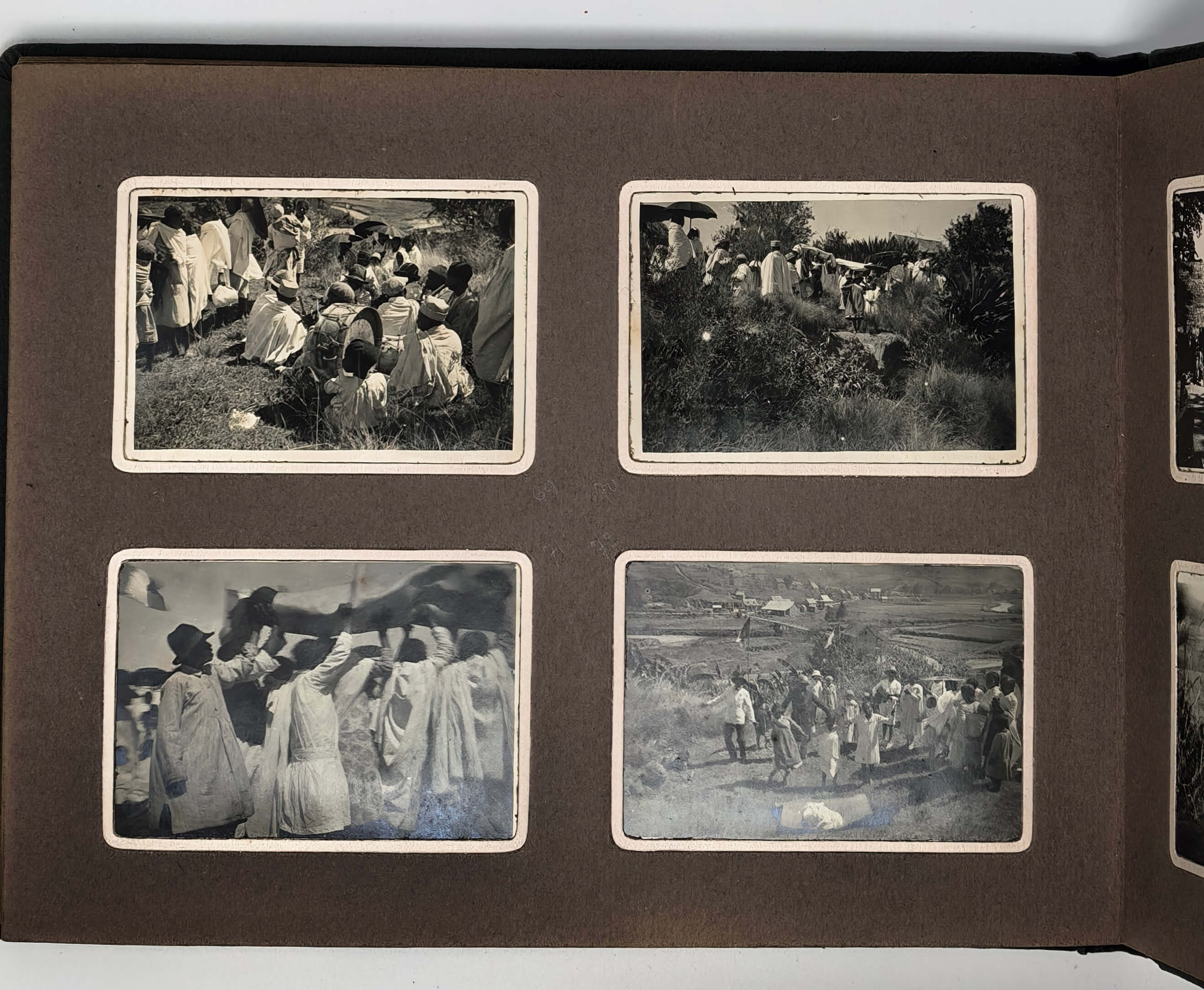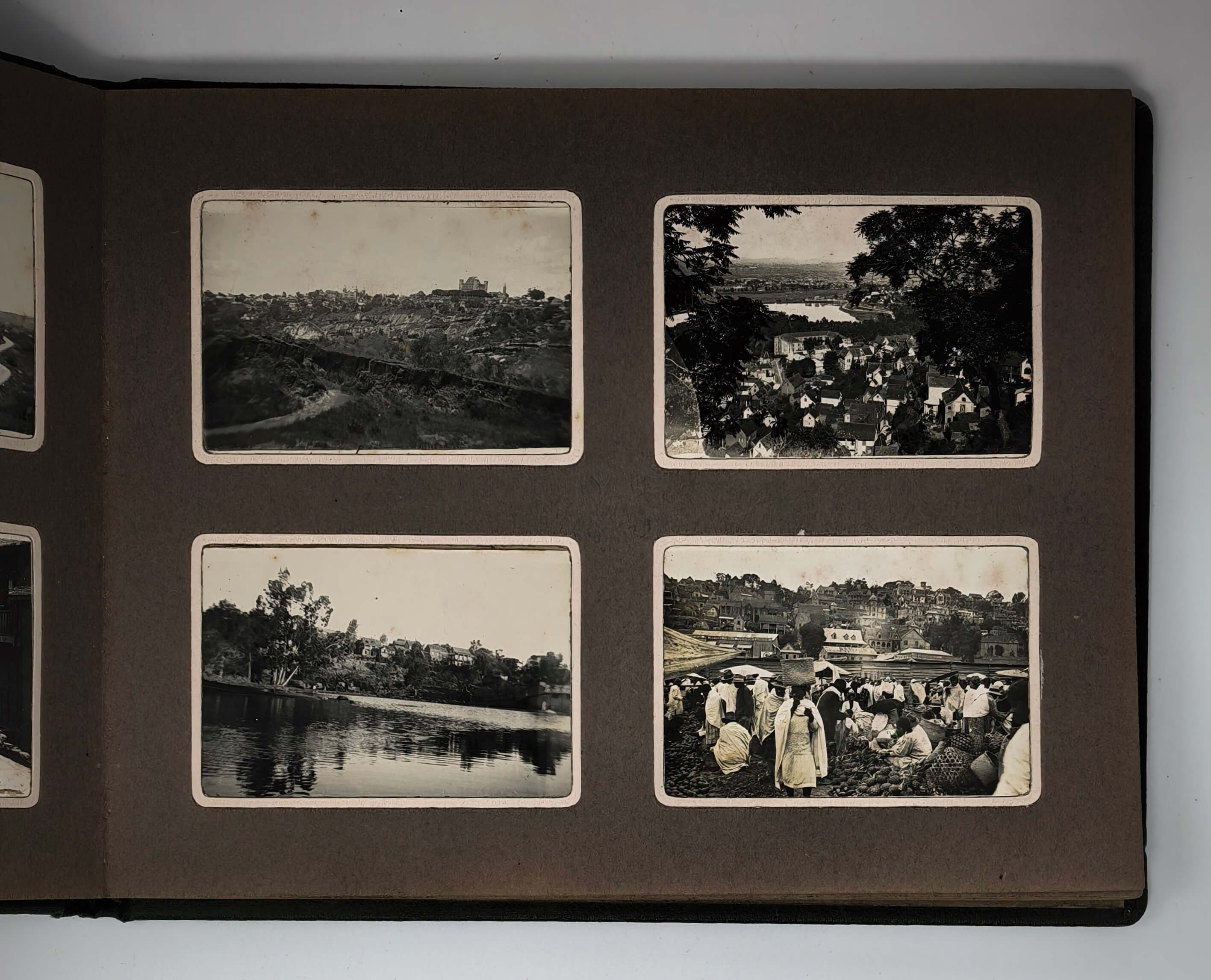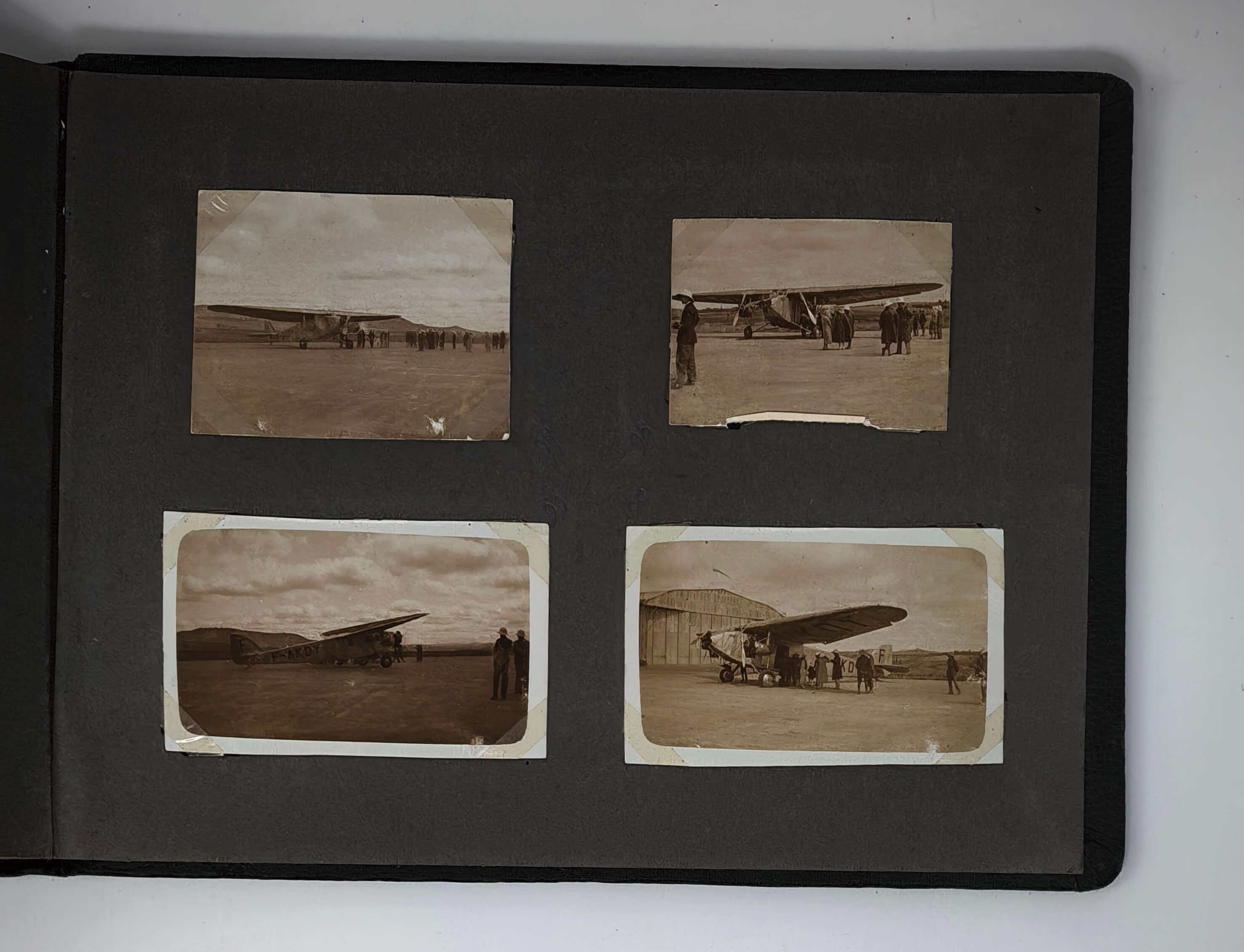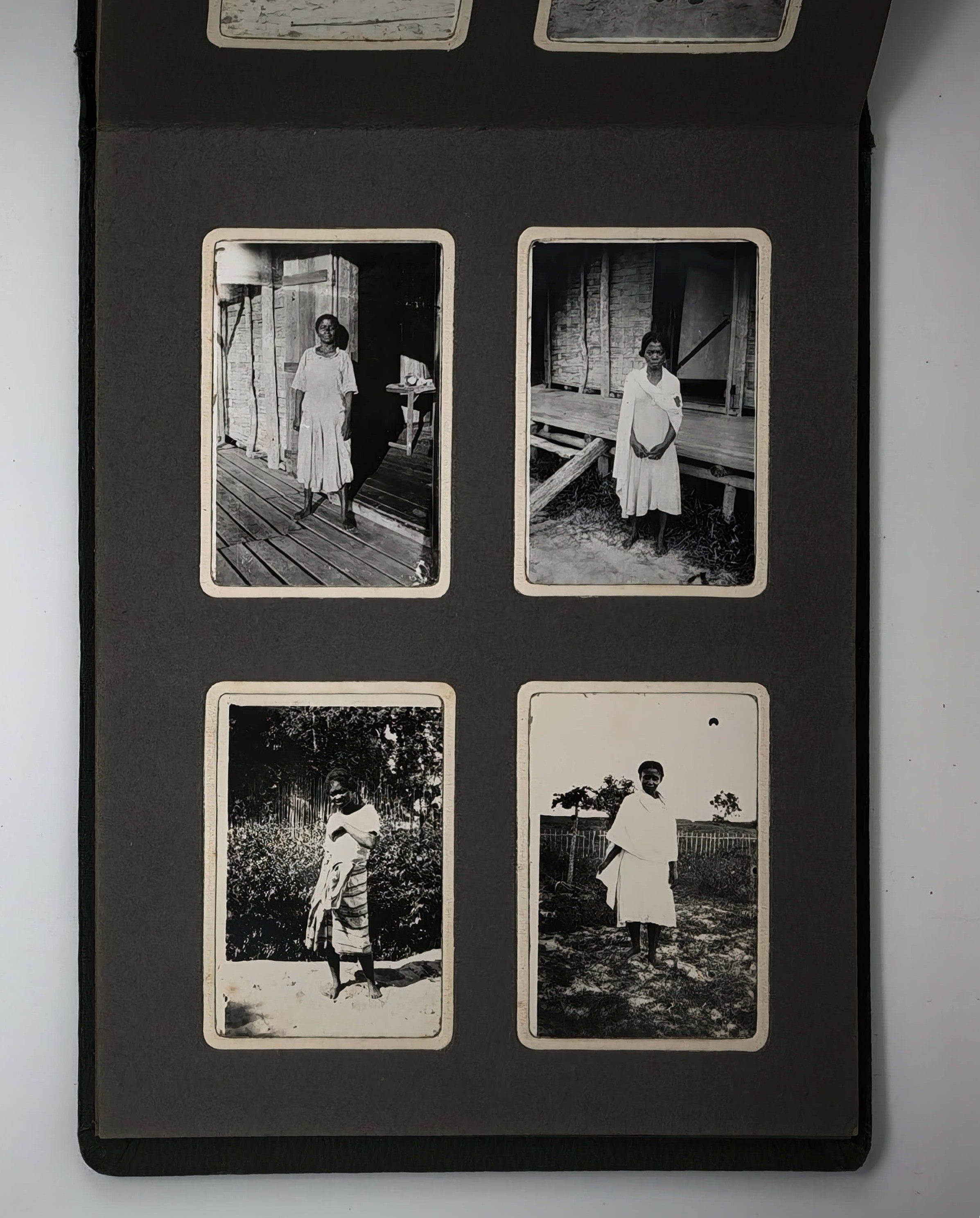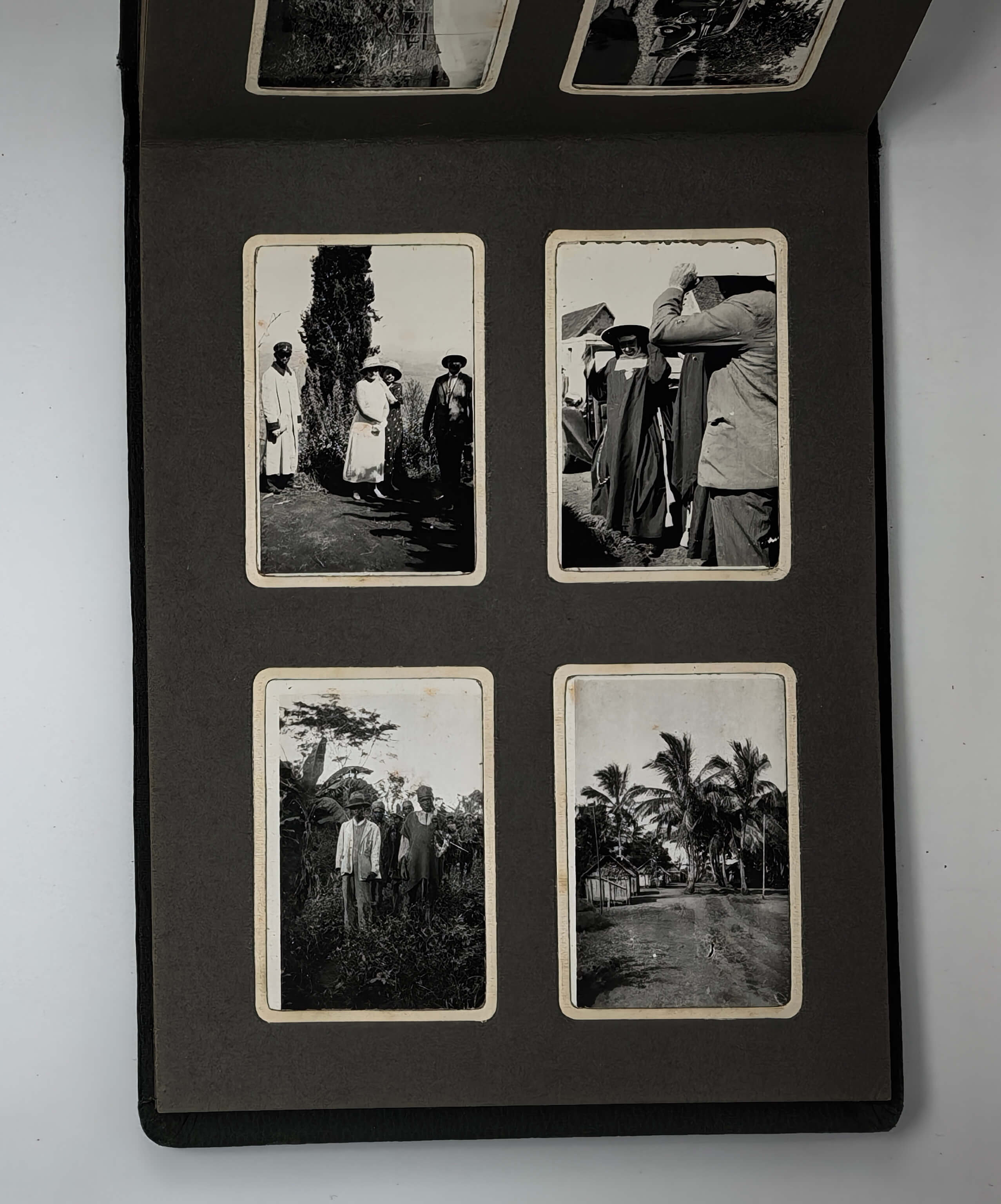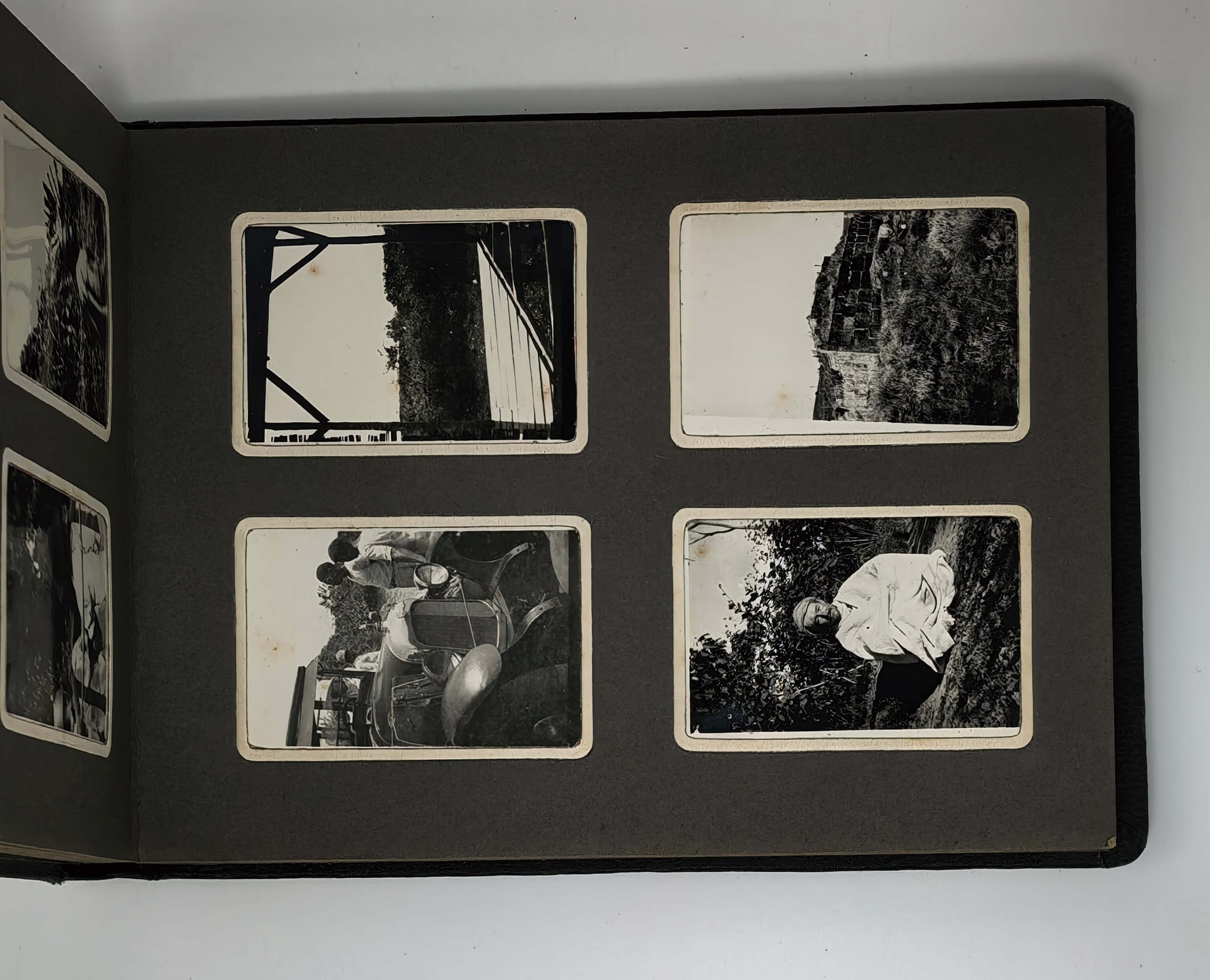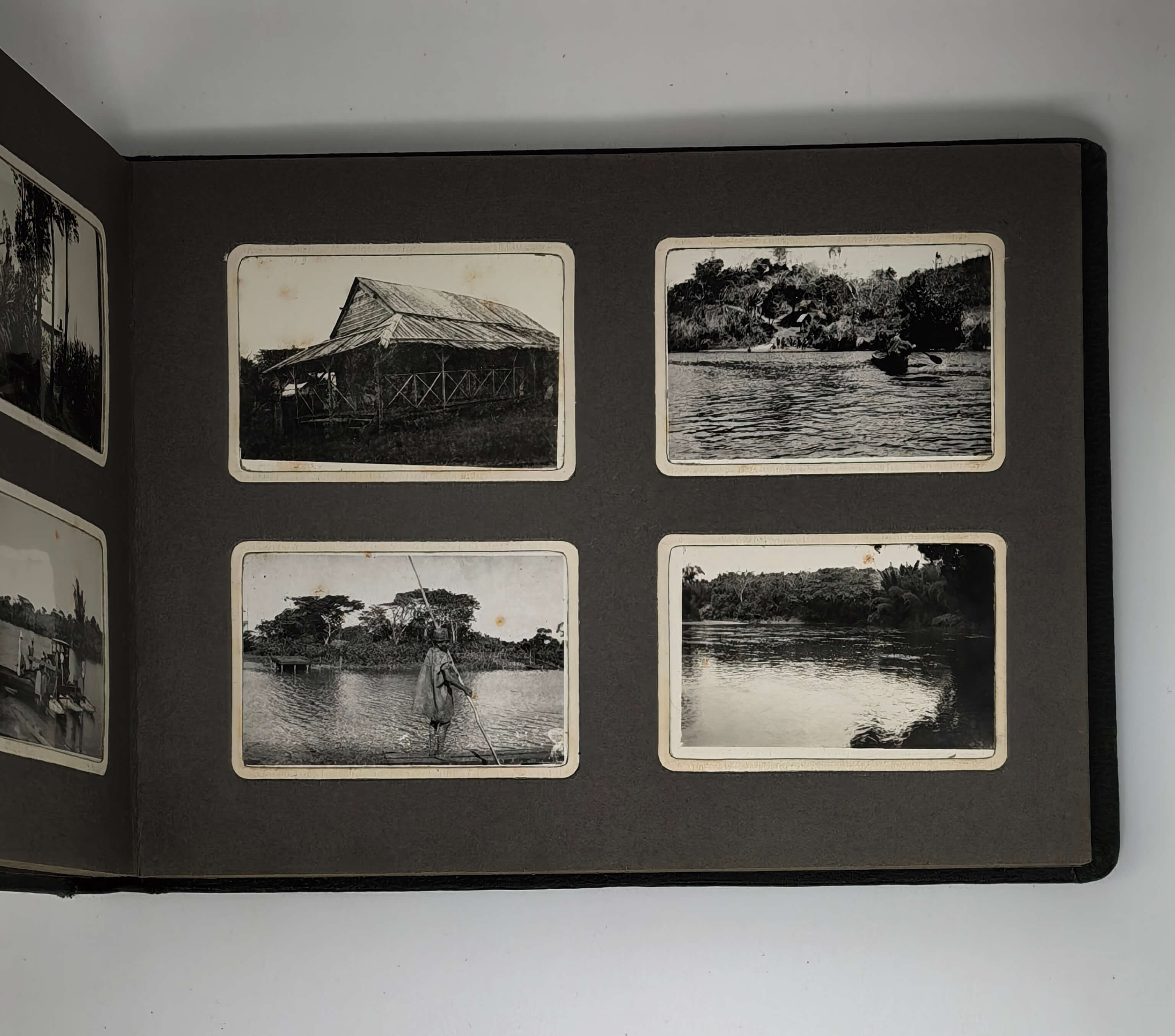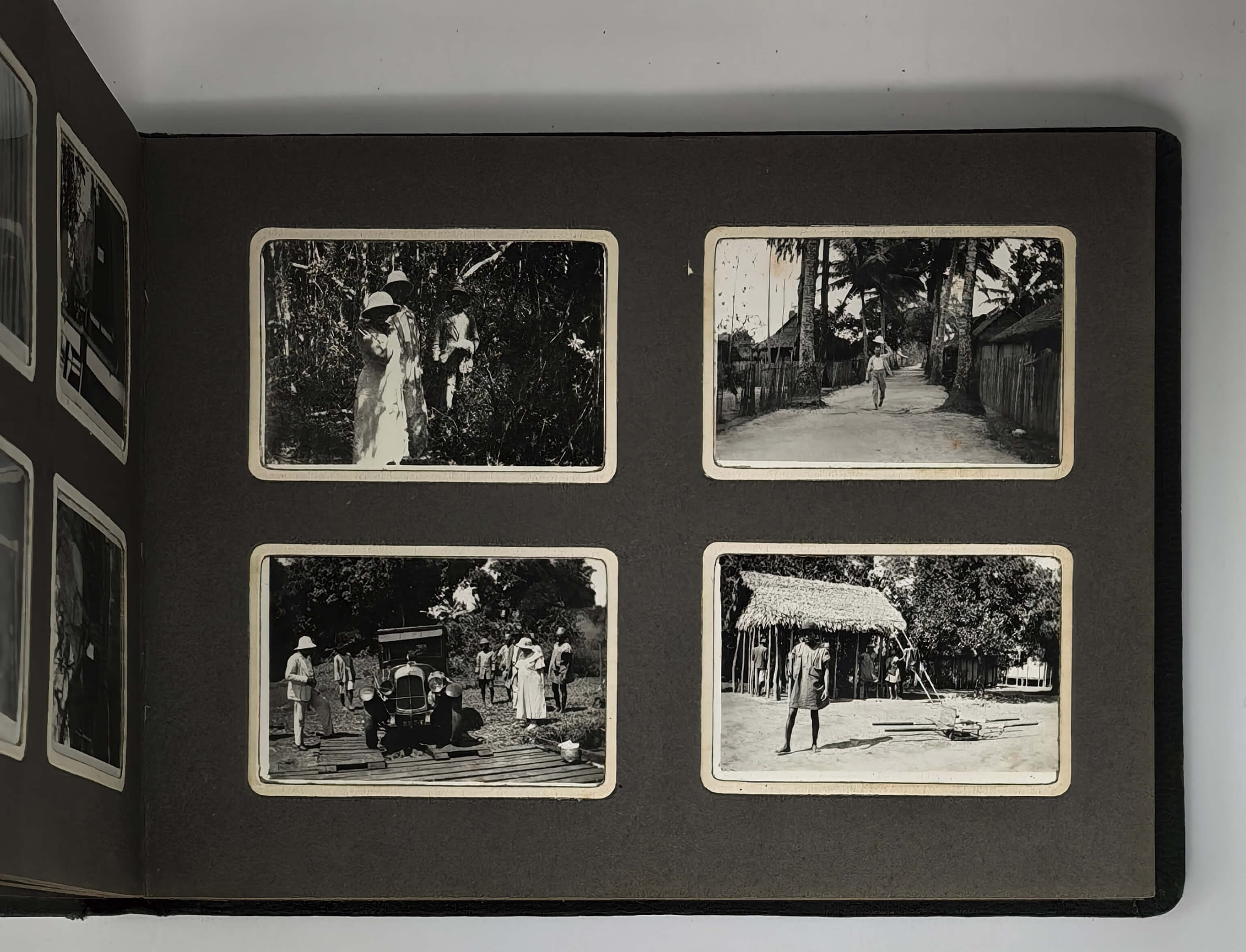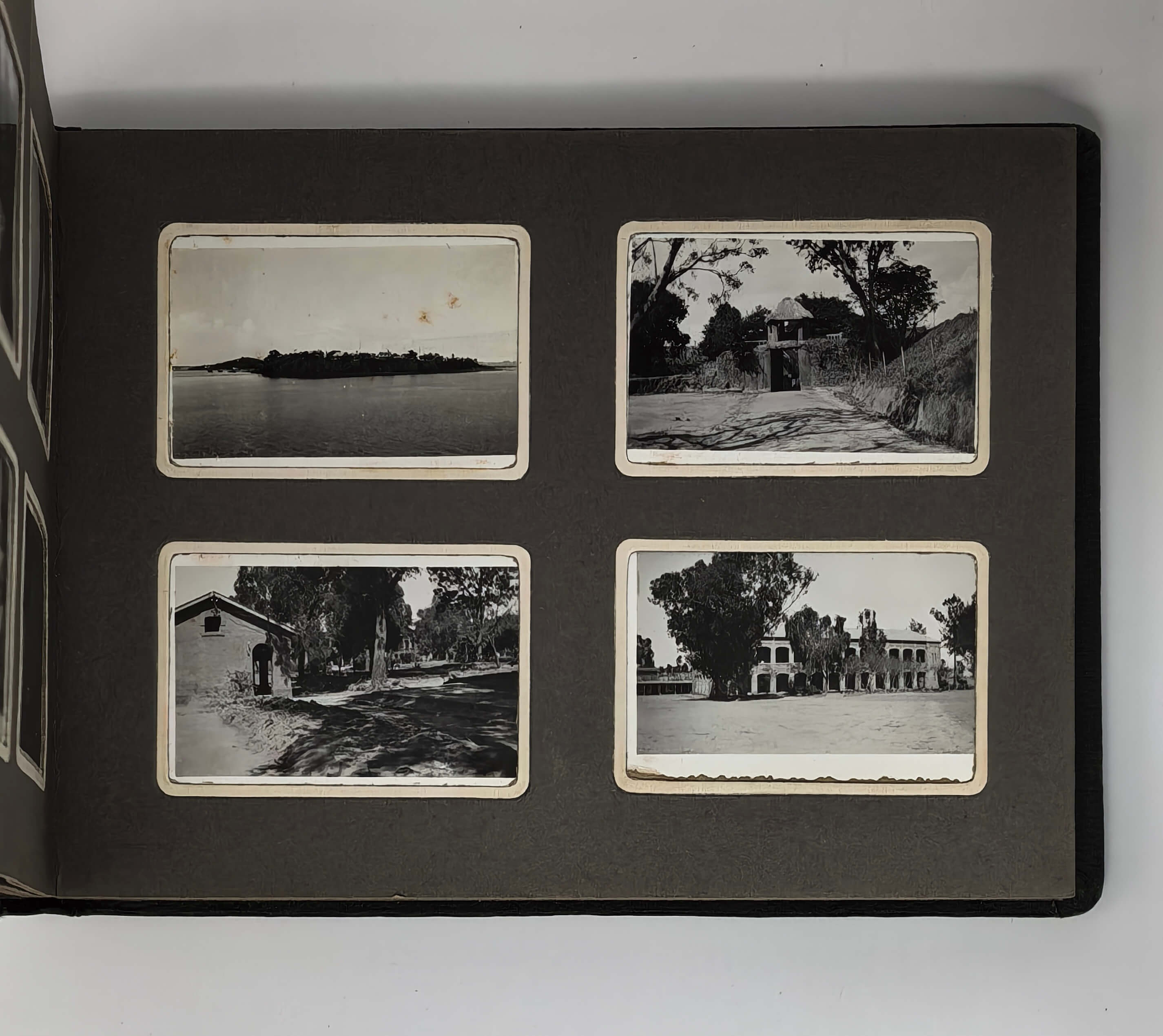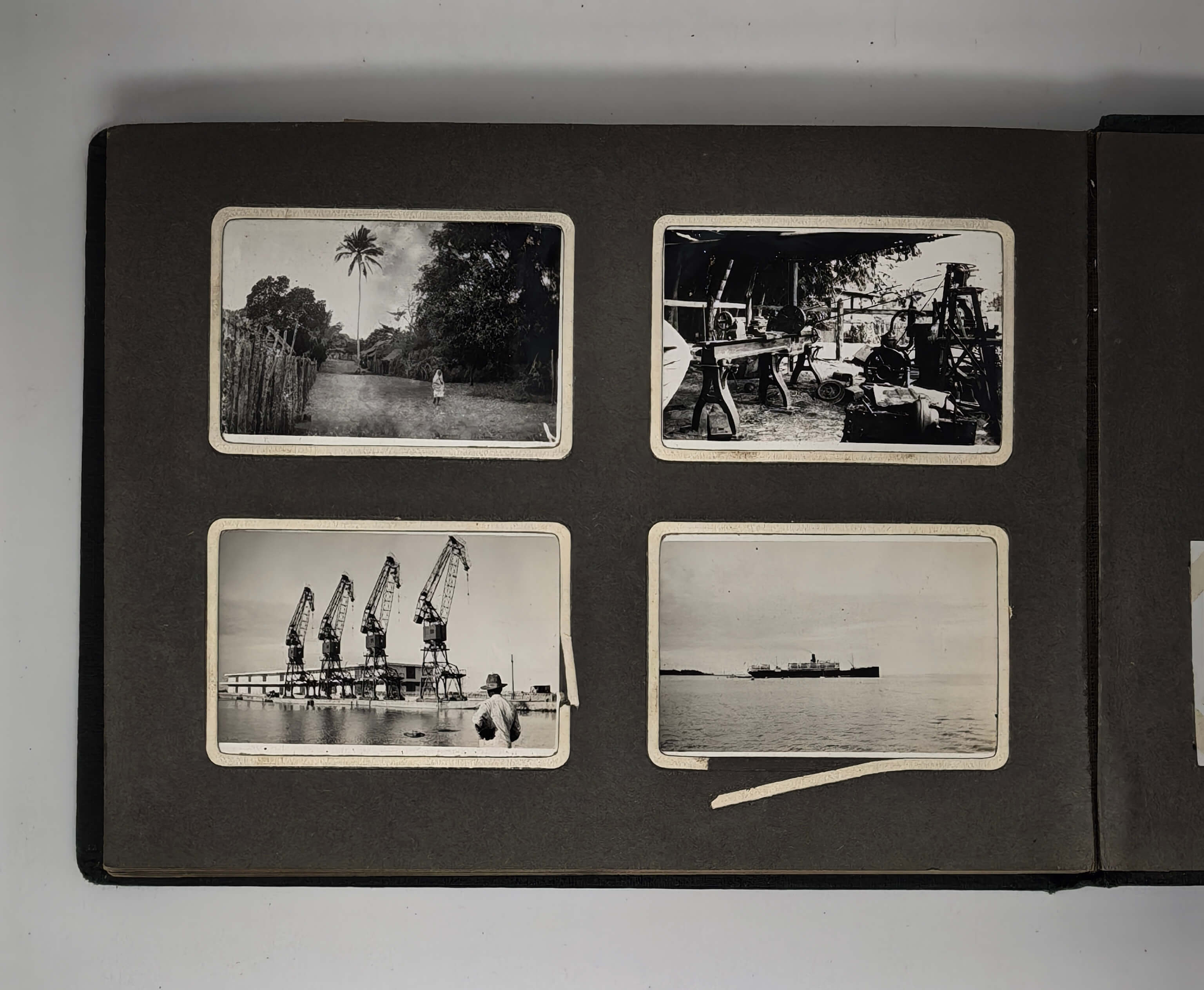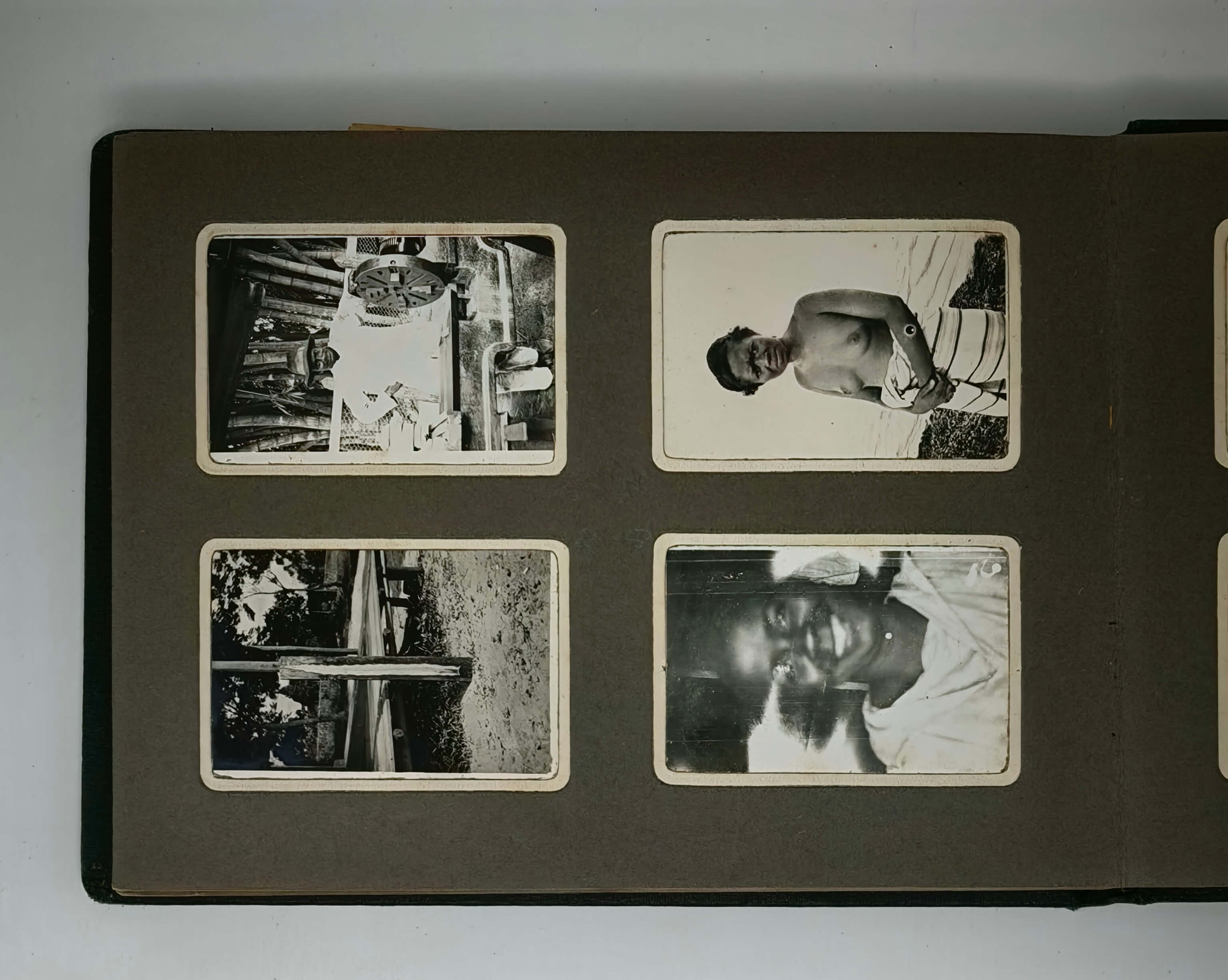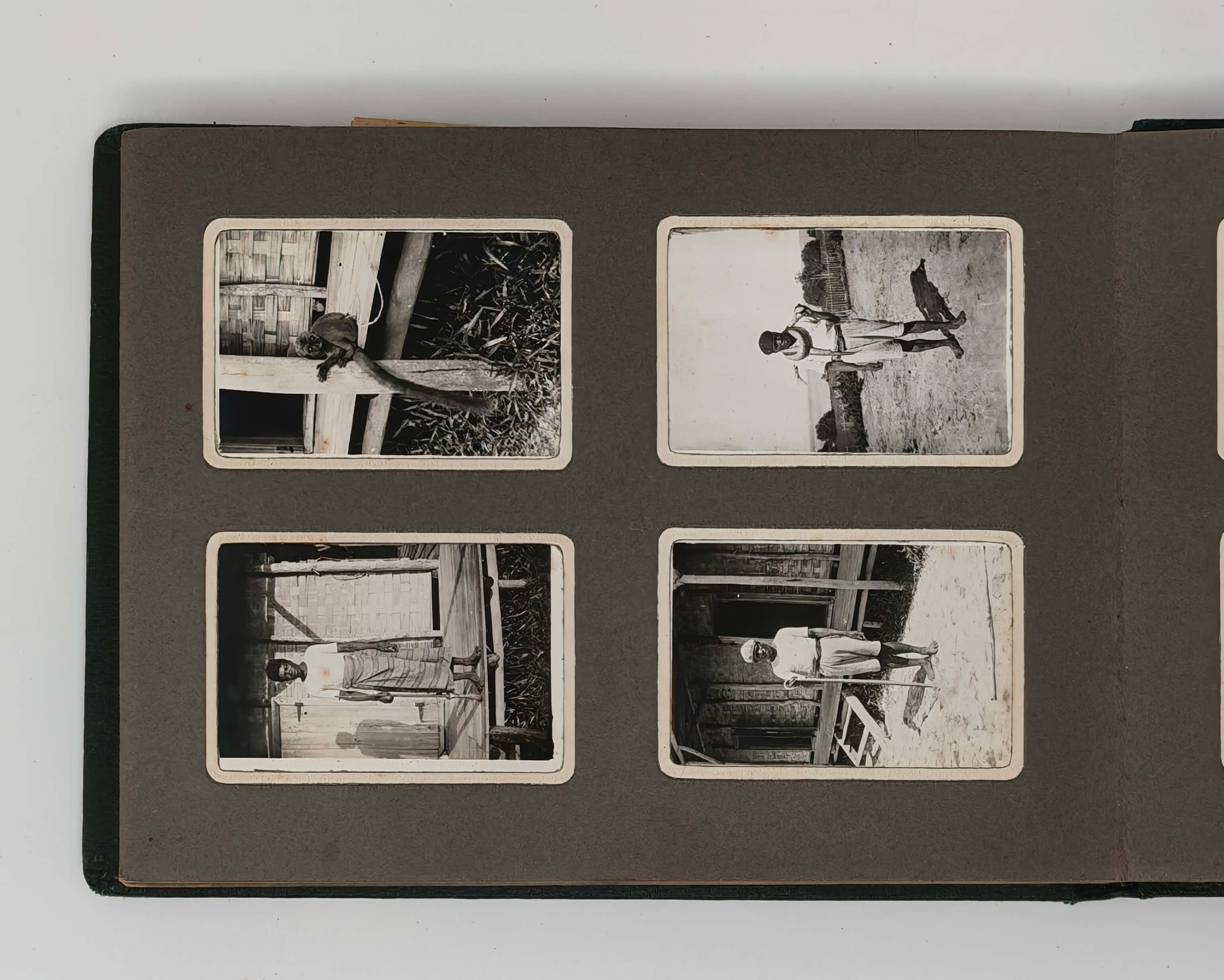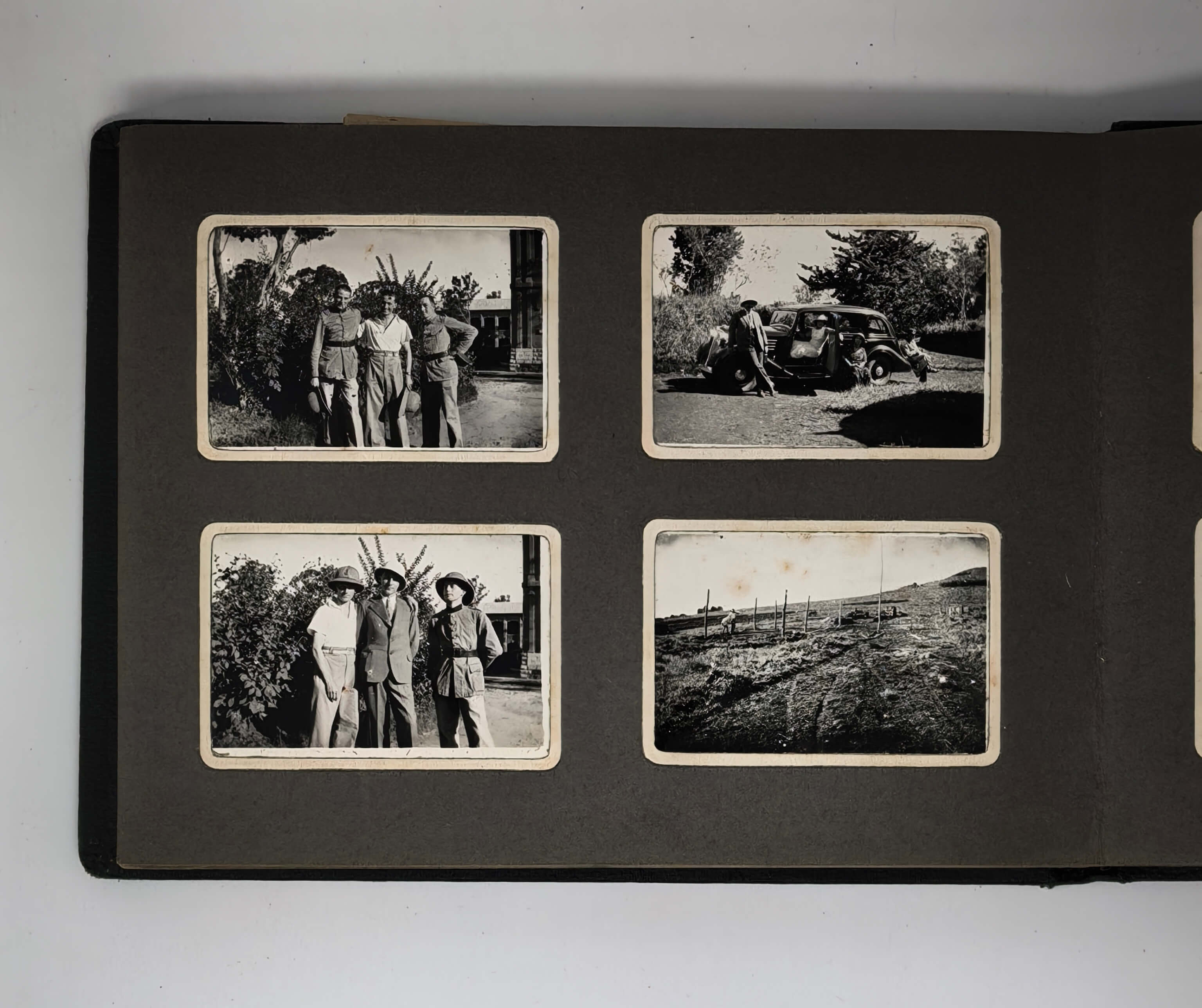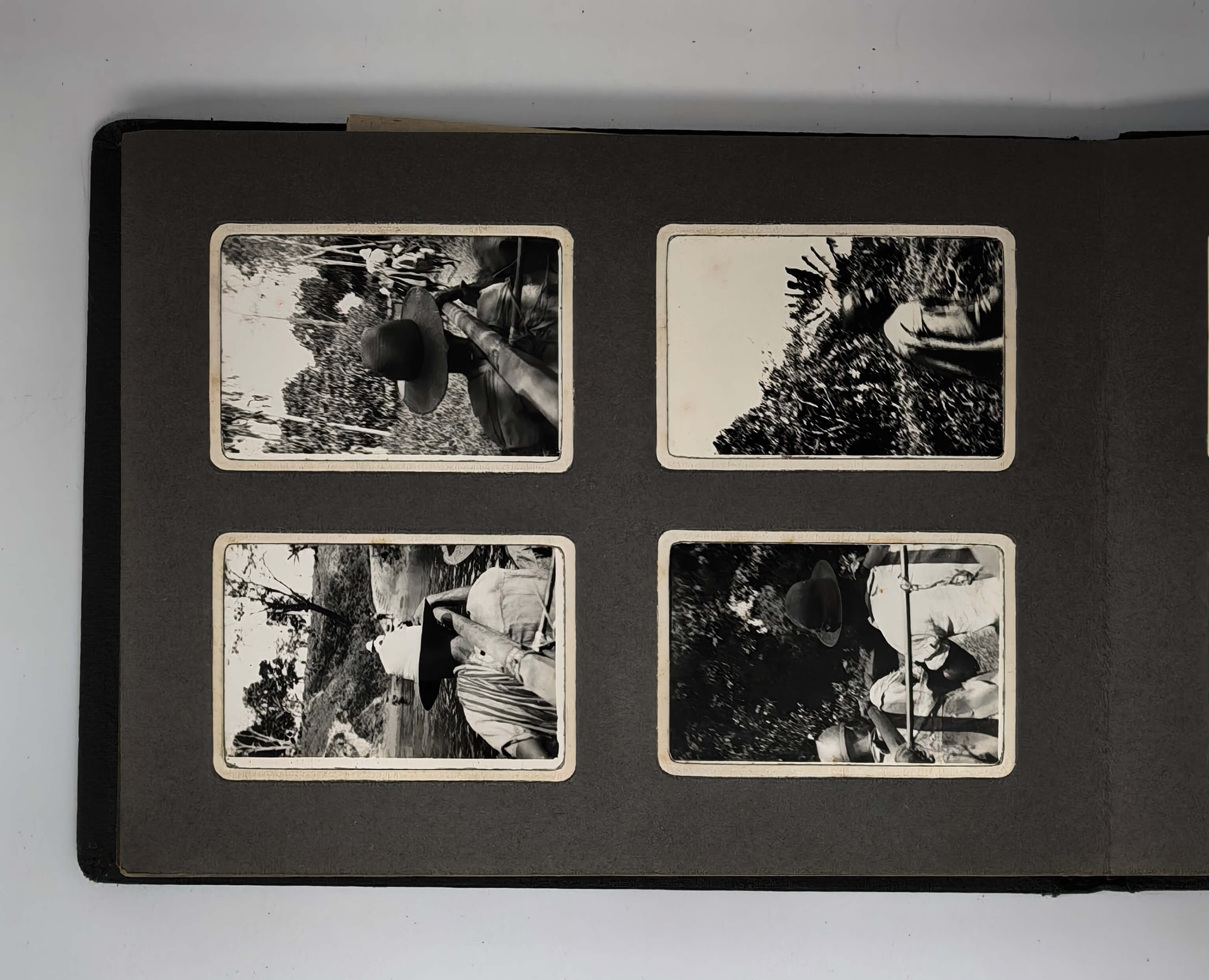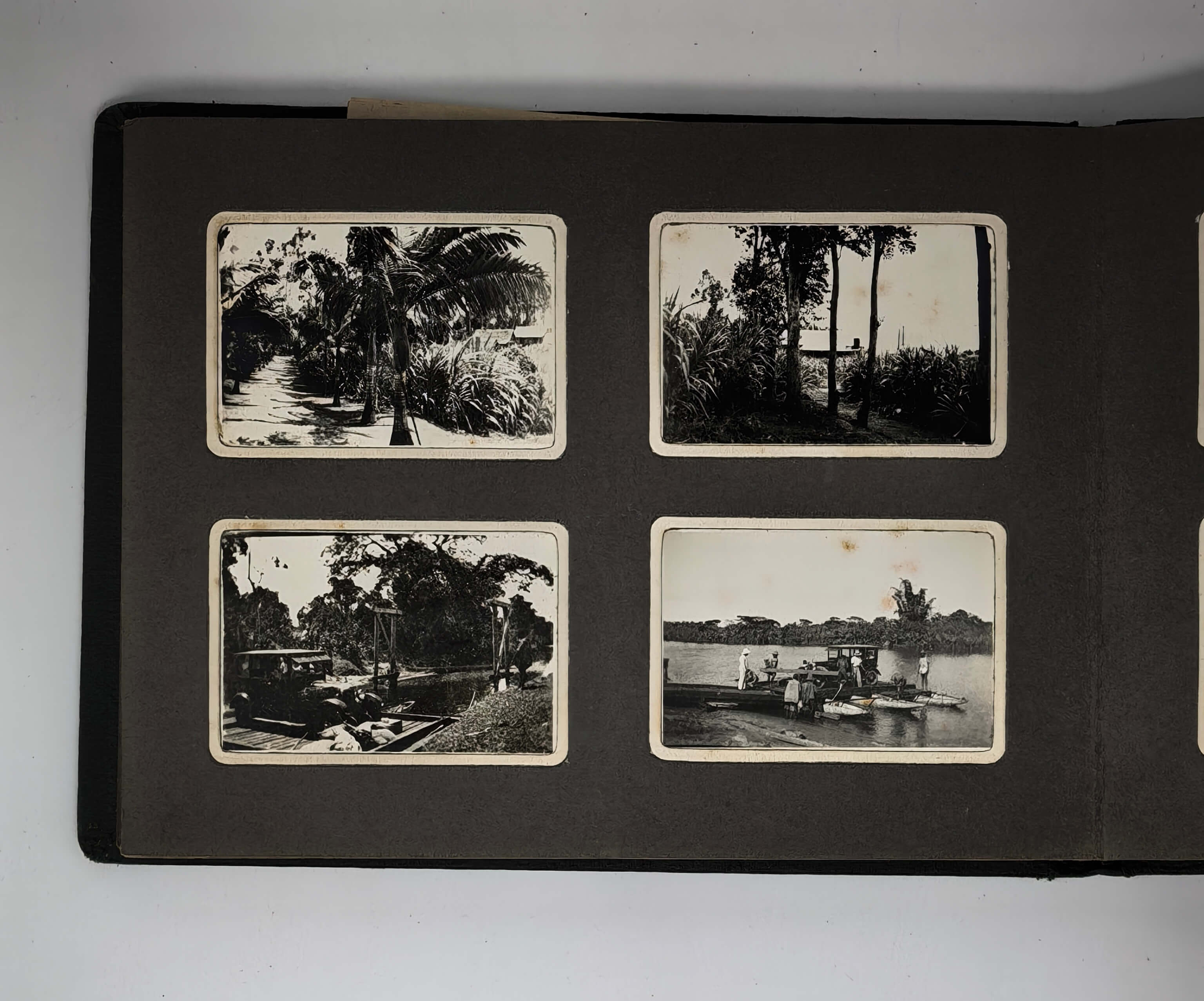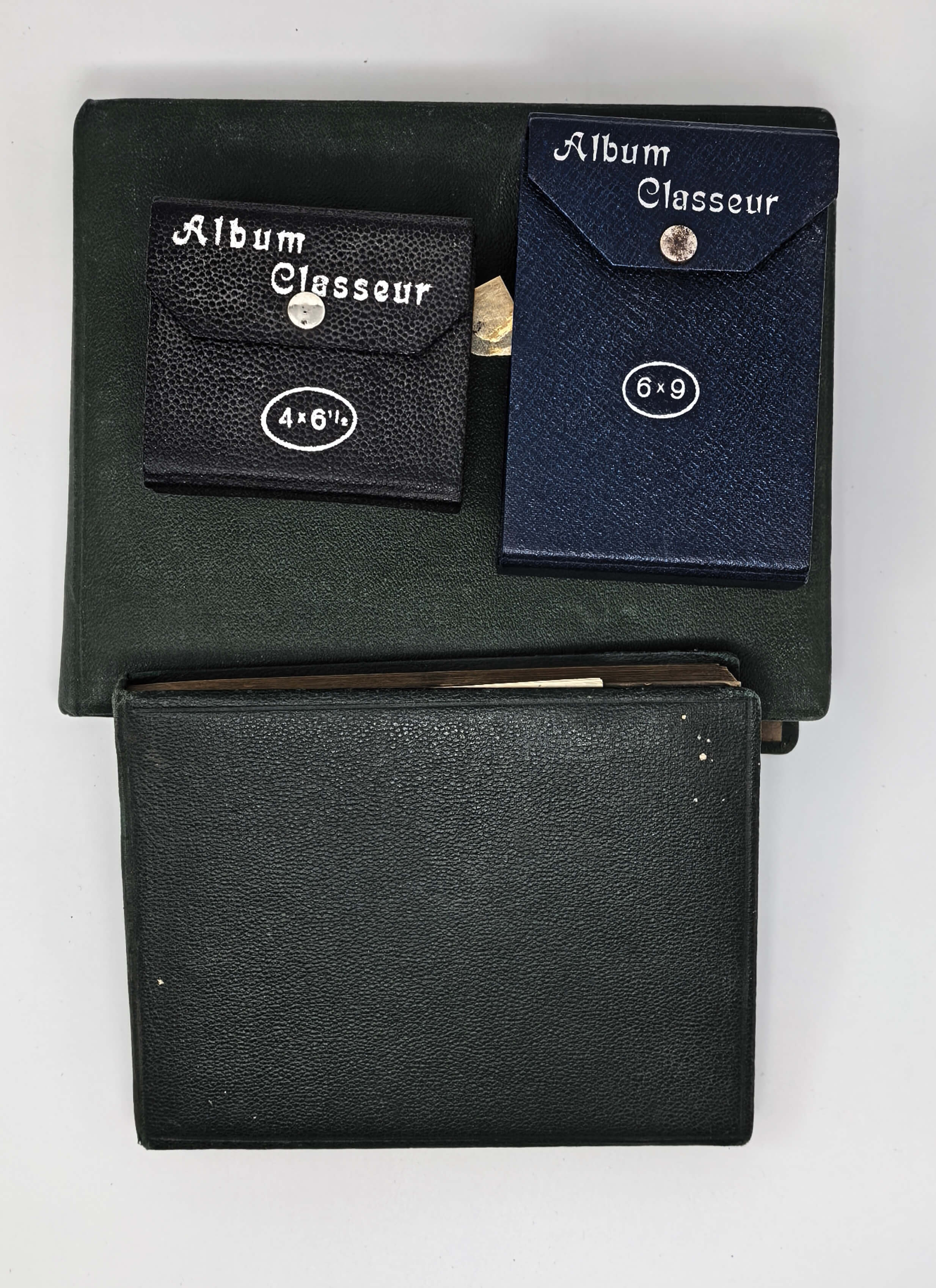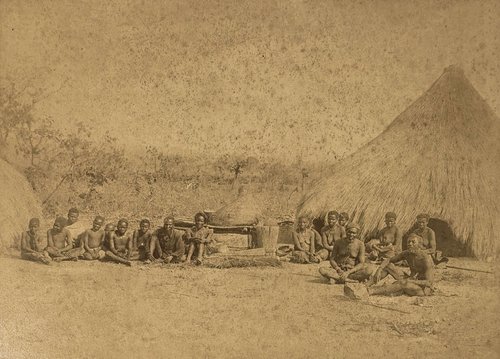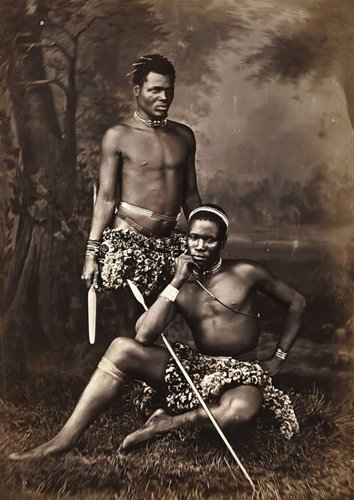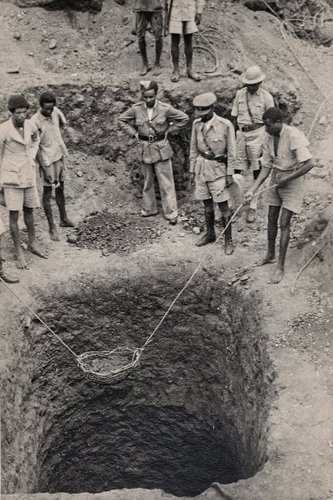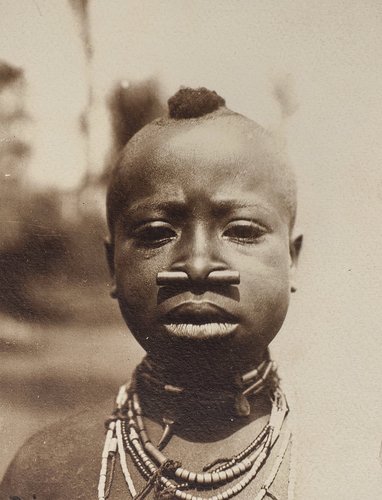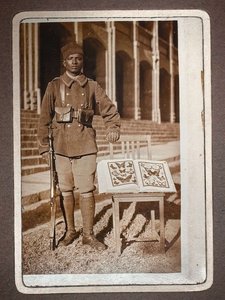
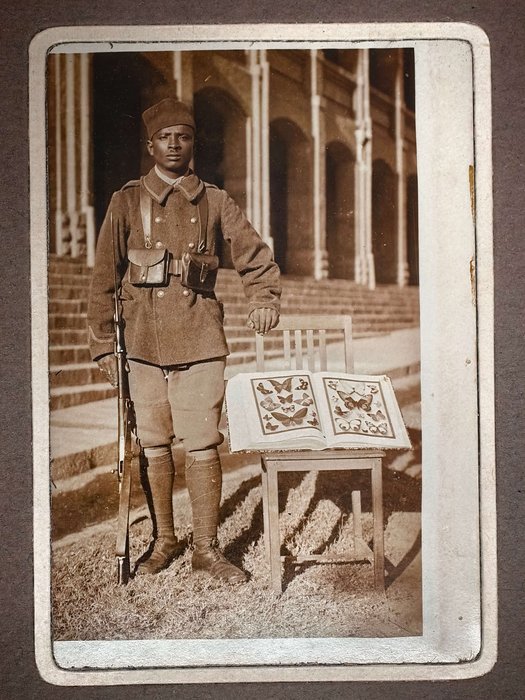
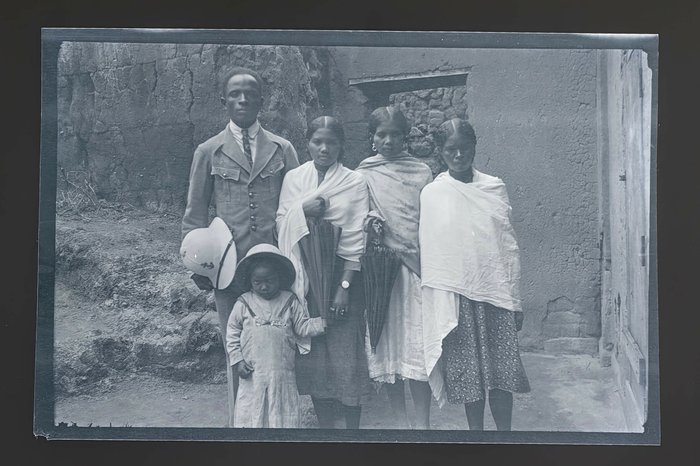
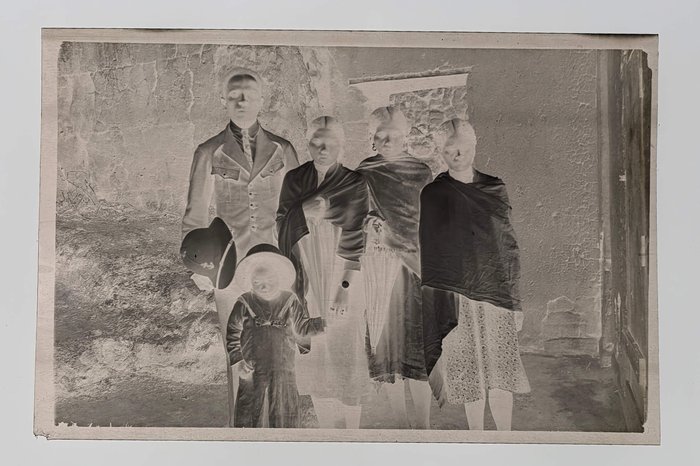
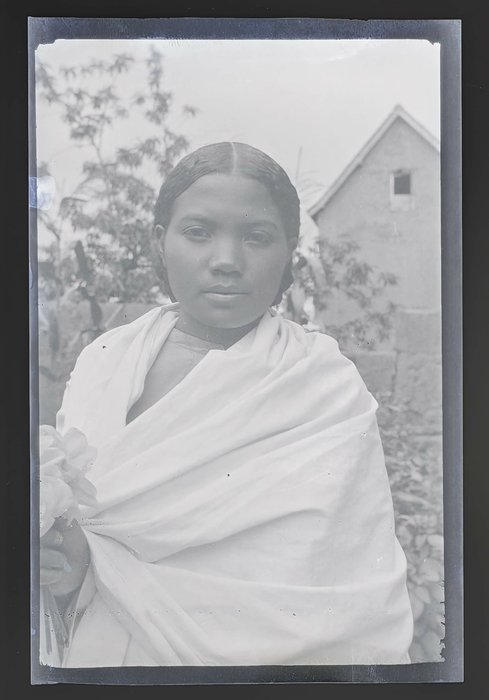
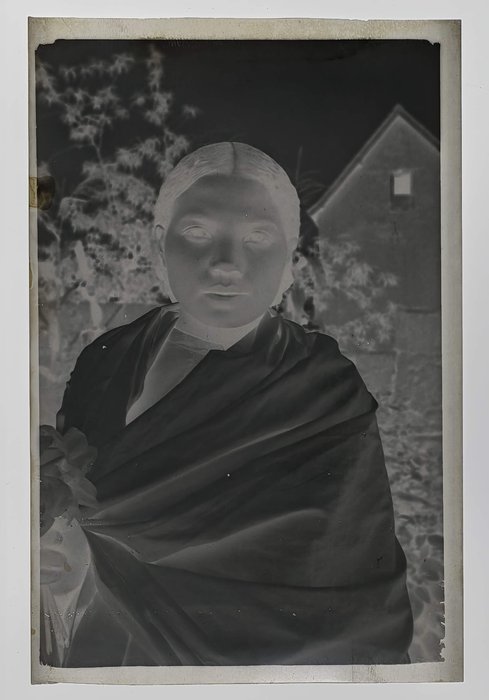
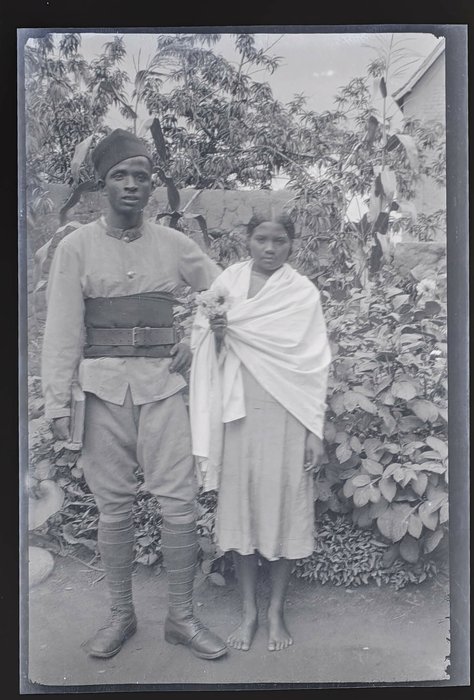
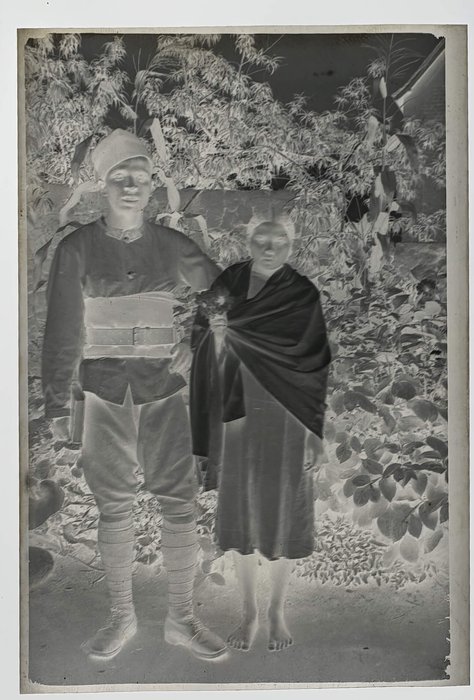
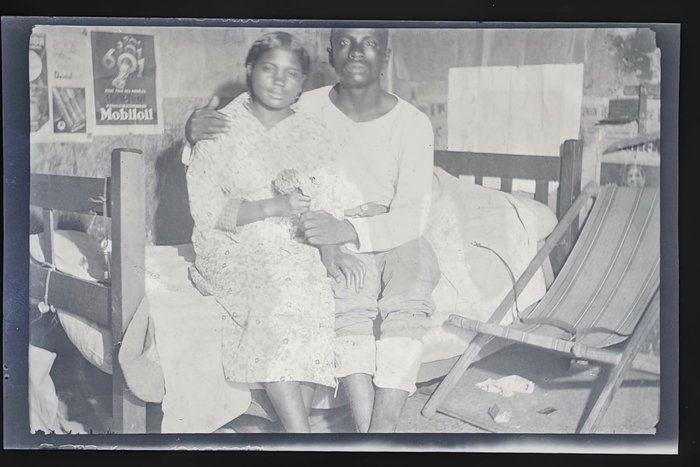
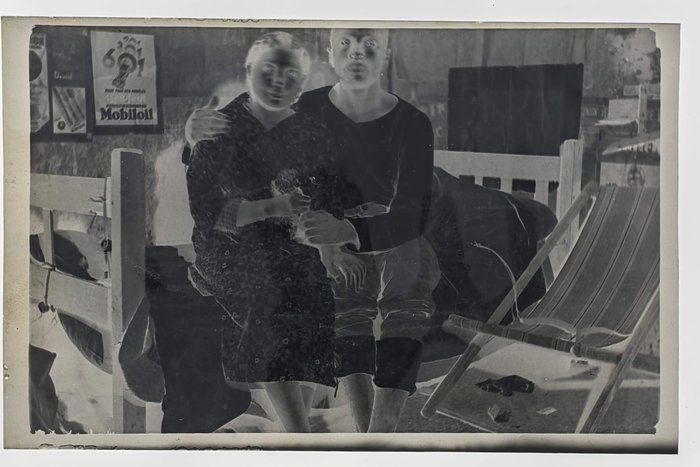
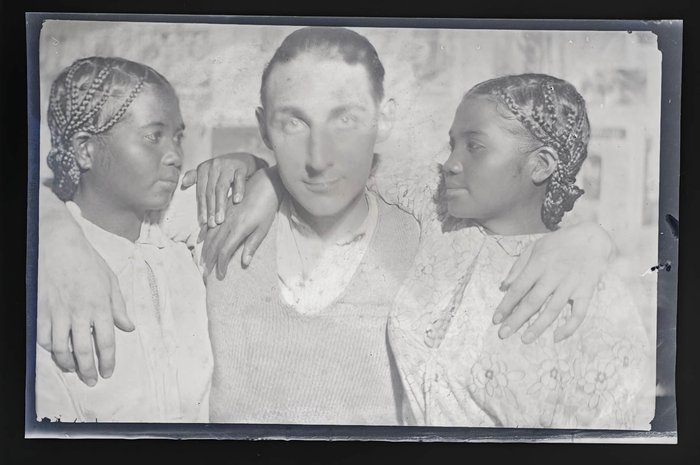
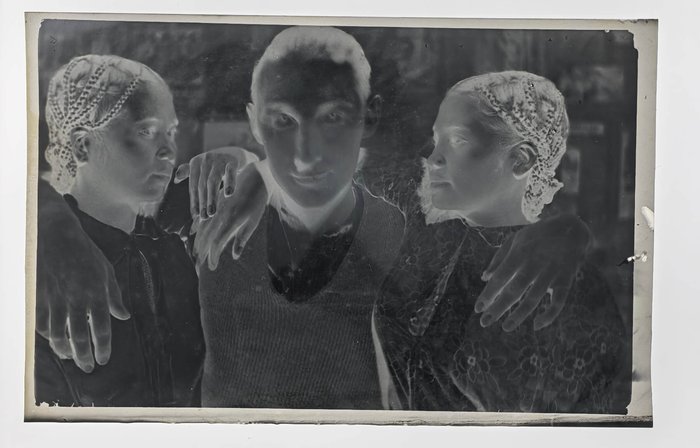
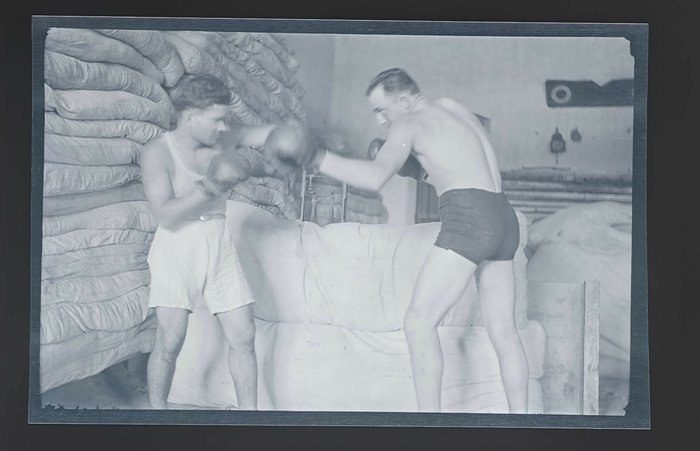
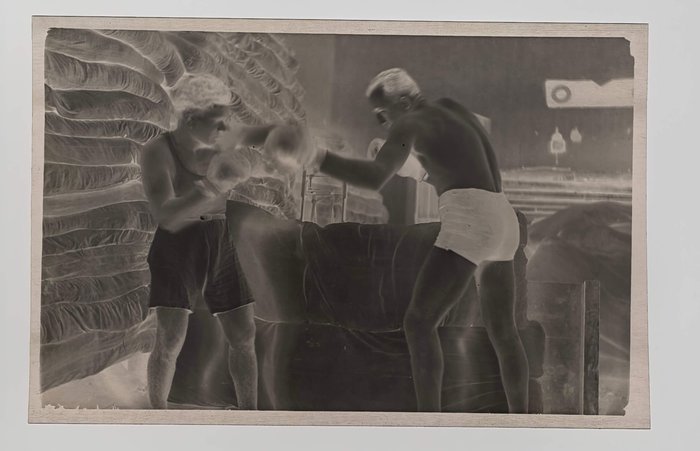
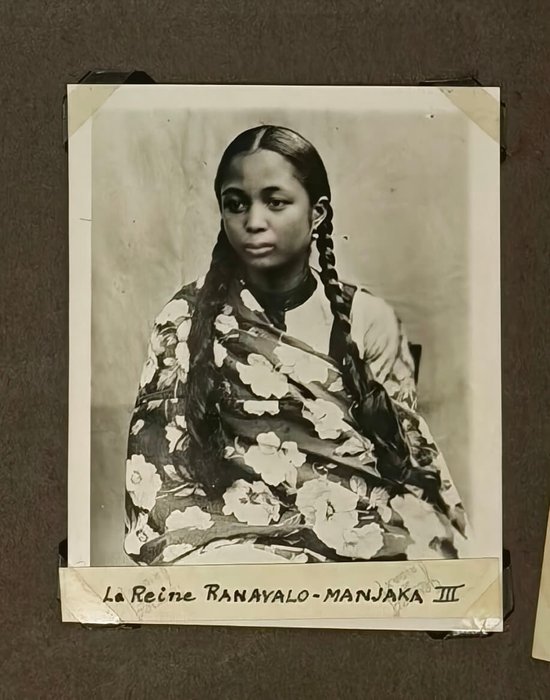
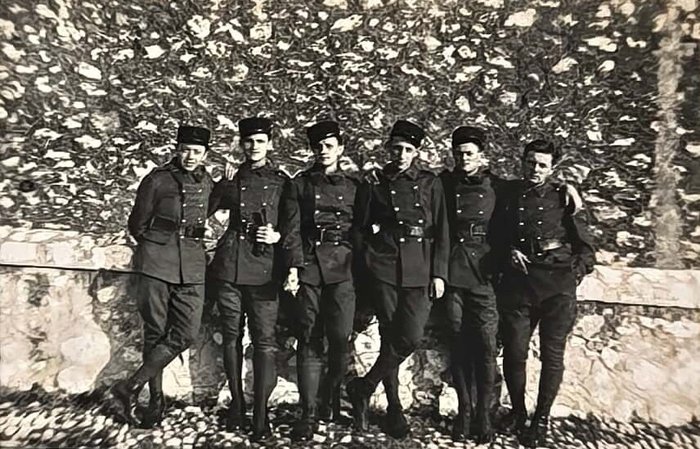
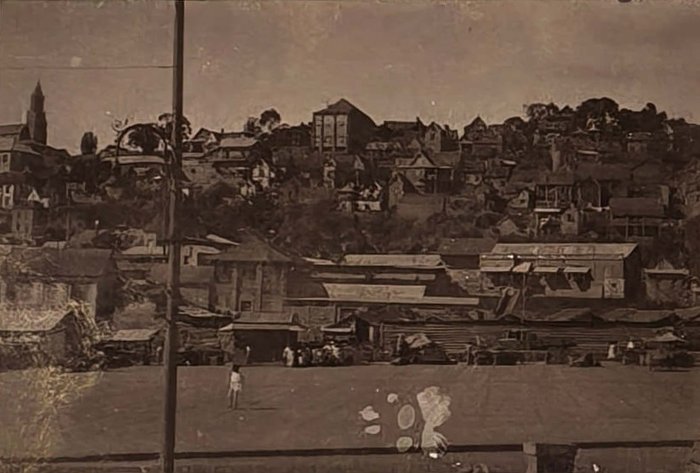
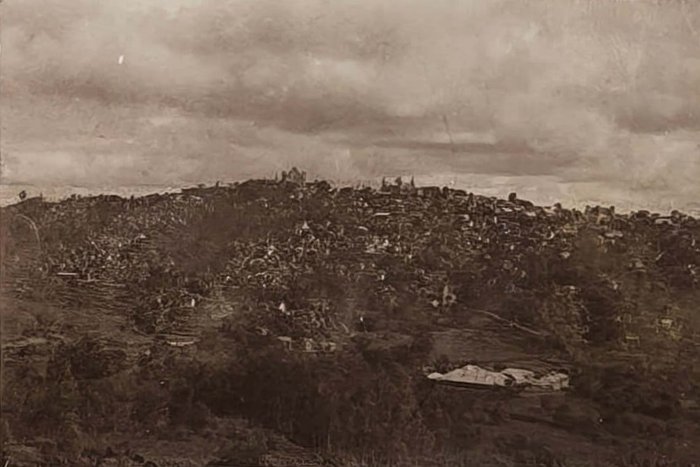
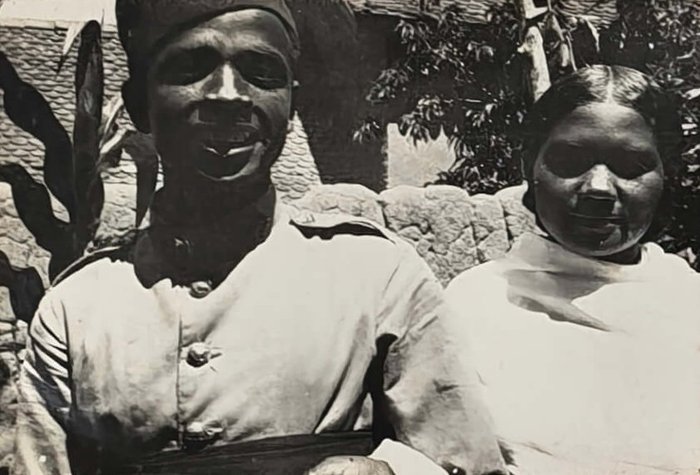
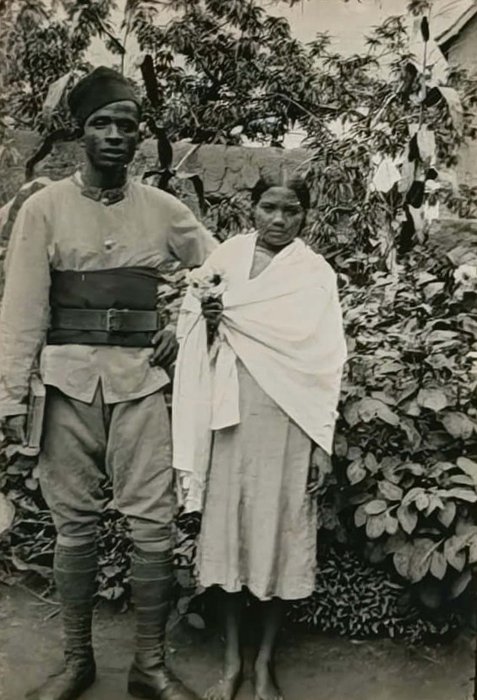
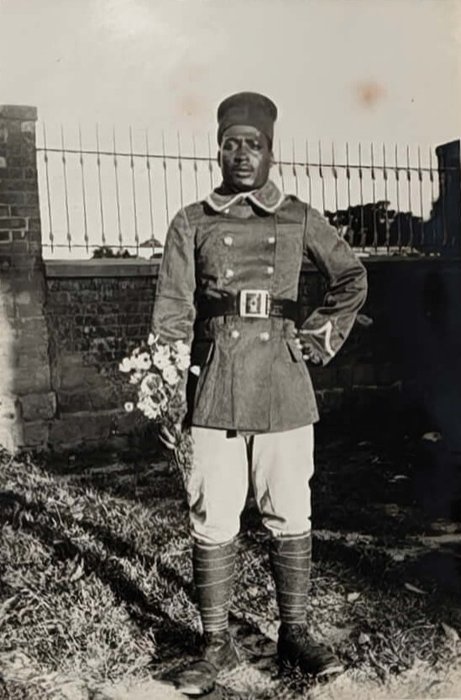
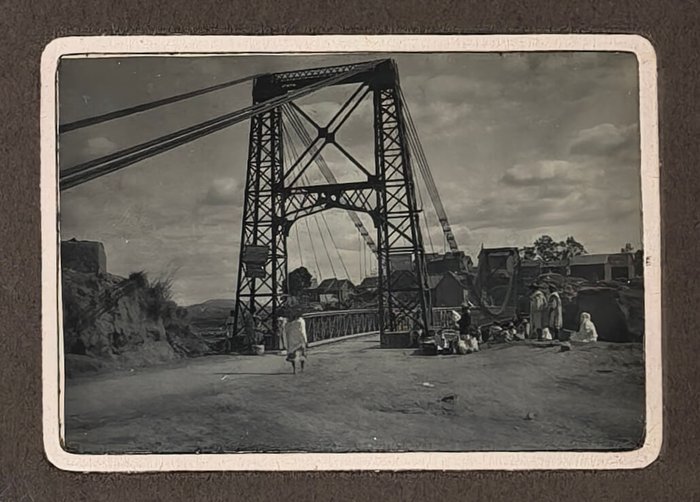
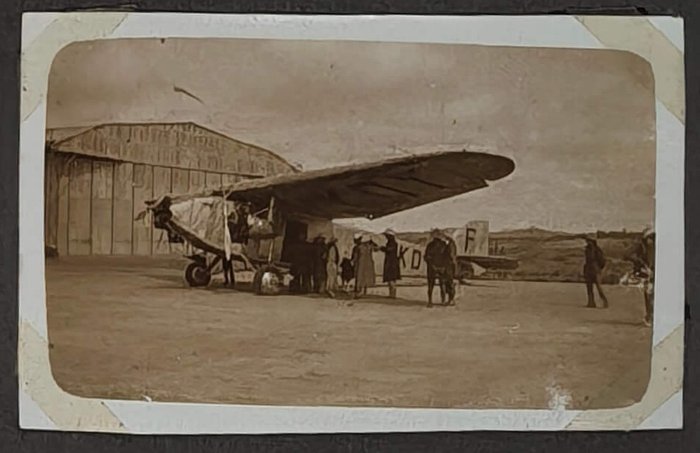
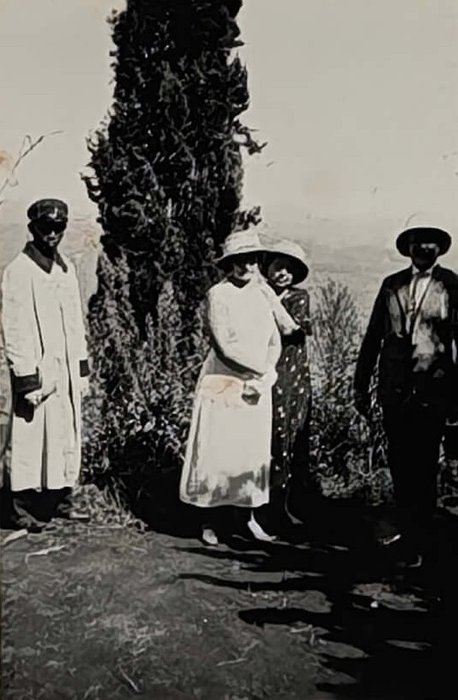
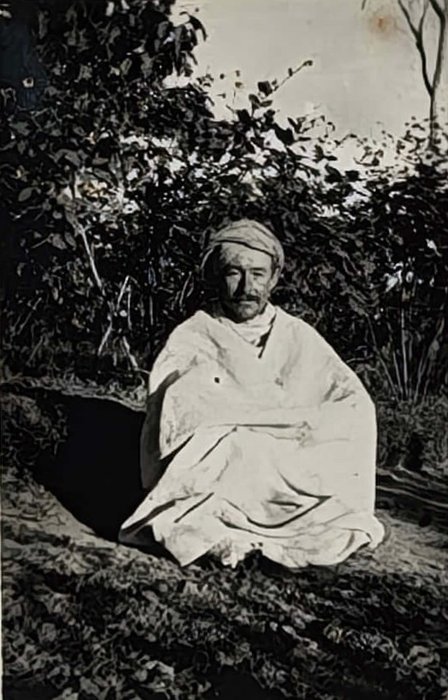
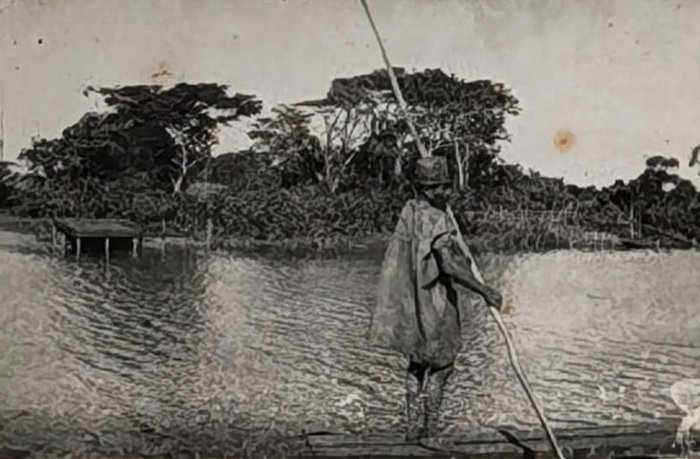
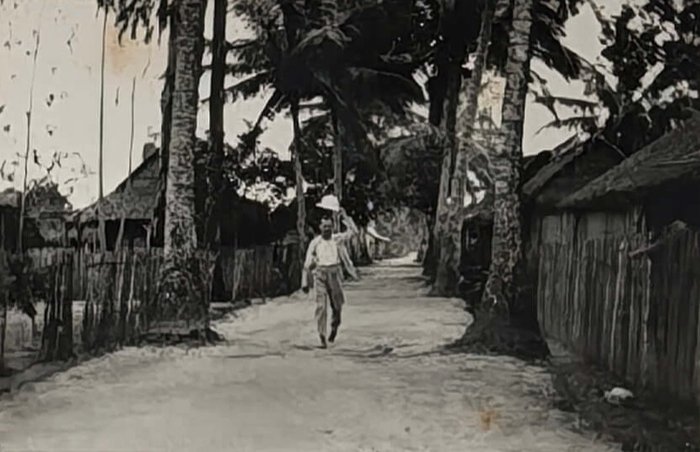
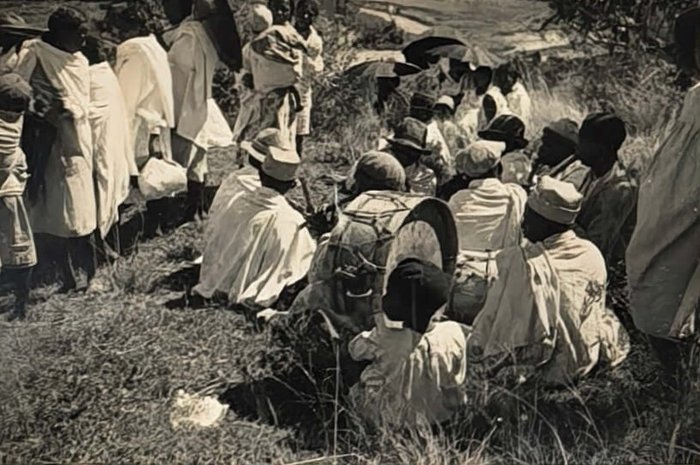
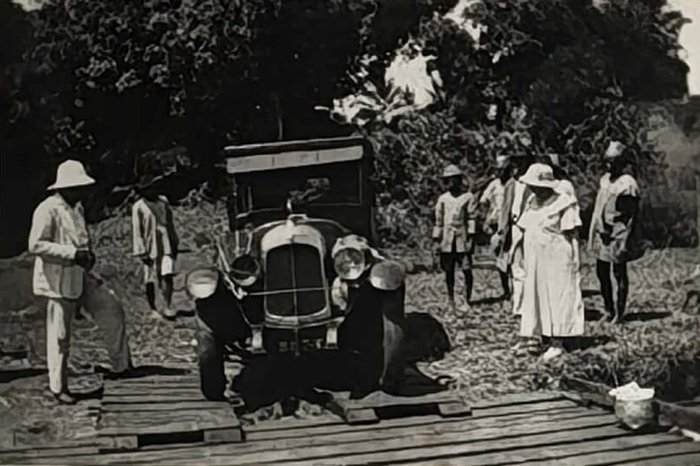
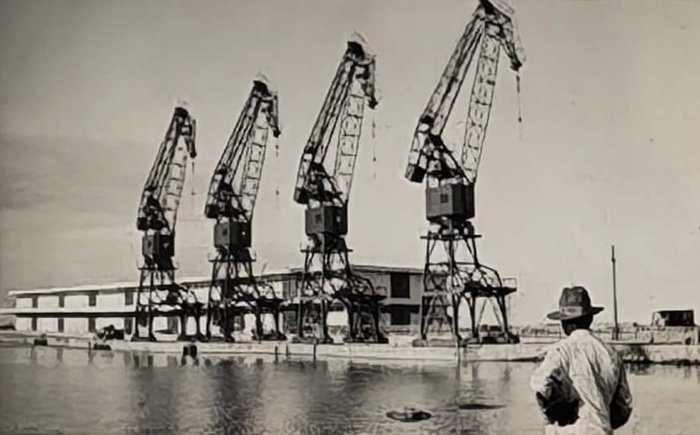
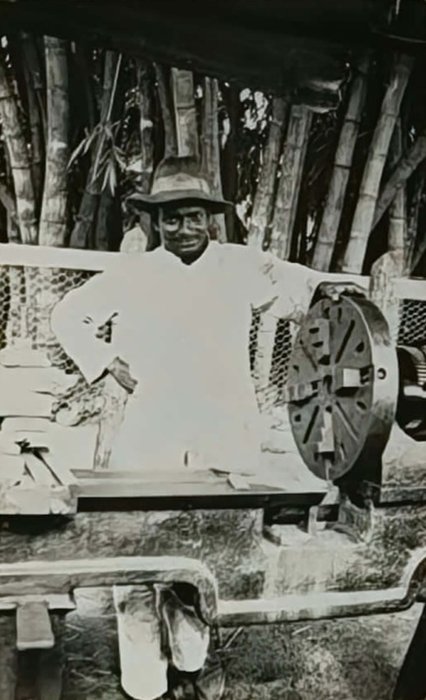
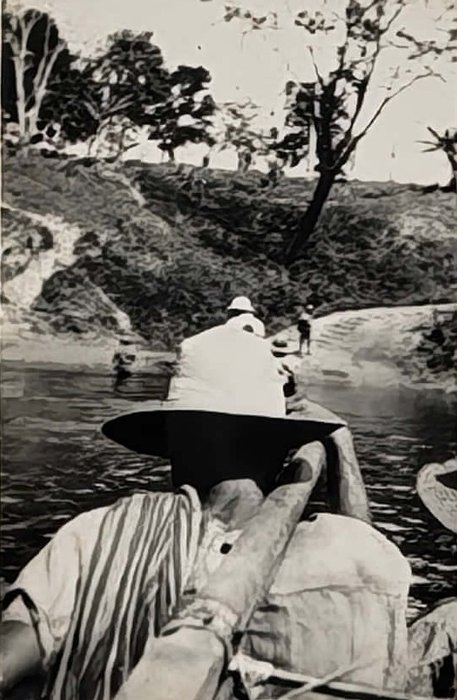
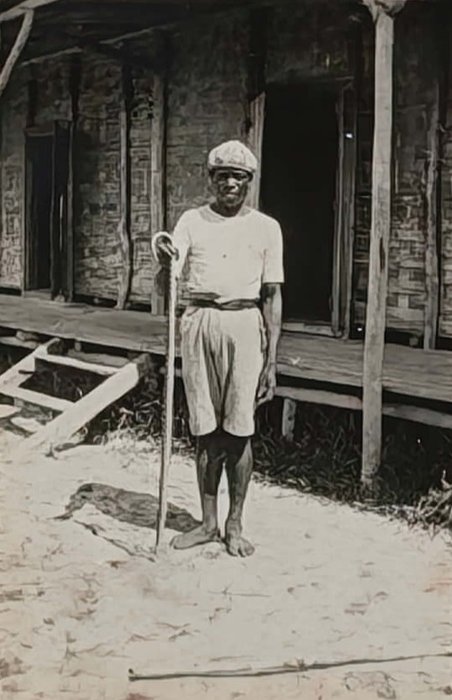
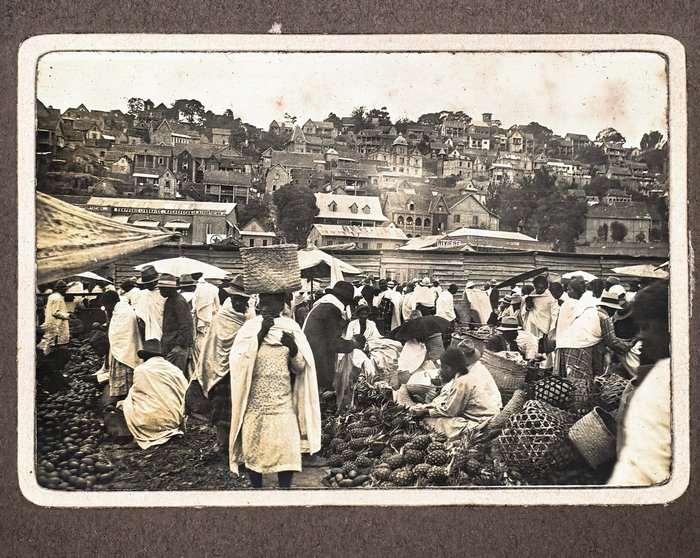
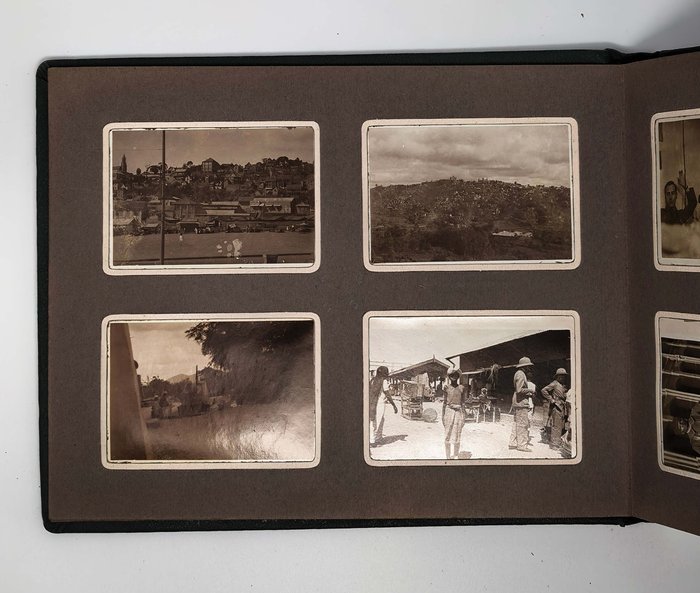
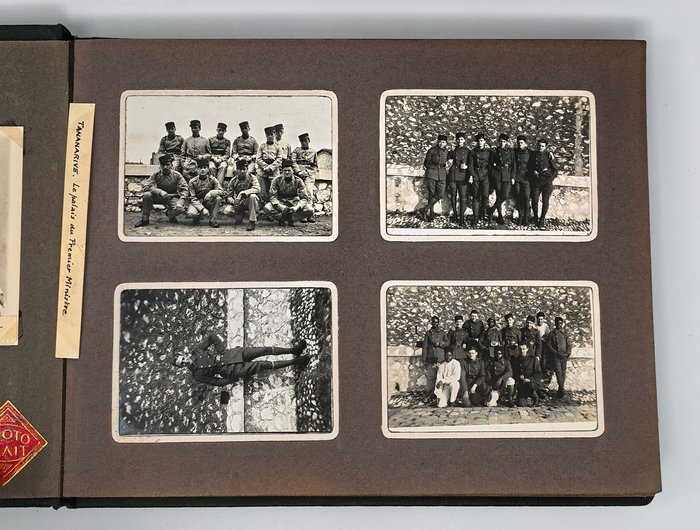
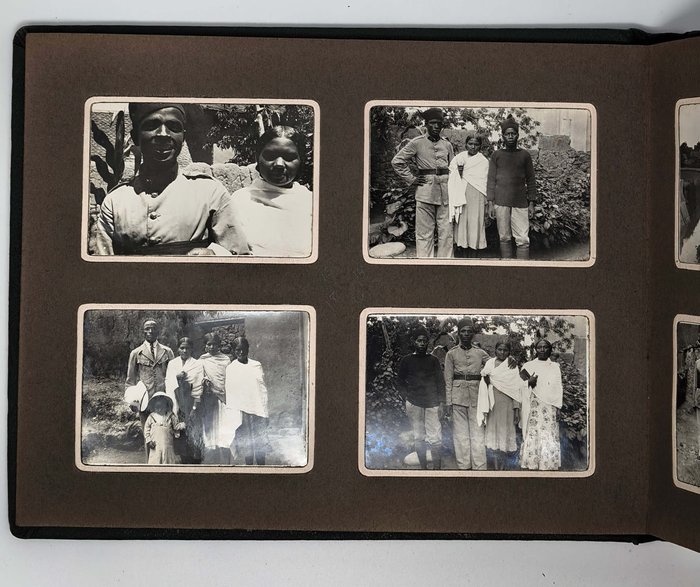
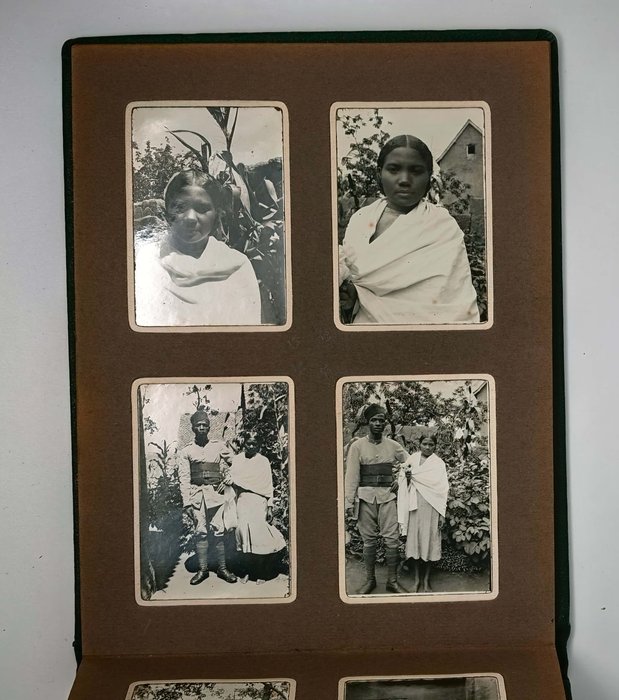
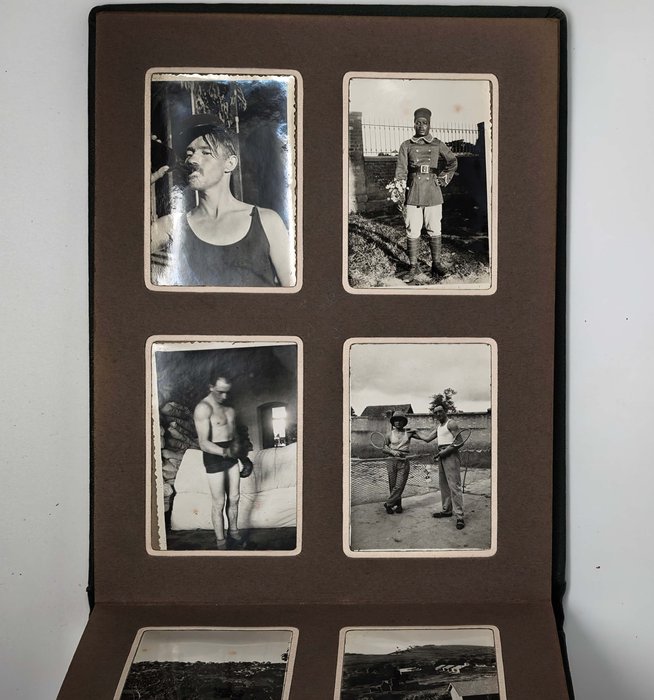
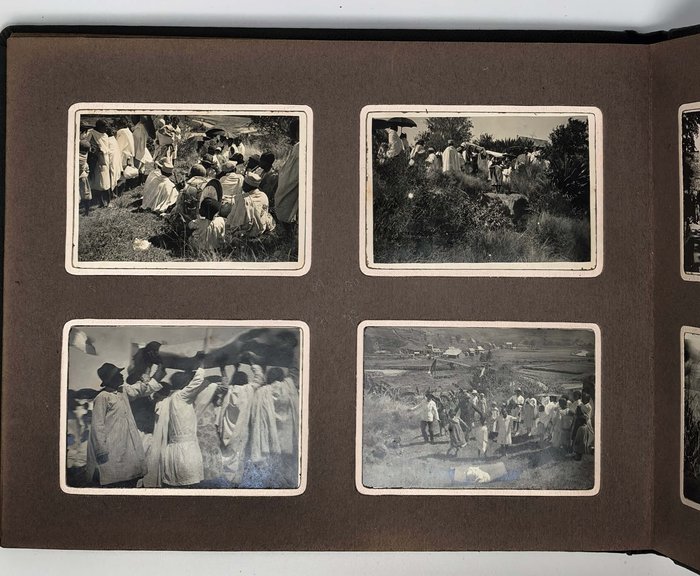
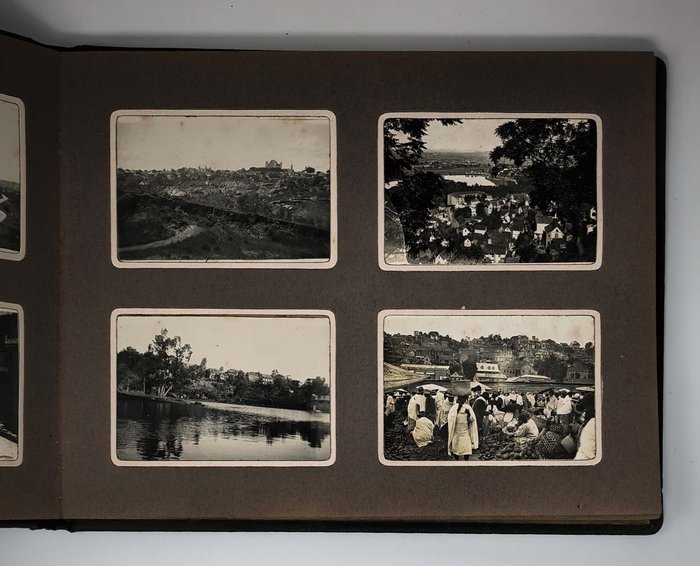
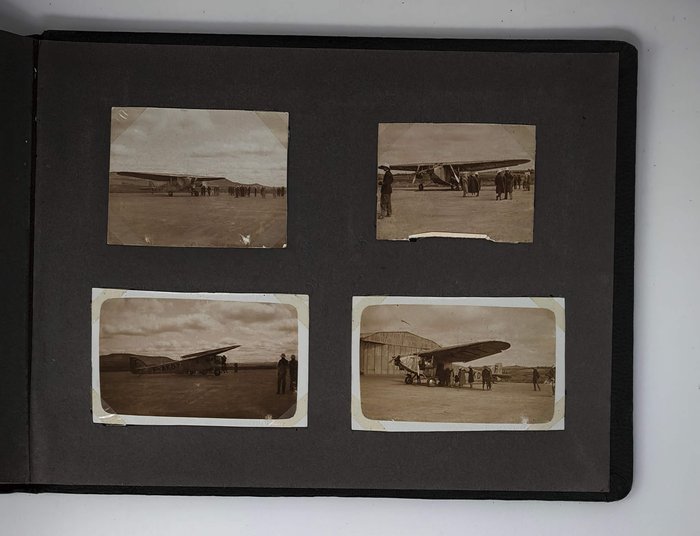
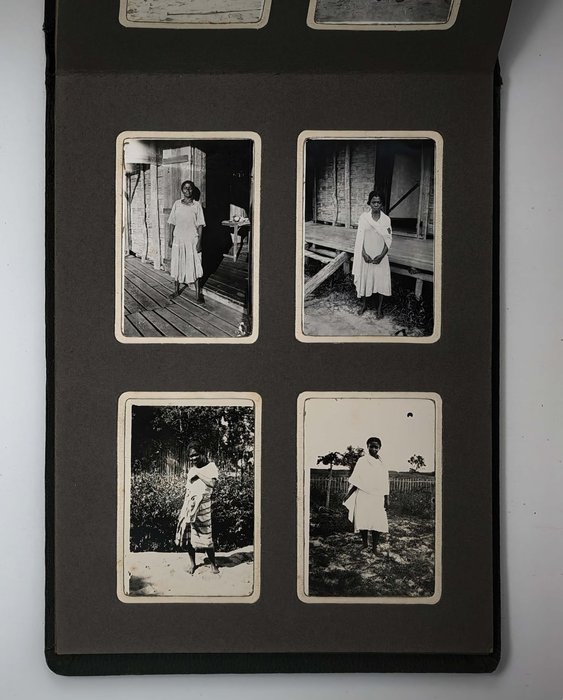
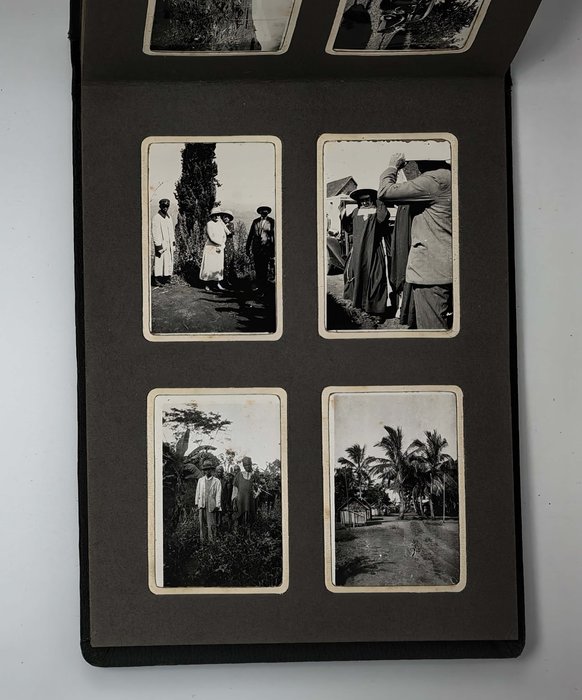
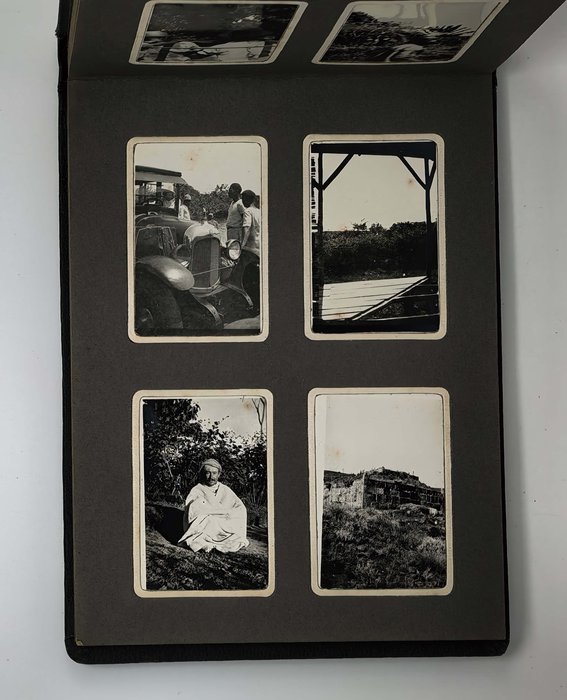
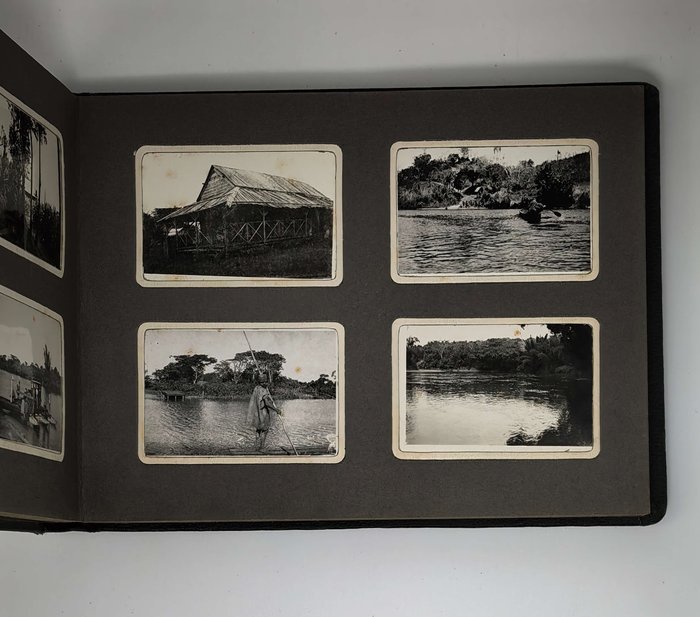
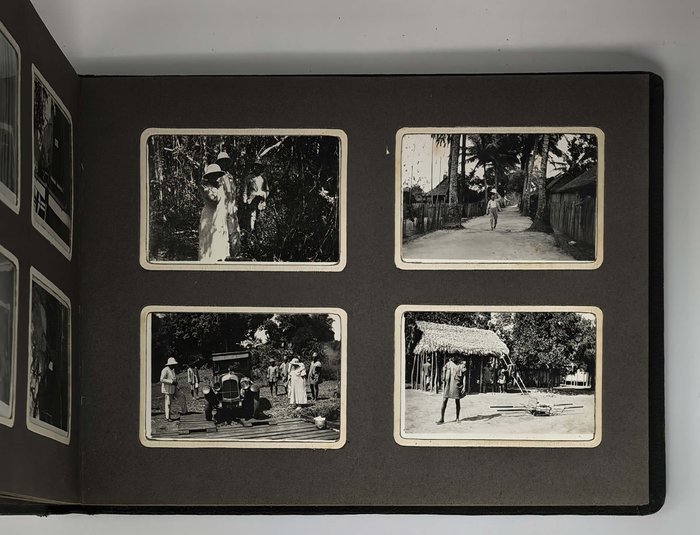
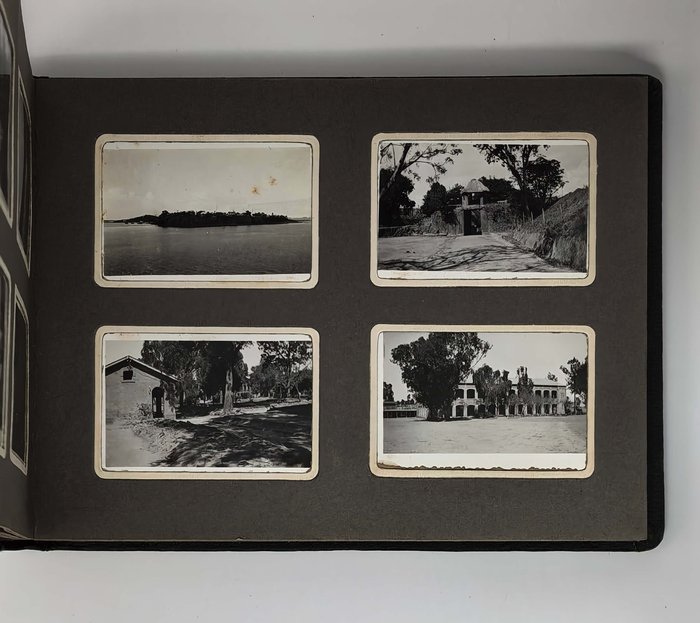
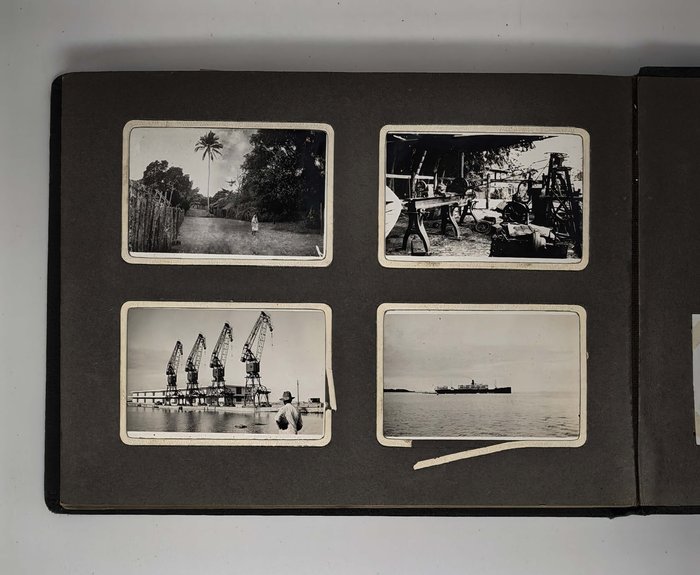
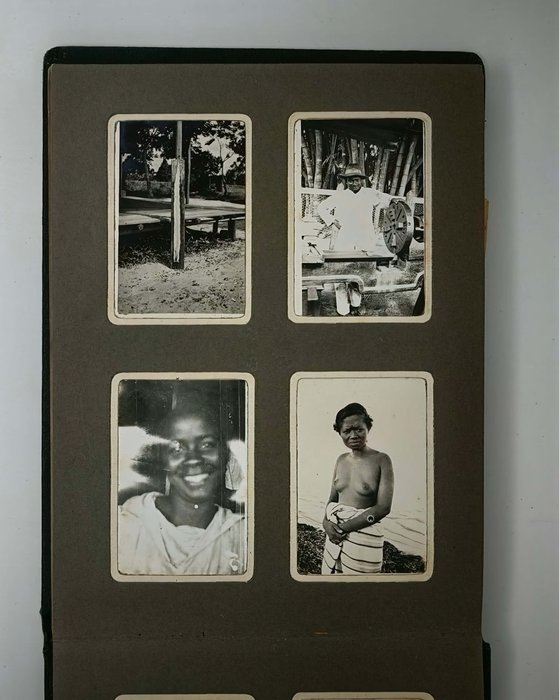
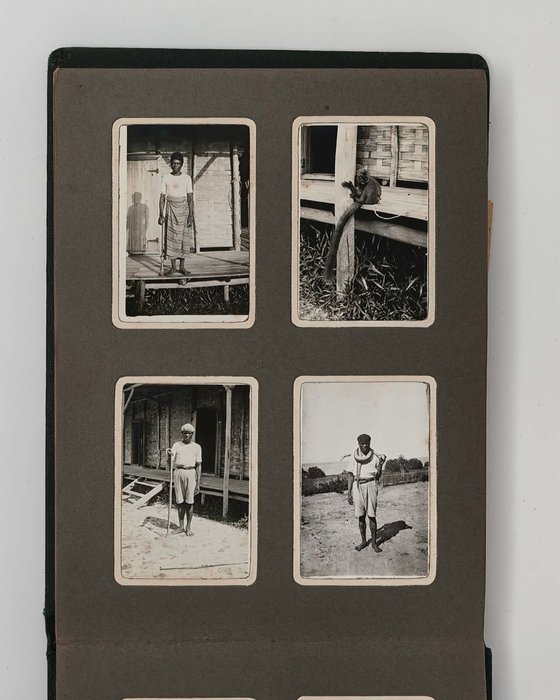
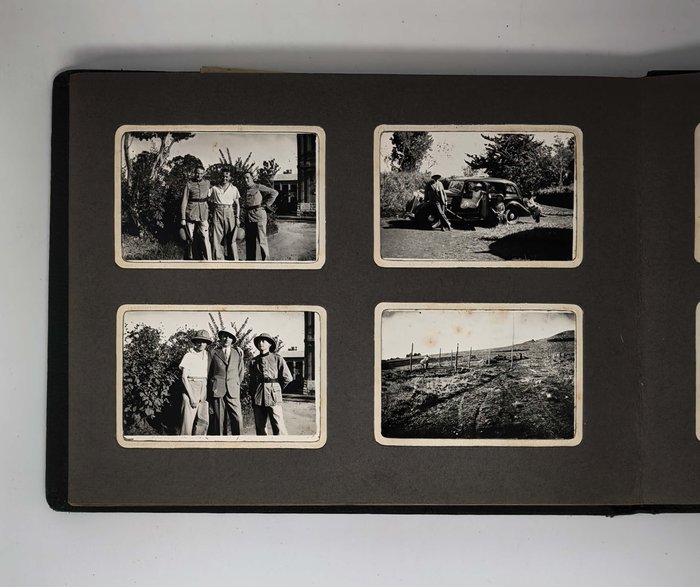
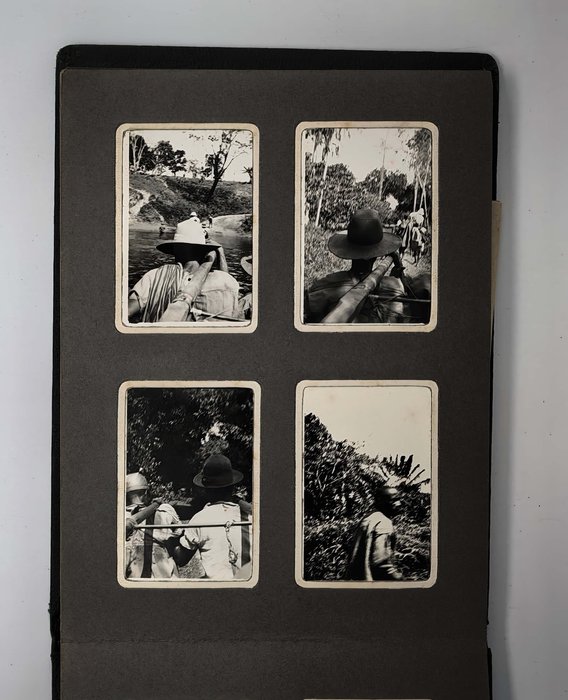
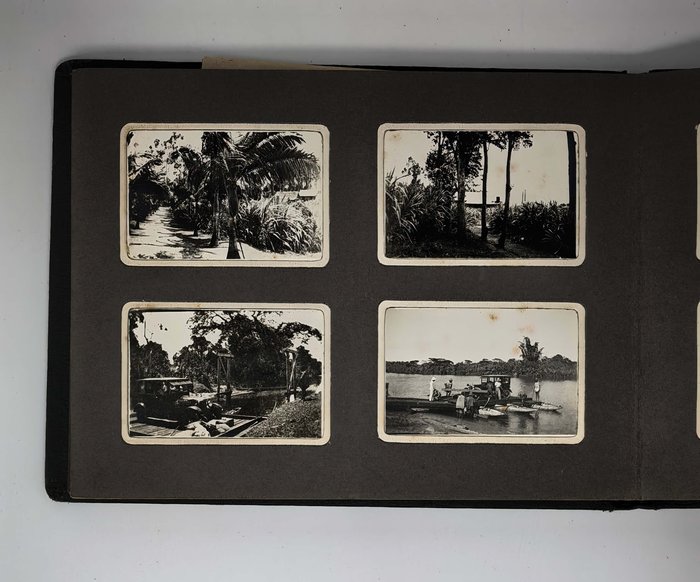
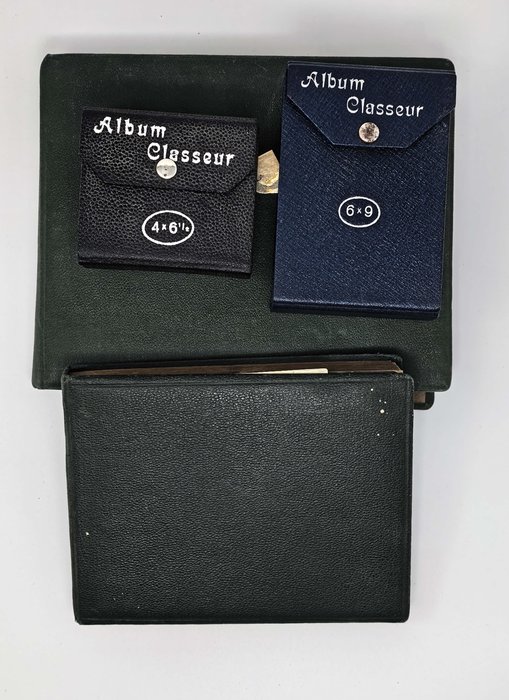
#PF32
Ca. 1930s
Oblong Octavo album (ca. 19x22,5 cm or 7 ¼ x 9 in). 12 card stock leaves. With 103 original mounted gelatin silver photos, mostly snapshots ca. 6,5x9 cm (2 ½ x 3 ½ in); three studio photos mounted on the inner side of the front cover are 7,5x9,5 cm (2 ¾ x 3 ¾ in). With two loosely inserted leaves of paper ca. 21x13,5 cm (8 ¼ x 5 ¼ in) with period manuscript ink captions in French to all snapshot photos; three studio photos with mounted period paper labels with manuscript ink captions. Period green full cloth album. Binding slightly rubbed on extremities, several images slightly faded, a couple of photos detached but present; overall a very good album.
Oblong 12mo album (ca. 14x18,5 cm or 5 ½ x 7 ¼ in). 12 card stock leaves. With 100 original mounted gelatin silver photos, mostly ca. 4,5x7 cm (1 ¾ x 2 ¾ in). With three loosely inserted leaves of paper ca. 21x13,5 cm (8 ¼ x 5 ¼ in) with period manuscript ink captions in French to all photos. Period green full cloth album. Binding slightly rubbed on extremities, several images slightly faded, but overall a very good album.
With two period folders ca. 8,5x12,5x3,5 cm (3 ¼ x 4 ¾ x 1 ½ in) and ca. 8x9x3 cm (3 x 3 ½ x 1 ¾ in) with 45 and ca. 95 film negatives ca. 6x9 cm (2 ¼ x 3 ¼ in) and ca. 4x6,5 cm (1 ¾ x 2 ¾ in) respectively. Several negatives faded or blurry, several tissue paper pockets housing negatives with minor tears or losses, but overall very good folders.
Historically significant collection of two albums with ca. 200 well-annotated gelatin silver amateur photographs, supplemented with ca. 140 original film negatives, taken by one “Pierre Le Roux,” a young French military man, who served in Madagascar in ca. 1934-1935 (apparently, in the Third Battalion of the “1er Régiment Mixte de Madagascar,” stationed in the Soanierana neighbourhood of Antananarivo). The photos are supplemented with several paper leaves with manuscript captions, identifying the time and location of images and often containing interesting historical details.
Over seventy photos show Madagascar’s capital Tananarive (Antananarivo) and environs: general views of the city’s neighbourhoods and hills, French military compound where the compiler served (barracks and the surrounding areas taken from above, scenes with the compiler and other French service men boxing, playing tennis, “le pavillon d’Honneur du 3eme Battalion…,” &c.), the Queen’s Palace, Gallieni Square, outdoor markets and street scenes, Lake Anosy, Lake Tsymbazaho, Anozirato suspension bridge, nearby rice fields, Ikopa River, &c. Four images show airplanes on “Aerodrome d’Ivato” (modern-day Ivato International Airport, the gateway to Antananarivo), which (according to the manuscript captions) carried out one of the first mail deliveries between France and Madagascar. Very interesting are four scenes from a Famadihana or “the turning of the bones” ceremony photographed near Antananarivo. There are also several views of the town of Ambatolampy and environs (city market, French military camp and exercises), and the Royal Rova (castle) in Ambohimanga.
Over fifty images show the port of Tamatave (Toamasina) on Madagascar’s eastern coast and nearby towns of Fenerive (Fenoarivo) and Foulpointe (Mahavelona), where the compiler lived for some time in 1935. The photos include views of “la case de Pierre” in Foulpointe on the ocean shore, the harbour of Fenerive, the port of Tamatave, a sugar cane distillery in Mamandrahana and its owners “Mr. and Madame Leroux (Lina),” Ivondro and Fanifara Rivers, local villages (Fanifara, Ihorama), the environs of “Brickaville”, sugar cane and coffee plantations, a mechanic’s workshop, portraits of “Pierre’s” servants and girlfriends, &c.
About ten photos illustrate the compiler’s automobile trip with the Leroux family to Antsirabe in the central highlands of Madagascar. The images show the travellers, their car and native driver, as well as “notre cousine Thérèse Lamiot, supérieure provinciale des Religieuses Marie Reparatrices” (Catholic society of the Sisters of Mary Reparatrix). Another caption additionally identifies her as “Mère N.D. de Liesse = Thérèse Lamiot.” There are also several views of Nosy Be Island, the city of Majunga (Mahajanga), portraits of Malagasy farmers, shepherds, families, children, &c.
Over forty images document the compiler’s voyage to Madagascar on board the “Messageries Maritimes’” steamer “Azay-le-Rideau” in the spring of 1934, showing Marseille (port and harbour, quarters of “Dépôt des Isolés Coloniaux”), scenes on board the steamer, Port Said and Suez Canal, Dazoudzi (Mayotte archipelago), Zanzibar, Mombasa, &c. The film negatives generally match the photos in both albums, with several additional images not included in the albums.
Overall an interesting extensive collection of original amateur photos and film negatives of Madagascar and its people in the 1930s.

